Birth Centenary of Poet Jasimuddin 2003
|
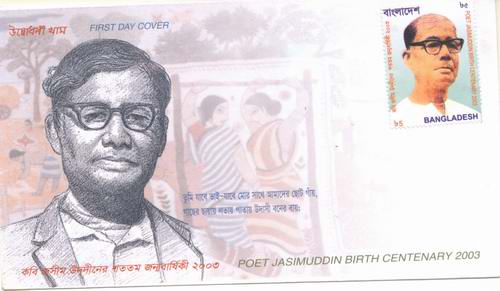
|
|
Type: Commemorative
Sub Type: Personality
Date of Issue: 1/1/2003
Size of Stamp: 42x32 Preforation: 12.5
Stamps in each Sheet: 50
|
1.Institute on the Pallikobi
demanded
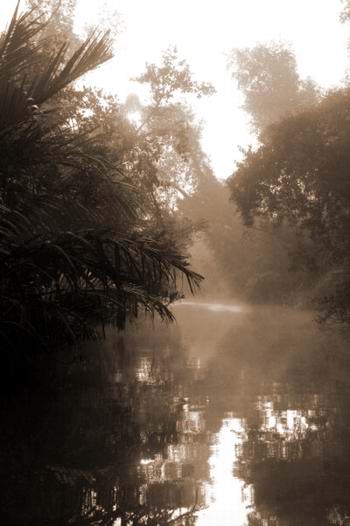 We are rich with the literary gift
from three talents: Rabind-ranath- Nazrul -Jasim Uddin.
They are unique in their own world of art. Not only in
poetry, but they are also distinct bright stars in the
world of melody. Jasim Uddin created his own world of
music in folk style just as Tagore created his world in
Dhrupadi and Nazrul in Kheyal. To practise the Viswakobi
we have Shanti Niketan and Viswa Bharati, for our
Jatiyo-kobi we have the Nazrul Academy and Nazrul
Institute. But it's a matter of regret that still we do
not have an institute to remember and practice the art of
our beloved Pallikobi, the speakers menioned in a meeting
observing the 100th birth anniversary of Pallikobi Jasim
Uddin by the Nazrul Academy at Moghbazar on June
09. We are rich with the literary gift
from three talents: Rabind-ranath- Nazrul -Jasim Uddin.
They are unique in their own world of art. Not only in
poetry, but they are also distinct bright stars in the
world of melody. Jasim Uddin created his own world of
music in folk style just as Tagore created his world in
Dhrupadi and Nazrul in Kheyal. To practise the Viswakobi
we have Shanti Niketan and Viswa Bharati, for our
Jatiyo-kobi we have the Nazrul Academy and Nazrul
Institute. But it's a matter of regret that still we do
not have an institute to remember and practice the art of
our beloved Pallikobi, the speakers menioned in a meeting
observing the 100th birth anniversary of Pallikobi Jasim
Uddin by the Nazrul Academy at Moghbazar on June
09.
Mayor Sadek Hossain Khoka attended the ceremony
as the chief guest, while executive member of the Nazrul
Academy, Dr. Nashid Kamal, poet Syed Shamsul Huda,
music-researcher Asadul Haque spoke, recollecting their
memories with the poet. The programme was presided over by
Hasna Moudud, daughter of the poet and an executive member
the Academy. Mayor Sadek hossain Khoka guaranteed to hand
over the land on which the Academy is situated to the
academy.
The most important event of the occasion
was handing over of the two recently discovered
handwritten poems of the Pallikobi by Asadul Haque
collected from one of his relatives. Until then this
manuscript was unfamiliar even to the poet's family, said
Hasna Moudud.
'A poet like Jasim Uddin with
non-communal diction, in touch with nature and its
objects, is still rare after Nazrul', said Syed Shamsul
Huda in his speech. A cultural progamme followed the
discussion participated by Nashid Kamal, two sons of the
great singer Abdul Alim--Asgar Alim and Zahir Alim, Bina
Majumder--the granddaughter of Kanai Shil who reformed the
Dotara, and many others. (Kausar Islam Ayon; Daily Star,
June 12,, 2003)
 |
Bandhu
Rangila Music & Lyrics by Jasim Uddin, Singer: S.
D. Burman
Nadir
Kul Nai Music and Lyric Jasim uddin, Singer: Abdul
Alim
Ujan
Ganger Naya Music &Lyric by Jasim Uddin,
Singer:Nina Hamid
Amay
Bhasali Re.. Music and Lyrics by Poet Jasim Uddin,
Singer: Runa Laila
Amay
Bhasalire..Lyrics and music by Jasim Uddin, Singer:
Ferdausi Rahman
Back to Content
2.Year-long celebration of Jasim Uddins birth
centenary
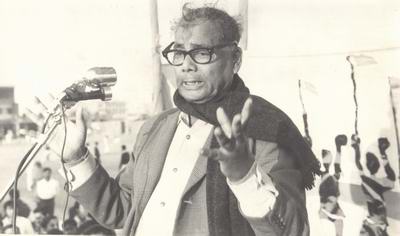 Poet Jasim Uddin was born
on the first of January in 1903 in Tambul Khana in
Faridpur and died in 1976 in Dhaka. Among his 28 books the
most popular are Nakshi Kanther Math, Sojan Badiyar Ghat,
Baluchar, Dhan Khet, Rubati (all poetry); only novel Boba
Kahini; Padmar Par (lyric drama), Beder Meye, Smitir Pat,
Bansher Banshi, Madu Bala (all plays); Ganger Par, Rangila
Nayer Majhi (lyrics); only juvenile book Dalim Kumar;
Chale Musafir, Jader Dekhechhi, Thakur Barir Anginay,
Jiboner Katha, Holde Pirer Desh, Je Deshe Manush Bara
(travelogues and reminiscences) etc. In his literary works
the poet has depicted rural life using dialects. That is
why he is called Palli Kobi the Rural
Poet. Poet Jasim Uddin was born
on the first of January in 1903 in Tambul Khana in
Faridpur and died in 1976 in Dhaka. Among his 28 books the
most popular are Nakshi Kanther Math, Sojan Badiyar Ghat,
Baluchar, Dhan Khet, Rubati (all poetry); only novel Boba
Kahini; Padmar Par (lyric drama), Beder Meye, Smitir Pat,
Bansher Banshi, Madu Bala (all plays); Ganger Par, Rangila
Nayer Majhi (lyrics); only juvenile book Dalim Kumar;
Chale Musafir, Jader Dekhechhi, Thakur Barir Anginay,
Jiboner Katha, Holde Pirer Desh, Je Deshe Manush Bara
(travelogues and reminiscences) etc. In his literary works
the poet has depicted rural life using dialects. That is
why he is called Palli Kobi the Rural
Poet.
Jasim Uddin was a professor in the
Department of Language and Literature of the University of
Dhaka from 1937 to 1943. Later he worked in the Department
of Communication of the then East Pakistan government. The
Rabindra Varati University in Kolkata honoured him by
conferring on him doctorate of literature for his
contribution to Bangla literature. During his student life
in the Calcutta University he collected Bangla folk
literature under the supervision of noted professor Dr.
Dinesh Chandra Sen. At that time his widely-read poem
Kabar (the grave) was included in the textbook for the
students at the matriculation level. It is a rare
distinction for any Bangali poet.
This year the
nation is celebrating the birth centenary of this star of
Bangla literature. The National Observance of Rural Poet
Jasim Uddin, a government-sponsored committee, is chalking
out a series of programmes to pay homage to the poet round
the year. The Jasim Foundation in Faridpur, that works in
collaboration with the administration to take care of the
poets works, held a 15-day fair called Palli Mela,
cultural functions, sessions of jari gan, kabi gan, bichar
gan and other folk activities presenting the works of
Jasim Uddin from the first day of January. The foundation
formed a 101-member committee and several sub-committees
to observe the occasion. All the programmes were held at
the Jasim Udyan adjacent to the poets ancestral home and
his grave in the tiny village of Gobindapur, four
kilometres off Faridpur town.
A pucca
(cemented) ghat (landing), in the fashion of Sojan Badiyar
Ghat, is being constructed at a cost of Tk. 9 lakh on the
bank of the river Kumar near the poets house. The proposed
ghat is named after his famous work on the life of the
gypsies, of the same name. Earlier, on December 2, the
Deputy Commissioner of the district and president of the
Jasim Foundation, Md. Ismail Jabiullah, laid the
foundation stone of the ghat. The Local Government
Engineering Department (LGED) is providing funds and
technical assistance.
Prime Minister Begum
Khaleda Zia inaugurated the function of national
observance of Rural Poet Jasim Uddins birth centenary at
the Osmani Memorial Hall on January 9. She said that the
hope, expectation, sorrow, happiness, exploitation and
deprivation of the common people have been well reflected
in Jasim Uddins writings. She recalled the poets
contribution to Bangla literature. The Prime Minister
conferred the Kobi Jasim Uddin Gabeshana Purashkar on
Professor Sunil Kumar Mukhopadhaya and Professor Abu Hena
Mustafa Kamal. Both of them have been honoured
posthumously.
As a part of the programme in city,
the national committee arranged a three-day long Jasim
Mela, displaying pottery, handicrafts and books at the
Bangla Academy compound from January 9. Eleven
organisations from the Sonargaon Folk Art Foundation from
Sonargaon displayed pottery and handicrafts at the Batamul
of the Academy, while the Academy displayed books of
different titles in the verandah of the Bardhaman House.
The mela authority also set up a Nagardola
(merry-go-round) in the Academy compound.
A two-day
long discussion and cultural programme to observe the
Palli Kabis birth centenary was arranged by the Ministry
of Cultural Affairs through the Bangla Academy in the
auditorium of the Public Library on January 10. On the
first day of the programme Professor Abdul Mannan Syed
presented an article Jasim Uddiner Sahitya Sadhanay
Bangladesher Loko Jiban (Folk-life of Bangladesh in the
literature of Jasim Uddin) followed by a discussion on it.
Jasim Uddins popular dance drama Nakshi Kanther Math was
also staged there.
In the beginning of the
second days programme a video documentary on the poet was
shown in the same auditorium. The documentary, jointly
directed by Murshid Anwar and Shahida Khatun, contained
poems, songs and interviews.
After the documentary
show, a discussion in memoriam of the poet titled Kobi
Jasim Uddinke Jemon Dekhechhi (As we saw Jasim Uddin) was
held with the State Minister of Cultural Affairs, Begum
Selina Rahman, in the chair. Dr. Mubashwer Ali, Professor
Selina Bahar Zaman, Said Abdul Maksud, Dr. Mohammad
Moniruzzaman, Professor Abdul Gafur were present among the
discussants. They termed the poet a real Bangali soul, who
loved the rural people and all the aspects of rural life.
The Padatik Natya Sangsad staged one of the most popular
plays in the country, Sujan Badiar Ghat, the main
attraction of the programme. S. M. Solaiman scripted the
drama while Kazi Rafiq directed it. Neel Moni Aich,
Towfik, Mijanur Rahman, Anika, Saida Shamsi were among the
performers.
Some other popular poems of Jasim Uddin
Kabar, Nimantran, Rakhal Chhele, Protidan were also
recited in the programme. The Loko Natyadal artistes
presented another recital in the programme.
On the
occasion of the birth centenary of the poet the Bangla
Academy is going to publish a memorial volume some time in
February. Another book on the birth centenary observation
programme is expected to be published by the years
end.
The Bangla Academy will also arrange a
discussion programme on the death anniversary of the poet
on March 14 in the Academy compound as a part of the
Academys regular discussion programme on noted
personalities. The Bangladesh Lokosangeet Kendra, a centre
for Bangladeshi folksongs, has been celebrating both the
birth centenary of the poet and the 5th founding
anniversary of the Kendra with a series of programmes from
January 12. Noted folk singer Abdul Latif inaugurated the
programme in the Shawkat Osman Memorial auditorium of the
Public Library on that day. The discussants focussed on
Jasims diction as well as his depiction of rural lives in
Bangla literature. A very enjoyable cultural event was
held after the discussion where the singers presented some
popular songs of Jasim Uddin O Amar Daradi, Nishite Jaiyo
Phoolo Bone, Amay Bhasailire, Aree O Bhatiali Ganger
Naiya, etc. In the yearlong programme, the Kendra is
presenting both the folk culture of the country and Jasim
Uddins works in different places (Holiday, January 17,
2003).
Various government and non-government
cultural organisations are also celebrating Jasims birth
centenary in different districts
Water and culture in Bangladesh
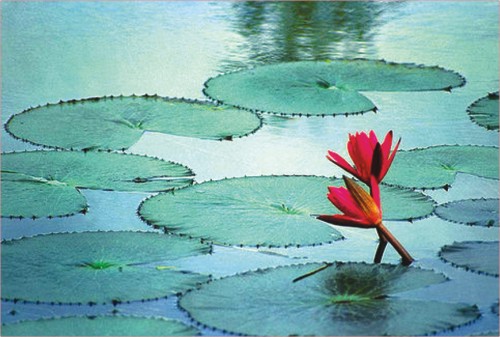
From the poetry of Sojon Badiar Ghat by Jasim Uddin to
the paintings of Zainul Abedin, we see a clear picture of
water culture: a woman carrying an earthen pitcher to
bring water from pond or river. Water is related to
Bangladeshi women for decades. The weight of water that
women in Asia carry on their heads is commonly 20kg, the
same as the average airport luggage allowance. Currently
80 percent of the poor live in rural areas where the rate
of extreme poverty is twice as high as in urban areas.
Over 95 per cent of the population relies on groundwater
as the principal source of drinking water with shallow
tube-wells and suction hand pumps being the technologies
most commonly used (Daily Star, March 22, 2006).
Back to Content
3. Palli-kobi Jasimuddin Festival begins
The narratives of the rustic Bengal and its people have
always been presented artistically in Palli-kobi
Jasimuddin's poetry, touching the soul of readers. To pay
homage to the poet, Department of Production of Bangladesh
Shilpakala Academy (BSA) has arranged a three-day
programme at the National Theatre Stage. Secretary of the
academy, Ashraful Musaddeq inaugurated the programme on
June 3. Media personality Muhammad Jahangir, also the
coordinator of dance troupe Nrityanchal, was the special
guest. Director, Department of Production, Zinnat
Barkatullah delivered the welcome speech.
Muhammad
Jahangir said, "Besides academic curriculum at school and
college levels, Jasimuddin's works do not get the exposure
they deserve. While most of the 20th century Bengali poets
are highly influenced by Rabindranath Tagore, Jasimuddin
is one of the few who have developed their distinct
styles. I believe that by labelling the poet 'Palli-kobi',
the urban literature enthusiasts have 'subconsciously'
sidelined his creativity. I appreciate the current
endeavour of the academy and expect more such elaborate
programmes in future." Ashraful Mosaddeq said, "If a poet
doesn't offer any new 'form' or 'idea', he/she can never
survive the test of time. Jasimuddin is successful in
presenting our rural culture in a modern light. To promote
his work we will take more initiatives."
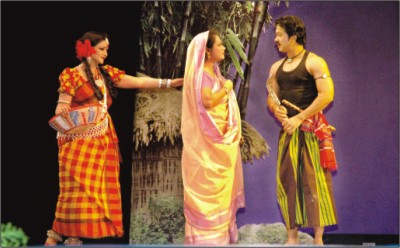 After the discussion,
Nrityanchal staged a dance-drama titled Nakshi Kanthar
Math, based on Jasimuddin's popular narrative poem with
the same title. Under the guidance of Zinnat Barkatullah,
the troupe revived the show, which was premiered in 1981.
Zinnat Barkatullah informed, "In 1981, BSA sent Nakshi
Kanthar Math to Italy. Shibly Mohammed, Shamim Ara Nipa
and I were the lead performers in the dance-drama. The
poem is dramatised by Golam Mujtaba and the dance-drama is
directed by Mostafa Manowar. Veteran dancer GA Mannan is
the choreographer and Ustad Khadem Hossain Khan is the
music composer. Indramohan Rajbongshi and Nina Hamid
render the playback for the tunes. Tonight's show
maintains the same presentation style of the premier
performance." Featuring the tragic love story between
Shaju and Rupai, portrayal of rural Bangladesh --
traditions, struggles and way of living as a whole -- is
presented eloquently in Nakshi Kanthar Math. After the discussion,
Nrityanchal staged a dance-drama titled Nakshi Kanthar
Math, based on Jasimuddin's popular narrative poem with
the same title. Under the guidance of Zinnat Barkatullah,
the troupe revived the show, which was premiered in 1981.
Zinnat Barkatullah informed, "In 1981, BSA sent Nakshi
Kanthar Math to Italy. Shibly Mohammed, Shamim Ara Nipa
and I were the lead performers in the dance-drama. The
poem is dramatised by Golam Mujtaba and the dance-drama is
directed by Mostafa Manowar. Veteran dancer GA Mannan is
the choreographer and Ustad Khadem Hossain Khan is the
music composer. Indramohan Rajbongshi and Nina Hamid
render the playback for the tunes. Tonight's show
maintains the same presentation style of the premier
performance." Featuring the tragic love story between
Shaju and Rupai, portrayal of rural Bangladesh --
traditions, struggles and way of living as a whole -- is
presented eloquently in Nakshi Kanthar Math.
The
dance-drama begins with a drought scene. The villagers
arrange a socio-religious ritual praying for rain. At the
event Rupai (Shibly Mohammed) meets Shaju (Shamim Ara
Nipa); it's a classic case of love at first sight. The
lovers get married but the bliss does not last long.
Tragedy occurs when thugs come to loot the crops of the
villagers, resulting in a conflict. Five die and Rupai is
wrongly accused. To evade the situation, he sees no other
way but to flee. R
ural customs and festivities
like harvest, fishing and wedding, have been emphasised,
rather than focusing on just the love-story. The
dramatisation of solitude by Shibly and Nipa deserve a
special mention. Nipa embodied the melancholy of the
character Shaju, who pines away for her beloved and
succumbs to death. The story ends with Shibly as Rupai,
delivering a remarkable performance when the character
returns home and finds a nakshi kantha (embroidered
quilt), in which Shaju had delineated moments from her
lonesome life (Daily Star, june 5, 2007).
Polli-kobi Jasimuddin's 106th birth anniversary
observed in Faridpur Rezaul Karim, Faridpur
The 106th birth anniversary (January 1, 1903) of
'Polli-kobi' Jasimuddin was observed recently at the
poet's native village Ambikapur in Faridpur. On the
occasion, different organisations including Faridpur
district administration, Jasim Foundation, district
Shilpakala Academy and Faridpur Sahittya Parishad
chalked out elaborate programmes. The programmes
included placing wreaths at the poet's tomb, public
prayers, discussion, recitation of poems and
rendition of songs written by Jasimuddin, photo
exhibition, and screening of a film, produced by
Khan Ataur Rahman, titled "Ekjon Kobi Jasimuddin".
Among others ATM Nasir Mia, additional
deputy commissioner (general); Abu Masud, additional
deputy commissioner (revenue); Professor Md.
Shahjahan; Munshi Harun-ur-Rashid, president of
Faridpur Journalists' Association; D Jamal Anwar,
son of Jasimuddin; Professor MA Samad and Mafiz Imam
Milon, coordinator, Faridpur Jasim Foundation spoke
at the memorial discussion. Faridpur Deputy
Commissioner and Faridpur Jasim Foundation President
Akhtaruzzaman Mohammad Mostafa Kamal chaired the
function. In memory of Jasimuddin, a fortnight-long
fair will be held at the premises of the poet's home
in Ambikapur village from January 25. |
 |
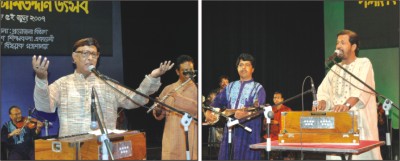 The three-day 'Jasimuddin
Festival' organised by the Department of Production,
Bangladesh Shilpakala Academy, ended on June 5 at the
National Theatre Stage. To pay homage to the Palli-kobi,
his works were presented through music, dance-drama and
recitals. On the last day of the festival, evergreen songs
written by Jasimuddin were rendered by 21 leading folk
singers of the country. Folk songs belonging to genres
like Moromi, Bichhedi, Bhatiali and Shari were performed
at the programme. Jasimuddin is widely known for his poems
such as Nakshi Kanthar Math, Shojon Badiyar Ghat, Kabor
and many more, in which he captured the essence of rural
Bengal and the unpretentious lives of peasants. However,
most urbanites are not acquainted with his skills as a
lyricist and composer. Perhaps many are not aware that
familiar folk songs including Amar har kala korlam re,
Amaye bhashaili re, Bondhu rongila re, Nishithey jaiyyo
phulo bon-e, Nodir kul nai kinar nai re and O amar dorodi
were written by the poet. The three-day 'Jasimuddin
Festival' organised by the Department of Production,
Bangladesh Shilpakala Academy, ended on June 5 at the
National Theatre Stage. To pay homage to the Palli-kobi,
his works were presented through music, dance-drama and
recitals. On the last day of the festival, evergreen songs
written by Jasimuddin were rendered by 21 leading folk
singers of the country. Folk songs belonging to genres
like Moromi, Bichhedi, Bhatiali and Shari were performed
at the programme. Jasimuddin is widely known for his poems
such as Nakshi Kanthar Math, Shojon Badiyar Ghat, Kabor
and many more, in which he captured the essence of rural
Bengal and the unpretentious lives of peasants. However,
most urbanites are not acquainted with his skills as a
lyricist and composer. Perhaps many are not aware that
familiar folk songs including Amar har kala korlam re,
Amaye bhashaili re, Bondhu rongila re, Nishithey jaiyyo
phulo bon-e, Nodir kul nai kinar nai re and O amar dorodi
were written by the poet.
Most of the songs by
Jasimuddin belong to Moromi (devotional) genre. These
songs can be interpreted in more than one way; an
unmistakable trait of mystic songs. References to
relatable characters and elements like "friend", "boatman"
and "river", the poet articulated his love for God. The
programme began with the rendition of a Bichchhedi
(melancholy) song Tumi kaindo na orey amar jabar
bela by Sardar M Rahmatullah. Meena Barua sang Ujan
ganger naiyya. Kiron Chandra Roy presented Tumi
jabey bhai -- a fusion of folk and classical music. An
emotionally charged Deepti Rajbongshi's rendition of the
devotional song Swarup tui biney dukkho bolbo kar
kachhe moved the audience.
Stentorian vocals
of Malay Kumar Ganguli, Bipul Bhattacharjee, Abu Bakar
Siddiqui and Khogendranath Sarkar during presentations of
songs -- O amar dorodi, Amaye bhashaili re, Jarey chhere
elam obohele and Ami baiyya baiyya kon ghatey respectively
were also enjoyable. The evening also included solo
renditions by noted and talented upcoming singers
including Indramohan Rajbongshi, MA Khaleq, Kanon Bala
Sarkar, Chandana Majumdar, Nadira Begum, Abdul Karim Khan,
Nashid Kamal, Sheikh Sadeq Ali, Iffat Ara Nargis, Naznin
Akhtar Shurjo, Sheikh Hemayet, Anima Mukti and Nasrin
Ferdaus Chaman.
Pallikabi Jasimuddin' lyrics enriched the country's
culture
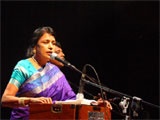 Pallikabi Jasimuddin' lyrics
enriched the country's culture of folksong. ‘Amar haar
kala korlam re'; ‘Arre o rangila nayer majhi;
‘O amar daradi aage janle'; ‘Nadir kul nai kinar
naire'; ‘Rangila rangila rangila re', ‘Ujan ganger naiya'
– these are among the popular songs of the poet. The
Bangladesh Shilpakala Academy arranged a musical evening
of the folksongs written by Jasimuddin on the concluding
day of its three-day Jasimuddin festival ending on Tuesday
at the National Theatre Hall in Segun Bagicha. Pallikabi Jasimuddin' lyrics
enriched the country's culture of folksong. ‘Amar haar
kala korlam re'; ‘Arre o rangila nayer majhi;
‘O amar daradi aage janle'; ‘Nadir kul nai kinar
naire'; ‘Rangila rangila rangila re', ‘Ujan ganger naiya'
– these are among the popular songs of the poet. The
Bangladesh Shilpakala Academy arranged a musical evening
of the folksongs written by Jasimuddin on the concluding
day of its three-day Jasimuddin festival ending on Tuesday
at the National Theatre Hall in Segun Bagicha.
Noted singers of folksongs in the country
participated in the soiree and delighted the audience
singing the songs of Jasimuddin. The audience appreciated
the academy's initiative in arranging this sort of
programme, particularly on the Pallikabi. ‘This is a rare
opportunity for the lovers of Jasimuddin's literature,
particularly his songs. We irregularly listen to the
poet's folksongs aired on radio and television but here I
enjoyed the poet's songs by the noted singers in a single
programme,' said Mohammad Latif, a student of 25 years
old.
His classmate Rajesh Saha said that he did
not know much about the songs of Jasimuddin. ‘I have heard
many of these popular songs but I did not know who wrote
these songs,' he said.
They also expected that the
academy and other organisations would arrange this sorts
of programmes regularly. Among the noted singers, Indra
Mohan Rajbangshi, Mina Barua, Kiran Chandra Roy, Nashid
Kamal, Chandana Majumdar, Nadira Begum, Kanan Bala Sarker
and Abu Bakar Siddique sang at the function (New Age, June
7, 2007).
When Indian writers meet
Khushwant Singh
I have attended many writers' conferences in different
parts of the world: Philippines, England, Scotland, the
USA and India. I got very little out of meeting eminent
authors, most of them full of self-esteem. But invariably
I succeeded in befriending one or two and continued
corresponding with them. Fifty years ago in Manila I got
to know Sional Jose. Last month he sent me his latest
novel through his son visiting India. In Leeds I met Kavi
Jasimuddin of Bangladesh. I visited him in his home
Palasbari in Dhaka; his daughter Hasna and her husband
Maudud visit me whenever they are in Delhi (The
Tribune,Saturday, January 5, 2002 ).
Abdus Shakoor Saying it with colour
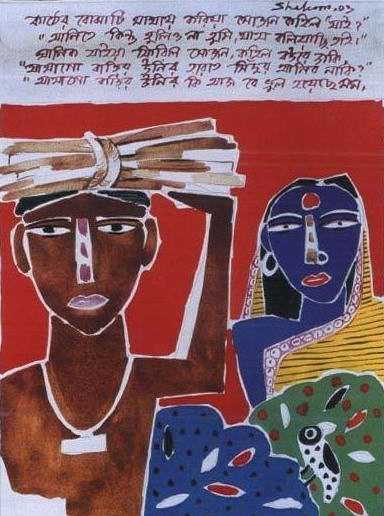 Abdus Shakoor has the
unique gift of merging the beauty of folk art with folk
literature. In his quest for portraying the roots of
Bangla folklore on canvas he uses his brush and palette to
brilliantly create what Poet Jasimuddin achieved with his
pen. Shakoor takes you into the ancient realm of our
folklore and allows your vision to feast on the vibrant
colours and images of characters and features, generally
restricted to narrations depicted in only black and white.
Recently the artist talked about his life and works with
Robab Rosan For Abdus Shakoor, the time of his painting
actually started in 1978 when he was studying in Baroda
University in India. While listening to discussions on
arts by his teachers in the university he was noticeably
moved and was faced with a new realization. Questions
dawned in his mind about the paintings he had been doing
all his young life. Abdus Shakoor has the
unique gift of merging the beauty of folk art with folk
literature. In his quest for portraying the roots of
Bangla folklore on canvas he uses his brush and palette to
brilliantly create what Poet Jasimuddin achieved with his
pen. Shakoor takes you into the ancient realm of our
folklore and allows your vision to feast on the vibrant
colours and images of characters and features, generally
restricted to narrations depicted in only black and white.
Recently the artist talked about his life and works with
Robab Rosan For Abdus Shakoor, the time of his painting
actually started in 1978 when he was studying in Baroda
University in India. While listening to discussions on
arts by his teachers in the university he was noticeably
moved and was faced with a new realization. Questions
dawned in his mind about the paintings he had been doing
all his young life.
Confronted with this dilemma,
he asked himself, ‘Will my paintings be treated as works
of art I suffered from this insecurity for a long time.
During my study in Baroda University, I started
experimenting with different styles, forms and colours.
One day I got the opportunity to send a painting to an
exhibition organised by a society, dealing with ancient
arts, in Bombay. They loved my painting which had the
honour of being on the cover of the exhibition catalogue.
The year was 1978.' The artist continued, ‘This incident
had brought a change in my career as a painter. Members of
the society thought that I was an old Indian artist, as I
had sent a friend of mine to collect the money from the
sale of my painting. They later heard that I was a young
university student.
I had painted an incident
related to clashes between police and students in Gujarat;
I had the spirit of Bangladesh's Liberation War in the
back of my mind. When I received critical acclaim from the
society, I was very motivated to use the Liberation War as
my theme in later works. But the nagging dilemma of
whether I was in the right path or not kept on haunting
me. During that time, I was also affected by the difficult
times of the countries in the third world, especially my
country; I could still see the same poverty and dearth
which I had seen during my childhood. The future seemed so
bleak to me.'
I was not being able to feel the
presence of my country in my works. I experimented a lot
to get it right. I sent two paintings to an international
art exhibition in 1991. I used some forms taking from folk
motifs. The organisers were delighted with the forms and I
was awarded for my painting. It made them realise that
traditionally, we have a rich folk culture. When I told
them about the innumerable folk motifs and images in our
art, the director of the exhibition encouraged me to use
them in my paintings. They selected five paintings from
five countries, from about twenty thousand artworks, and
mine was one of them.'
‘This is when I was
rethinking about my style and started using folk motifs in
my paintings. For me it was the optimum way to present my
country through my work. By using original, ethnic
symbols, motifs and the language in my paintings, I
thought I would be able to contribute in the art movement
of our country. It was the beginning of a new era in my
career. I visited several museums to study folk motifs,
folk paintings and artefacts of Bengal. I went to the
Guru Saday Datta Museum in Kolkata and was very
impressed by the huge traditional collection. I realised
that with such a treasure of rich ethnic resources in
Bengal, why would I choose to go for abstract painting.'
‘I was highly influenced by Gazir pat, Laxmi
sara, alpana, shital pati, nakshi kantha, wood
works, wall paintings and other folk art forms. I found
the spirit of Bengali nationality in them apart from
getting a guideline from them. The works of Jamini Roy had
also influenced me in the beginning of my career. But I
have developed my own style, adapting it from our folk
art. I want to present Bangladesh, the Bengali
nationalism, culture and language as my subjects; on the
other hand I want to also portray our Asian identity.'
‘I started with random folk motifs in my paintings
but later I found my sanctuary in the Maimensingha
Gitika, a compilation of folk tales. I paint
characters and excerpts of the text from the ballads. A
distinct change came into my works. It was 1996 when I
began that particular technique and I have not detoured
from it since then. In 2000, a curator of a museum in
London came to Bangladesh and visited various galleries
here, and saw the artworks of different painters. He had
heard about my style and came to my house to see my works.
He told me that he had finally found the thing he
was looking for. He also told me that he could see my
country in my paintings. I was pleasantly surprised
listening to a professional critic admiring my work.'
He bought fifty of my paintings for the museum and
had an exhibition in London. He thought that the best way
to present Bangladesh to the people of Britain would be
with these paintings.' At fifty, Shakoor tries to paint
every morning and evening. ‘I want to draw new folk motifs
with perfection in my canvas. As an artist sometimes I
feel like painting spontaneously or whatever comes in my
mind. I repeatedly read the books and look for new
subjects; if I do, I sketch it first. Sometimes I get only
two words, which are enough to build an attractive image
for the canvas.'
Besides, Maimensingha Gitika, he
also worked on Poet Jasimuddin's two long poems
Sojan Badiyar Ghat and Nakshi Kanthar Math using folk
images to mark the birth centenary of the poet. Former
director of the Bangladesh Shilpakala Academy, Subir
Chowdhury, had requested Shakoor to work on the poet.
‘I found many similarities between the images of
the Maimensingha Gitika and Jasimuddin's poems. I drew the
faces of Rupai, Saju, Suja and others. I also painted some
images symbolically. In 2004 they arranged an exhibition
with those paintings.' ‘Young upcoming painters should
think about taking up this art form and portray all the
tales of the Maimensingha Gitika. As I have been getting
older I have limited myself to the characters of Mahua,
Malua, Chandrabati, Kajolrekha and Rupabati for my canvas.
I like working on those particular characters of the
book.'
A suicide scene had impressed the artist
immensely. In the book Mahua had taken a knife to kill
Nader Chand. Shakoor painted the pale face of Mahua and
the back of Nader Chand. ‘Here I used the images of the
ballad symbolically.' Art critics term Shakoor's works as
‘ethnic' or ‘regional'. But they also say that his
paintings are distinguished with their own characters,
which represent Bengal, characters like snakes, peacocks,
elephants, birds, flowers and other objects. ‘I have taken
these images from the shital pati and nakshi kantha. I
also use them as symbols; birds sometimes are symbols of
peace, sometimes symbols of sadness and grief. In a shital
pati or in a nakshi kantha it is not necessary to identify
the type of a bird but the image of a bird is important.'
According to him, when he takes the folk forms he
follows the traditional style of their simplicity but when
he implements them on his canvas he uses a modern
technique. ‘I take the image of a peacock from the shital
pati, but I present it in my own style.' Shakoor uses
phrases and sentences from the scripts of the ballads for
his paintings. Art critics and the artist himself, thinks
that this use of verses enriches his paintings.
‘I
choose only human figures, birds and animals; but not
images of the rural landscapes. I am just studying the
ballads for my new compositions. I have plans to present
only the ballads as my subjects of my paintings. It may be
considered as the Bangla calligraphy.'
‘I suggest
young painters, who are interested in folk art, should
study the literature as well as the art. They should not
imitate anyone else. They can develop a style of their
own. I did not blindly follow Gazir pat; neither the
figures nor the images. I have borrowed the style of the
scroll, the format and sometimes the division of the
panels; but I have used the folk motifs in a modern way'
About the use of colour, he said, ‘I use the
colours like children do. My canvas is full of bright
colours. I sometimes use earthy or matured colours as per
demand. My paintings have a simple look. Not that I like
all my paintings, but as a painter, I have to go on.' The
artist usually uses four mediums, ink-drawing,
opaque-watercolour, acrylic and oil. Among them he mostly
uses ‘opaque-watercolour' and acrylic. He has also used
gouache in a series of his paintings. Although the artist
tries to sometime avoid folk motifs, he says, ‘But now,
the Bangla folk image is my main stream of painting. I
depict and describe the males and females, the ornaments
they use or the clothes they wear in the ballads.'
‘I consciously use a flat surface. I create
distance or create perspective. Many of our painters use
foreign concepts on their canvases. Abedin Sir
(Shilpachariya Zainul Abedin) always discouraged us about
that. He used to tell us that we could paint an abstract
image but should have your originality documented, so that
viewers could identify our works.' Some artists think that
as the language of painting is international they should
not be confined to local subjects. Shakoor says, ‘They
should keep in mind that all famous artists had
established their own individuality in their works. They
achieved their individuality by using original, local
forms and motifs.'
‘Yes, I do agree that painting
has an international ‘language' but we have seen that the
Indian artists have struggled for the last fifty years to
establish the fact that painting has also a local
‘language'. It is an irony that artists, who are unable or
unwilling to portray their own identity, are looking for
global recognition.' About the repetition of a form, the
artist said, ‘If I want to portray the image of Mahua
several times, I cannot change the shape of her face. But
the expressions of her face will be different in every
canvas. Mahua can come again and again in different
moods.'
Abdus Shakoor is a teacher at the
Institute of Fine Art of the Dhaka University. Commenting
on the development of art in Bangladesh, he said, ‘For a
small country, the standard can be compared with some
major neighbouring countries, including the eastern part
of India. If we continue at this pace we will be able to
achieve much more in the near future.' ‘We should be
honest with our work. Some of the young painters are doing
well. With proper support from the government level they
can surely do better in their works. The galleries should
take care to give them the money from the sale of their
paintings as soon as possible; the artists will be further
encouraged. There should be better understanding between
the artists and gallery owners, for further development of
the art scene in our country (New Age,June 24, 2005)'
Back to Content
4.Dance-drama "Kabor" staged at Jasimuddin
Festival
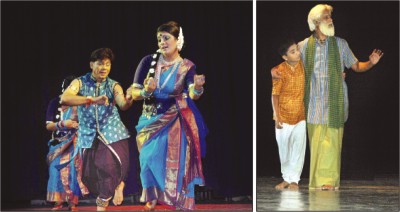 Four dance recitals and the
dance-drama Kabor were staged on the second day
(June 4) of the ongoing three-day 'Jasimuddin Festival' at
the National Theatre Stage. The Department of Production
of Bangladesh Shilpakala Academy has arranged the
festival. Choreographed by Kabirul Islam Ratan, dance
troupe Nrityalok Sanskritik Kendra presented three
recitals based on Palli-kobi Jsimuddin's evergreen verses.
Young dancers of the troupe presented the first
composition based on Tumi jabey bhai, jabe mor shathey
amader chhoto ganye, rendered by Kiron Chandra Roy. The
troupe also staged two recitals based on Amaye bhashaili
re amaye dubaili re and Allah megh de pani de. Four dance recitals and the
dance-drama Kabor were staged on the second day
(June 4) of the ongoing three-day 'Jasimuddin Festival' at
the National Theatre Stage. The Department of Production
of Bangladesh Shilpakala Academy has arranged the
festival. Choreographed by Kabirul Islam Ratan, dance
troupe Nrityalok Sanskritik Kendra presented three
recitals based on Palli-kobi Jsimuddin's evergreen verses.
Young dancers of the troupe presented the first
composition based on Tumi jabey bhai, jabe mor shathey
amader chhoto ganye, rendered by Kiron Chandra Roy. The
troupe also staged two recitals based on Amaye bhashaili
re amaye dubaili re and Allah megh de pani de.
Young artistes -- Labonya and Robin -- of dance
troupe Shupto Bikash, presented a composition based on
Rakhal chhele rakhal chhele barek phirey chao by
Jasimuddin. Shafiqur Rahman is the choreographer of the
piece. The major attraction of the evening was the
dance-drama Kabor based on Jasimuddin's
poignant elegy with the same title. Through the 'dramatic
monologue' of a grandfather -- looking over his wife's
grave -- the tragic experiences of losing near and dear
ones are narrated to a grandson. But, the sole intention
is not to narrate the stories of 'death'. The elderly
character also narrates his passion for the loved ones.
And these cherished memories as well as his feelings at
the parting of the family members have been presented in
flash back scenes.
Director Deepa Khondokar's
efforts deserve plaudits, specifically the presentation of
rural Bangladesh. The "village fair" scene is vibrant. Set
designer Kiriti Ranjan Biswas and noted Indian light
designer Tapash Sen creates a realistic ambience. Music
for the dance-drama has been composed by Shujeo Shyam.
Actor-director-recitor Mujibur Rahman Dilu has done the
recitation. Before the show, Mujibur Rahman, also the
co-coordinator of the production Kabor, spoke at the
programme. The dance-drama is a Tonatuni production (Daily
Star, June 6, 2007).
Premier of TV play "Kabor"
TV play Kabor was premiered and recitation album Jagia
Uthilo Pran was launched at a programme at the main
auditorium, National Museum on October 30.
Kabor
is a TV adaptation of Jasim Uddin's poem and Jagia Uthilo
Pran is a compilation of 12 poems recited by Mohammad
Khorshed Alam. On the occasion director of the play,
Kabor, Shahiduzzaman Selim said, "I have acted in many
plays and directed some, but this play is special to me.
Reminiscences of family bonds, the pain of losing someone
close to one's heart and emotions attached to it are
portrayed beautifully in the poem and this adaptation
tries to correspond to that nuance of the poem that
remains in our memory."He also said that the adaptation
was inspired by Mohammad Khorshed Alam (Daily Star,
November 15, 2007).
Back to Content
5.AIDE MEMOIRE | Hasnat Abdul Hye,
Faridpur/1952
Faridpur 1952- MEMOIRE | Hasnat Abdul Hye -Father in
law of Poet Jasim Uddin - english teacher - Mohshin
sirIn Faridpur the visit by three celebrities, all
different in their own ways, were events to remember
because they were all distinguished. They left an
impression on his mind that was enduring
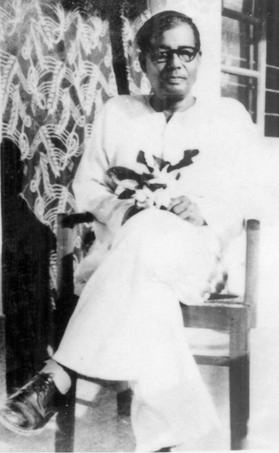 He had read many poems
written by Poet Jasimuddin as part of school text book. He
had also read his famous long poem Nakshikanthar Math that
immortalised a tragic folk tale. But he had never seen or
met him in person. Similarly, he had listened to quite a
few folk and Nazrul songs sung by Abbasuddin, but never
met him. Like poet Jasimuddin, he was also a celebrity
among the Muslims of Bengal and to discerning Hindus, too.
His popularity was wider because even illiterate men and
women could enjoy his songs whereas Jasimuddin's poems
were limited to the appreciation of the educated class. In
Faridpur, he had the opportunity of seeing both of them.
They came together to their school for a programme that
was organised by the Government. It was part of the public
relations activities of the Department of Information and
Publicity. Both poet Jasimuddin and folk singer Abbasuddin
were working in the Department and as part of their
official programme, they made joint tours to educational
and other institutions. He had read many poems
written by Poet Jasimuddin as part of school text book. He
had also read his famous long poem Nakshikanthar Math that
immortalised a tragic folk tale. But he had never seen or
met him in person. Similarly, he had listened to quite a
few folk and Nazrul songs sung by Abbasuddin, but never
met him. Like poet Jasimuddin, he was also a celebrity
among the Muslims of Bengal and to discerning Hindus, too.
His popularity was wider because even illiterate men and
women could enjoy his songs whereas Jasimuddin's poems
were limited to the appreciation of the educated class. In
Faridpur, he had the opportunity of seeing both of them.
They came together to their school for a programme that
was organised by the Government. It was part of the public
relations activities of the Department of Information and
Publicity. Both poet Jasimuddin and folk singer Abbasuddin
were working in the Department and as part of their
official programme, they made joint tours to educational
and other institutions.
While poet Jasim Uddin
recited poems from his books, folk singer Abbasuddin sang
his folk and Islami songs. The duo come to Faridpur with a
slightly different programme. Poet Jasimuddin had visited
America under the cultural exchange programme and wrote a
book on his travel experience, named ‘Chaley Musafir' (The
traveler's tale). He narrated his experience extempore,
with the book shown as exhibit. It was a simple account of
a naïve person who had traveled abroad for the first time.
Everything about America amazed him because
the country was so rich and developed. He had one cultural
shock after another. In those days people living in the
third world knew very little about the social life of
people in the west. Travel was limited, newspapers and
journals were few and there was no television. When
someone had the rare opportunity of visiting a country
like America, one went there with comprehensive ignorance.
There was little surprise that poet Jasimuddin was swept
off his feet by what he saw in America. He narrated one
experience which epitomised the embarrassment of a visitor
like him when faced with the reality.
He told his
audience in Faridpur zila school that one day he was
invited to dinner by an American family. Before going to
the host's home, he bought a loaf of bread to give it to
the hostess in appreciation of their hospitality. Inside
the home of the host and hostess, he was taken aback by
they display of food in the table and by the high standard
of their living. He had great difficulty in concealing the
loaf under his shirt and remained ill at ease throughout
the dinner. His simplicity in narrating the experience was
touching and amusing. As he told the story, the students
present in the big class room laughed heartily. It was a
different Jasimuddin that was revealed to them through the
stories that he told, based on his book ‘Chaley Musafir'.
Poet Jasimuddin spoke for over two hours and kept the
student spell-bound, what with his reputation and the
interesting stories he told them with such frankness. He
did not show off at any stage of his narration and was
full of humility and innocence. He had a personality that
established rapport with young minds effortlessly. He was
the quintessential storyteller for the young, knowing how
to tickle them and when to bring off rip-roaring laughter.
He did this in a deadpan face.
Poet Jasimuddin did
not tell his stories at a stretch. After about half an
hour he would take a break and give the floor and the
audience to folk singer Abbasuddin.
The
appearances of poet Jasimuddin and Abbasuddin were studies
in contrast. The former was dark-brown, with a rectangular
face that exuded baffled curiosity. It hardly broke into
laughter. He was calm and cool.
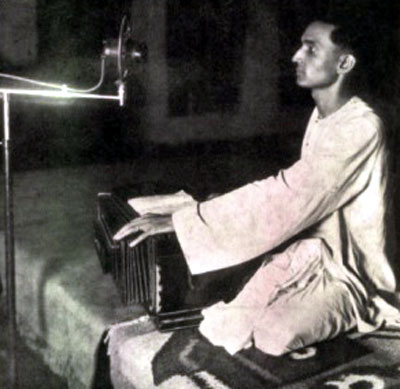 In contrast, folk singer
Abbasuddin was fair complexioned and had a square face
with strong jaw bones. His eyes sparkled with intelligence
and energy and had a smiling face. He sang songs to break
the monotony of the proceedings and to entertain the
students. His voice was sweet and deep, falling somewhere
between tenor and baritone. He sang with enthusiasm and
dedication, forgetting that his audience comprised only
students. In contrast, folk singer
Abbasuddin was fair complexioned and had a square face
with strong jaw bones. His eyes sparkled with intelligence
and energy and had a smiling face. He sang songs to break
the monotony of the proceedings and to entertain the
students. His voice was sweet and deep, falling somewhere
between tenor and baritone. He sang with enthusiasm and
dedication, forgetting that his audience comprised only
students.
He had heard his famous Bhaoiya
song ‘Ore Garial Bhai' (oh, my dear ox-cart
driver) in 78 RPM. But this experience was different,
taking place before him, face to face. He, like the other
students, were overtaken by a sense of otherworldliness
particularly when he sang Nadir kul nai kinar naire
(the river has no end, no bank).
The songs
he sang created ripples that spread far and beyond,
creating a sense of wistfulness. In Faridpur the visit by
thre celebrities, all different in their own ways, were
events to remember because they were all distinguished.
They left an impression on his mind that was enduring.
When one is young and malleable, meeting heroes,
celebrities and stars are moving experiences. He did not
see any hero or star in Faridpur. But the memory of the
three celebrities has been cherished by him fondly. They
gave a respite from the banality of mundane experience.
One's grounding in English became reasonably strong
because the English teachers set great store by their
teaching well If one were to look from above, Faridpur
town would appear as a geometrical pattern, with the main
highway running from Tepakhola to the bazaar as the axis
and several byroads crossing it diagonally, some short,
some of medium length. The byway had different shapes,
some going straight to their destinations, some taking a
curve like the sweep of a rainbow. These small arteries,
that allowed going to and fro, were hidden from view from
a distance, because of the rich foliage of trees and
thickets of grass and sundry shrubbery. Only the main road
that went straight like an arrow from the bazaar to
Tepakhola stood imperiously, making its presence seen from
every direction.
People, including young girls going to school, walked
for miles without raising eyes from others. There were
some cycles used by men of all ages. Mohsin Sir,
father-in-law of Kabi Jasimuddin came to school in his
rickety cycle, pedaling at regular intervals and then
let the wheel take him to some distance till the
locomotion of pedaling started to lose steam. He stood
ramrod on his seat, looking straight like statue. One
could see him in the morning on school days punctually at
the some spots as he made his patient but stubborn
progress on the road. He must have been nearing sixty but
his stamina and health belied his age. In the classroom he
was the very picture of sobriety and profundity. He was
an ideal teacher, they would all agree. He taught
the English grammar and used one written by an Englishman
named Nesfield.
His background in English was indifferent, to put it
mildly, having navigated schools, one after another,
without gathering moss, as it were. So it was a miracle
when he passed the admission test taken by the Headmaster
of Zilla School. Because he had applied for admission in
class VII in the middle of the year and had a transfer
certificate from a unknown school called Jessore Academy,
the headmaster wanted to be sure that he was up to the
mark. After all Zilla Schools were the elite among
educational institutions and a student with a mixed bag of
antecedents in academic background could not be just let
in simply because he was the son of a senior police
officer. In the office room the headmaster was sitting
with Mohsin sir, with his application paper before him on
the table. Without much ado, he asked him to translate a
Bengali sentence into English: Chelera rouddrey doura
donri Kariteche. He thought for a while and replied: The
boys are running about in the sun.
After same cogitation, he realized that there was no
mystery in his success. However poor and backward a school
might have been in those days, the standard of English was
high almost in all schools. One's grounding in English
became reasonably strong because the English teachers set
great store by their teaching well. It did not matter
whether one studied in Hammadia or Jessore Academy, one's
knowledge of English was never below par. With personal
initiative one could always improve upon that. Comparing
that standard of teaching with to-days would be a sad
commentary on our linguistic xenophobia and cultural
chauvinism ( Hasnat Abdul Hye, New Age, february 14,
2005).
Back to Content
6.Gazir Gan,in Faridpur
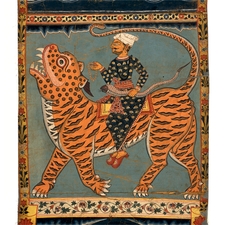 Gazir Gaan"still
finds a keen audience in Faridpur Gazir Gaan"still
finds a keen audience in Faridpur
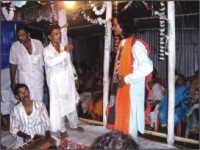 Gazir Gaan (Gazi's song)
-- a traditional folk song genre -- still charms and stirs
the rural heart in Faridpur. Gazir Gaan (Gazi's song)
-- a traditional folk song genre -- still charms and stirs
the rural heart in Faridpur.
Gazi Pir
It is mainly a pala (narrative
songs) eulogising Gazi Pir, who is believed to be a
saintly figure. According to legends, Gazi Pir abandoned
his title (he belonged to a family of rulers) and became a
fakir, concentrating on devotion and worshipping the
Almighty as he had dreamt. In the district, Gazir Gaan is
performed in a distinct style, focusing on drawing the
audience's interest. Around 8-10 artistes along with
co-artistes perform the pala, which features dancing,
singing, jokes and story telling.
Hoping to be relieved from diseases or any
danger
In Faridpur, villagers occasionally
arrange performances of Gazir Gaan as a form of mannat
(vow to God), hoping to be relieved from diseases or any
danger. The pala is familiar in the areas of Bishnupur,
Shibrampur, Charmadhabdia, Khalilpur and the villages on
the banks of Padma. The palakars mostly live in these
areas and are sometimes hired to perform at programmes. A
chauki (wooden platform) is set up adorned with
candles and incense. A trishul is left erected on the
podium, believing that the soul of Gazi resides in it.
Different types of offerings are made that include rice,
milk, bananas, gamchha, mustard oil and money. Artistes
use a range of musical instruments including dotara,
hamonium, sharinda, dhol, mridango, kashi, banshi and
premjuri during the pala.
The main singer,
known as the "boyati", is attired in red and enacts the
role of Gazi. Another singer performs as "Kalu" who
carries a black bag.
Gazir Pala starts with
a hymn to the Almighty. The artistes then praise Gazi and
greet the audience. The boyati narrates the story that
Barkhan Gazi, the second son of Sultan Sikandar
Shah and Azufa Sundari of Gaurh. Gazi's mother was the
daughter of King Bali (a Hindu royalty). Giasuddin Julhas,
the first son of Azufa Sundari and Sikandar Shah was
missing. The bereaved parents found a chest floating on a
river. Opening the box they found an infant who was named
"Kalu", as a written note in the chest mentioned the name.
Kalu and Gazi were brought up as brothers.
Sultan
Sikander Shah offered his throne to Gazi but the latter
refused claiming that he has to lead the life of an
ascetic. The Sultan was enraged.
Gazi's
convictions were tested. An elephant tried to trample him;
he was attacked with a sword, thrown in fire and more. But
Gazi survived. He left the country accompanied by his
brother Kalu and travelled many areas in the guise of a
fakir. He reached Sundarbans and stayed there for seven
years.
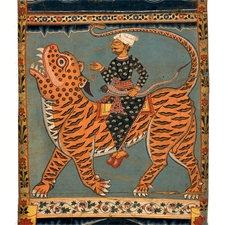 Here fairies and tigers
became his disciples. From this belief locals of
Sundarban still recall Gazi when in fear of tigers. Here fairies and tigers
became his disciples. From this belief locals of
Sundarban still recall Gazi when in fear of tigers.
Gazi fell in love with the beautiful
Champabati, daughter of King Mukut Roy of Brahman
Nagar. After learning about this, the king was enraged and
declared war against Gazi.
Tigers and
crocodiles fought on both sides and eventually Gazi
won the fight. Mukut Roy surrendered and agreed to the
marriage of Champabati and Gazi. Gazi is considered a
"Zinda Pir" (immortal soul) by his followers. The pala
continues all nightlong till the Fazr Azaan (call for
prayer just before dawn). Devotees narrate the
supernatural tales of Gazi passionately and hope for the
well being of all (R. Karim, August 31, 2008).
Back to Content
Jashim uddin: Poet of Rural Bengal
(Written by: S M Mehdi Hassan) In Bengali
literature Jasimuddin is known as ‘PalliKabi' (Rural
poet). The main subject of his poem was the lives of the
people of rural Bengal their simplicity, serenity,
suffering, and various other aspects.
Jasimuddin
was born in the village of Tambulkhana of Faridpur
District. He did his M.A in Bengali from Calcutta
University and then worked on collecting Bengali folk
songs. I remember that in all my Bengali text books upto
class twelve all the books contained at least one poem of
Jasimuddin.
The teaching of Bengali literature
will be incomplete without Jasimuddin. Bangladesh is
an agro based country. Although industrialization is now
taking place majority of the people live in village and in
one way or the other related to agriculture.
This
is why agriculture and farmers are an important aspect of
Bangladesh. Jasimuddin in his poet talked about their
lives.
My favorite poems of Jasimuddin are:
Nimontron (invitation), Nokshikathar
math (The Field of the Embroidered Quilt),
Kobor (Grave) and many other poems.
In Nimontron (Invitation) the poet invites
one of his friends to come and enjoy natural landscape of
his village. The village is a very beautiful place filled
with abundant greeneries. There is a river flowing by the
side of the village. The water of the river is very clean.
He proposes to his friends that they would hang around in
the nearby woods wearing garlands made of wild flowers.
They would go to the field and poet would meet him with
the shepherds and they will play with them all day.
‘Nimontron' depicts the nature of Bengal abound with flora
and fauna. Another beautiful poem is ‘Rakhal Chele' (The
Shepherd boy). Here the central character is a shepherd
boy whom the poet is inviting to play with but he refuses
to go and says that his work is his play. Everyday before
dawn he takes his wooden plough and go to the field he
ploughs the land and then sow seeds and when new plants
shoot out they look very beautiful. Sometimes when he
feels tired he along with his fellow farmers sits under
the shed ofa tree and sing Murshidi songs ( a kind
of folk song).
In the end the shepherd boy says,
My work is my game and I like to play it.I play all day
and forget to take rest.It shows the hardworking nature of
the farmers who live a very simple life and work very hard
to earn their livelihood and they are very happy with what
they have. Such beautiful description of Bangladesh and
its farmer can not be found in any other poet's writing.
However, Kobor (The Grave) and NakshiKathar Math ( The
field of an embroidered Quilt). Kobor is a monologue of a
farmer who is standing in front of the graves of his wife,
son, daughter-in-law, and his daughter. He along with his
only grandson was asking for god's forgiveness for the
people who were lying in the graves. The farmer brought
his grandson near the grave of his wife and telling him
Here under the pomegranate tree lies your grand
motherWho's grave for thirty years I kept fresh with my
tears. Then the farmer describes his wife. A simple woman
who was very content with his life and deeply loved his
husband. The farmer tells his grandson to raise his hands
and ask for God's forgiveness for them. It is a very
emotional poem. I like this poem because the way the
farmer talks reflects his loving and caring nature as a
husband and a father. Such love and devotion is a rare
quality in the present day world.
‘Nakshikathar Maath' (The Field of an Embroidered
Quilt)is a long narrative poem. It is about two young
persons: Rupai and Shajoo. Rupai lives in one village and
Shaju in another. One day Rupai went to collect bamboo
(bamboo is an important construction material in rural
Bengal) and then he saw Shajoo and Shajoo saw Rupai. They
fall in love with each other and eventually gets married.
Then one day Rupai gets involved in a serious fight with a
group of people in the conflict he killed one and on that
night he came to see his wife, Shajoo. After that Shajoo
waited for her husband to return but he never returns.
Shajoo loved her husband deeply and not seeing him
for all theseyeas made her very sad. She gave up eating
and started to grow ill.
The she decides to make a
quilt. On the quilt she draws her house where she used to
live with her husband and the beautiful field near the
house. By the time she finished the quilt she died. Before
death she tells her mother to hang the quilt on a bamboo
near her grave. Then after few months people of the
village saw another old person lying on that grave. The
whole story is very beautifully narrated. It is divided in
chapters and each chapter starts with a Murhsidi song.
This poem was translated into English by Mrs. Milford.
Jasimuddin loved the rural Bengal and all his life he
wrote for them.
Jasimuddin Centenary Preparatory meeting
August 8 at Darbhanga Hall, Calcutta University College
Street campus; 5.30 pm: Bangiya Sahitya Parisad,
Viswakosh Parishad & 30 organisations including
little magazines convene the Jasimuddin Centenary
Preparatory meeting to celebrate the rural poet's
birth centenary. Dr Pratap Chandra Chandra will preside
over the meeting. (Daily telegraph, Calcuuta, India,
August 7, 2003).
Abiding tale of love and revolt
Pallikabi (village bard) Jasimuddin was born
on the first day of 1903, and his birth centenary is being
observed
Pallikabi (village bard) Jasimuddin was born on
the first day of 1903, and his birth centenary is being
observed this year. But is he merely a village bard
or, like Robert Burns, a remarkable poet who challenged
the rural-urban and rustic-refined divide When one reads
his lyrics, like Gourigirir meye (a sensitive yet
heartfelt invocation to Goddess Durga) and Anurodh (a
chiselled love poem woven in folk rhythm) and then goes on
to respond to his two evergreen dramatic poems
Naksi-kanthar Math and Sojonbadiar Ghat, one concludes
that the label ‘village-bard' is an example of inadequate
salutation.
Both these ballads cross the
prescribed limits of folk poetry. In fact, they
articulate a secular and humanist vision in a diction
that is earth-sprung and elegant. No wonder, both these
‘modern' ballads, replete with social conflicts, have been
dramatised. While Naksi-kanthar Math was given a vibrant,
dramatic form by Kalyani Natya Charcha Kendra in 2001,
Nandikar's latest venture has transformed Sojonbadiar Ghat
into a collective spectacle. The guiding spirit behind
both these splendid productions is Gautam Halder, who has
proved with his friends that Jasimuddin can inspire
exciting theatre. Perhaps, ‘theatre' is not the apposite
descriptive. For, Nandikar's centenary homage to the poet
integrates the musical, dance-theatre and dialogue-based
drama into one indivisible format.
The
closely-entwined personal and social layers, both equally
intense in this dramatisation, convey the abiding message
of love and revolt. While the Muslim village lad Sojon and
his heartthrob Duli, a Nomosudra belle, trample barriers
to come together, their village, Simultali, experiences
bloody clashes between the two communities, engineered by
the high-caste Hindu nayeb of the local landlord.
Ultimately, the star-crossed lovers choose death and their
last act of defiance perpetuates the message of deathless
harmony. In all, 21 musical instruments, 40 singers and 51
actors merge and clash, coalesce and collide on the stage
to embody the poet's ideal. Jasimuddin's flowing verse
leaps and sparkles as the actors and singers turn his
words into war cries and laments.
Jasimuddin, who
loved to infuse the lyric with the dramatic, would have
loved two particular scenes. In the first, Duli lovingly
explains the Hindu and Muslim themes of her paintings to
Sojon, in an atmosphere of conjugal warmth. In the second,
this syncretic ambience is shattered by the outbreak of
sectarian vendetta. Incited by the crafty nayeb, fierce
Nomosudras confront vengeful Muslims and their furious
dance exposes the futility of it all. A fine excess of
songs recreating the world of baul-bhatiyali-ajan-kirtan
weaves the protesting, choric design.
We recall
Sojon and Duli with a sense of special urgency in
our divisive times. They impart the mantra of love and
tolerance in world vitiated by the Talibans and Togadias.
Finicky post-moderns might find the ‘secular' storyline
grossly simplistic, even Utopian. But neither Jasimuddin
nor Nandikar, anchored to the soil, have whitewashed the
vitriol and violence ingrained in us. We confront their
awesome might but then aspire for the resplendent Utopia
from the sphere of our soiled lives. (SUBHORANJAN
DASGUPTA, The Telegraph, Calcutta, India, May 15, 2003).
7.Nakshi Kathar Math
Nokshi Kanthar Maath (The Field of the
Embroidered Quilt) is a dramatised version of the verse
narrative written by Jasimuddin. The simple folk tale
centres around a peasant youth, Rupa, who fell in love
with a girl from his neighbouring village and they got
married. But Fate — who can overcome it — bitter sorrow
followed them. Rupa left hearth and home, was forced to
flee far away. The young wife waited every day with
expectant, bated breath. False hopes fed her; long days
passed; she pined away to death. The story, in a nutshell
is this simple, but as director Goutam Halder says, every
return to the poem confronted him with the overwhelming
quest for a theatrical form that would adequately express
this realisation. "The search, in fact, began with a
problem of classification: was Nokshi Kanthar Maath a folk
verse-narrative or a fairy tale; was it a social-realist
narrative in verse or a folk song; was it a tale of man's
innocence or a paean to love; was it the remote wailing of
a shepherd's flute among tales untold, a story of loss and
pain that has been and will be again; or was it grandma's
magical story-telling on an evening long ago Was this poem
a synthesis of all these and much more" Produced by
Kalyani Natyacharcha Kendra, this production, possibly the
first of its kind in West Bengal, is a visual poetry in
which Khaled Chowdhury and Tapas Sen have designed the
sets and lights, respectively.
April 27, 2009 at Girish Mancha; 6.30 pm: Thealight
presents Jasimuddin's Nakshi Kanthar Maath. Music:
Pilu Bhattacharya. Design & direction: Atanu
Sarkar,Monday, Daily Telegtraph , April 27 , 2009
Calcuuta, India.
Goddess grants lease of life to art form -
Nakshikanthas to adorn pandal, idols
The theme chosen by Bandhab Sammilani, of
Maharaja Tagore Road, in Dhakuria, for this year's
Durga puja will be a first in terms of decor
for the autumn extravaganza. It will also grant a new
lease of life to an art form on the wane and open an
avenue of income for the women of rural Bengal.
The goddess and the pandal at the Sammilani's 2005
community puja will be bedecked with
nakshikanthas, generally embroidered by
women in rural Bengal. Just a couple of years shy of its
golden jubilee, the Sammilani's pujas are noted for their
innovative themes.
This year, the rural habitat of
yore will be depicted through the
nakshikanthas. Old women in villages
excelled in making nakshikanthas. The stitch is seldom
used these days, except on clothes.
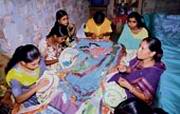 It had influenced Bengali
poet Jasimuddin to pen Nakshikanthar
Math, which depicted life in the villages through
the eyes of Rupai and his fiancee Saju. It had influenced Bengali
poet Jasimuddin to pen Nakshikanthar
Math, which depicted life in the villages through
the eyes of Rupai and his fiancee Saju.
Not many
people know how to stitch nakshikanthas. In our
puja, the idols will be made of thread and
draped in clothes bearing nakshikantha motifs. A
large nakshikantha will adorn the pandal, stated Lekhak
Roy, one of the Puja organisers.
According to Roy,
poet Debasish Bhattacharya was the inspiration behind the
novel venture. His designs are being implemented by around
20 women, working round-the-clock at Raimonikhaki village,
in Raidighi, South 24-Parganas, about 100 km from the
city. They are being supervised by Raju Das, a designer
and a member of the club. The idols are being made at
Dankuni, in Hooghly, about 40 km from Calcutta, under the
supervision of Bhattacharya.
Our endeavour is to
revive an almost forgotten stitch and help rural women
become self-sufficient. Our puja will, hopefully, act as a
showcase for their craft, said Bhattacharya. Kutty Brahma,
another puja organiser, said the club would consider its
efforts successful if visitors liked the theme.
We
would be happy to popularise a dying culture. The
artisans who stitch nakshikanthas belong to the
economically-weaker sections. With the help of the
government, the art form can become the source of
sustenance for many artisans. If that happens, we would
feel that we have done something good, he added. Minati
Purkait, one of the artisans, said all of them were
balancing the stitching with their household work. It is a
pleasure to work on the nakshikanthas, she said.
Class X student Barnali Kansai is also involved in
the stitching. I feel really happy when I see a piece of
finished work. I generally work after school, she
remarked. The women will visit the city to decorate the
idols and the pandal after completing the basic stitching
at Raimonikhaki, said Apurba Banerjee, another member of
the Sammilani. If necessary, they will explain the
intricacies of the nakshikanthas to us. We are going in
for a totally new look, he signed off.( DEBASHIS
CHATTOPADHYAY,The Telegraphj, Calcutta, India, Sept. 01,
2005)
Sanskriti is San Francisco Bay Area's prominent
Bengali Association
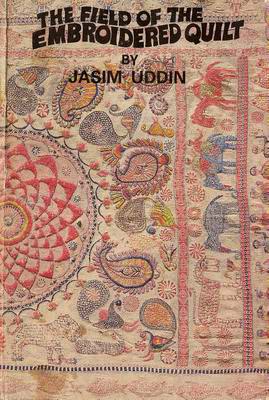 SANSKRITI is a cultural and
educational community facing non-profit organization
launched in Milpitas, California on August 1, 1998. It
started with a fund raising annual festival and Durga Puja
celebration in its first year. Sanskriti has never looked
back but has steadily kept on growing and expanding to
include members from our diverse Indian subcontinent.
Today, in addition to hosting a mega annual festival, it
can boast of another pioneering effort – a one day Drama
Festival (Natya Mela) in California which has been gaining
momentum and wide acceptance from the patrons in and
around the Bay Area. SANSKRITI is a cultural and
educational community facing non-profit organization
launched in Milpitas, California on August 1, 1998. It
started with a fund raising annual festival and Durga Puja
celebration in its first year. Sanskriti has never looked
back but has steadily kept on growing and expanding to
include members from our diverse Indian subcontinent.
Today, in addition to hosting a mega annual festival, it
can boast of another pioneering effort – a one day Drama
Festival (Natya Mela) in California which has been gaining
momentum and wide acceptance from the patrons in and
around the Bay Area.
Nakshi Kanthar Matt is written by poet Jasim Uddin.
Many of Jasim Uddin's significant works portrayed the
rural life of Bengal in a simple yet strikingly artistic
fashion. That is why he is known as `PolliKobi' or Folk
Poet. ‘Nakshi Kanthar Math' is no exception. It is a folk
love story ending in tragedy. A young man named Rupai
falls in love with Shaju, a beautiful girl from a
neighboring village. With the aid of a match maker, and
the joyous consent of their parents, Rupai and Shaju get
married. For some time, they live happily.
One day
Rupai goes out to see the harvesting of the crops.
Unfortunately he gets into a fight. In the consuming
battle, men get killed and Rupai must go into hiding.
Shaju waits for her love to return. To help pass the time,
she starts portraying the sad tale of her life in a Nakshi
Kantha, a quilt sewn from old clothes with delicate
stitches. Days, months, years go by, and Shaju still waits
for Rupai to return to her. Finally, out of anxiety and
hopelessness, Shaju falls down and dies. According to her
wishes, her grave is covered with the Nakshi Kantha. Rupai
finally returns to his wife and in grief joins his wife in
death. The people of the village renamed their village
`Nakshi Kanthar Math' (Field of Embroidered Quilt) to
immortalize the tragic saga of Rupai and Shaju's
illustrated love.
Cast
Rupai: Zahin Ali
Shaju: Tanaya Deb
Ghurnijhar: Ariq Manzur
Shokhi: Titli, Nabilah Majumder, Arinee Rahman,Tahrina
Hossain
Ghotok: Anupam Barua
Grambashi: Mahmudul Hassan
Rupar Ma: Roksana Flora
Shajur Ma: Rubna Rashid
Little Girl: Anusheh R Abdullah, Tasnim Islam, Nuha
Rahman
Groom's party: Ariq Manzur, Fahad Manzur, Tiham
Ullah,Nayeer Ullah, Aumyo Hassan, Abir Majumder,
Turjo,Odit, Ishan, Saif Rahman
Lathiyal: Turjo, Tiham, Aumyo, Fahad, Odit
Light control: Mashuque Rahman
Stage decoration & props: Fairooz Samira Set
Helpers : Zafarullah
Direction, Choreography & Costumes: Naushaba Rubna
Rashid
Production
PORSHI , Bay Area
Bangladesh people living in Stockholm enjoyed "Nakshi
Kathar Math",the spectacular dance drama written by famous
rural poet Jashim Uddin (13. Oktober 2008) . The dance
drama is coreographed by late G. A. Mannan, the legendary
figure in dance history in Bangladesh. Shibli Mohammed
from Dhaka and Chaina Chowdhury from London were the main
attraction of the show. ATN Stars Razwoan and Mridula also
partcipated the Festival in Sweden. Report for London
based community channel Bangla TV.
Jasim Uddin on Nakshi Katha
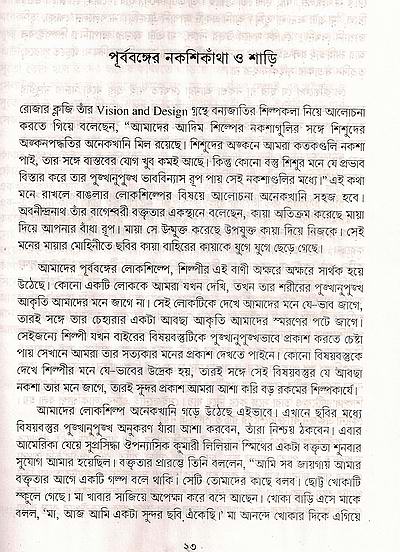 |
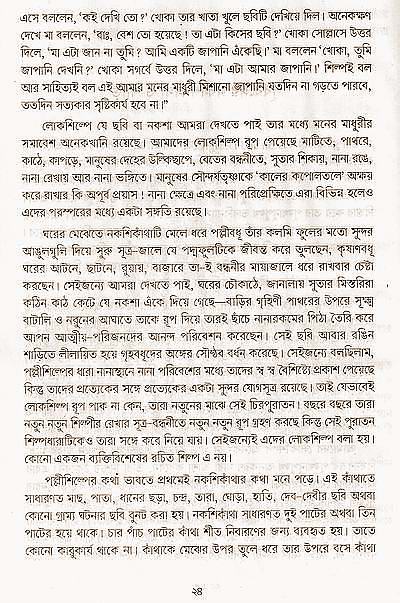 |
Über Nakshi Kantha
Die Arbeit
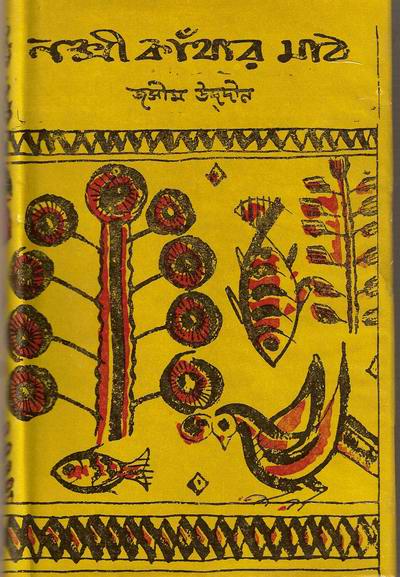 Ursprünglich wurden
alte, nicht mehr benutzbare Sari- und Dhoti-Stoffe
benutzt, die in mehreren Schichten gefaltet wurden.
Die Nähfäden wurden vom Saum genommen. Aus nicht
mehr verwendbaren Textilien wurden somit schöne und
künstlerische Nakshi Kantha angefertigt. Ursprünglich wurden
alte, nicht mehr benutzbare Sari- und Dhoti-Stoffe
benutzt, die in mehreren Schichten gefaltet wurden.
Die Nähfäden wurden vom Saum genommen. Aus nicht
mehr verwendbaren Textilien wurden somit schöne und
künstlerische Nakshi Kantha angefertigt.
Heute werden Nakshi Kantha aus neuen Stoffen
(Baumwolle) hergestellt. Zuerst werden die Ränder
bestickt. Nakshi Kantha mit zentraler Lotus-Blume
werden dort angefangen. Danach werden die
Zeichnungen geometrisch um die Blume herum gestickt.
Frauen können zu Hause arbeiten, was ihnen
ein Zusatzeinkommen ermöglicht. Meistens werden
Nakshi Kantha durch mehrere Frauen gleichzeitig
bestickt: die Künstlerinnen arbeiten oft in
Gruppen.
Muster
Die bestickten Muster entstehen oft aus der
traditionellen Kunst der Alpana, rituelle
Zeichnungen, die bei religiösen Veranstaltungen und
Feiern (z. B. Hochzeit) auf dem Boden mit Pulver
gezeichnet werden.
Moderne Nakshi Kantha
beweisen die künstlerische Kreativität bengalischer
Frauen. Diese sticken verschiedene Gestalten –
Utensilien, Tiere – aber auch Geschichten,
Ereignisse aus dem eigenen Leben auf die Stoffe.
Muslimische Nakshi Kantha stellen oft geometrische
Muster und Blumen dar, die durch Fäden mit heiteren
Farben gestickt werden.
Gebrauch
Nakshi Kantha sind Kunststücke, die im täglichen
Leben einen praktischen Wert haben. In Bangladesch
werden Nakshi Kantha zu verschiedenen Zwecken
benutzt – zum Beispiel als Gebetsmatte, als
Bettdecke, oder bei den kühlen Winternächten, als
Babydecke. Auf den Boden gelegt wenn Gäste zum Essen
eingeladen sind, dienen Sie als Tischdecke – das
Essen wird darauf gestellt. Kleinere Nakshi werden
als Taschentuch, als Hülle oder Bedeckung für
kleinere Gegenstände gebraucht.
Nakshi Kantha sind ein typisches Geschenk – zum
Beispiel zur Geburt eines Babies. Eine Frau, die
heiratet, wird eine Nakshi Kantha ins neue Haus mit
sich bringen. Nakshi Kantha bringen Glück und halten
das Böse fern.
Geschichte
Nakshi Kantha werden bereits in ältere
Literaturwerke des 5 Jahrhundert vor Christi
erwähnt. Sie gehören zu einer Volkskunst, welche
über Generationen Bengalischer Familien übermittelt
wurde.
Jasim Uddin (1904-1976), Bengalischer
Dichter und Volkskunstforscher, brachte zu einem
erneuten Interesse für Nakshi Kantha. Sein Gedicht,
„Nakshi Kanthar Math", ins Englische als „The Field
of the Embroidered Quilt" übersetzt, erzählt die
tragische Geschichte einer Frau, die in der
Abwesenheit ihres Mannes die Geschichte ihrer Liebe
auf eine Nakshi Kantha stickt.
Unter den Britischen Raj und bei den Portugiesen
galten Nakshi Kantha als sehr begehrte Kunststücke.
Heute besteht ein Markt für Nakshi Kantha auch im
Ausland. Dieser hilft die Kunst der Nakshi weiter zu
geben und am Leben zu erhalten. Frauen haben die
Möglichkeit, einen Verdienst aus dieser Kunst zu
erhalten und damit die eigene Familie zu
unterstützen. |
8. Sujon Badiar Ghat
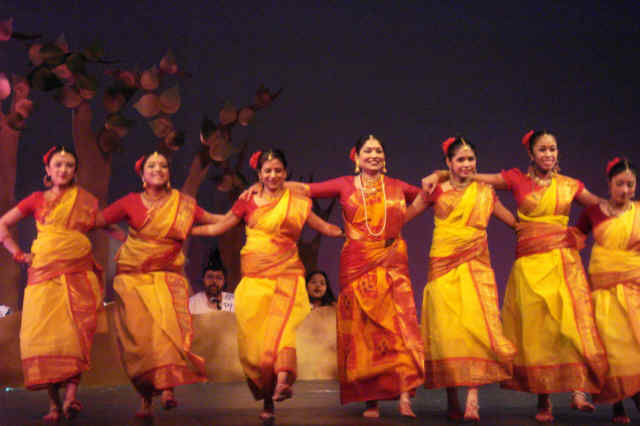
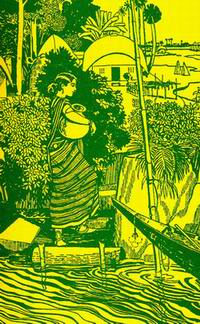 Nandikar, a 40-year-old
theatre group from Kolkata, has visited Bangalore a number
of times in recent years. They were back recently with
three productions, two of which were performed for the
ongoing national theatre festival at Rangashankara. Nandikar, a 40-year-old
theatre group from Kolkata, has visited Bangalore a number
of times in recent years. They were back recently with
three productions, two of which were performed for the
ongoing national theatre festival at Rangashankara.
The first play, staged by the group on November 5,
was at Ambedkar Bhavan for the Bengali Association. A
musical based on poet Jasimuddin's Sojon Badiyar Ghat was
remarkable for the manner it was conceptualised as well as
executed.
Jasimuddin was a disciple of Nazrul,
whose poetry and songs are an integral part of the Bengali
cultural fabric. Legend has it that the proponents of
modern Bengali poetry were reluctant to confer the status
of poem to the simple, unsophisticated lyrics of
Jasimuddin, until Rabindra Nath Tagore came out staunchly
in his support stating "such pure and honest poetry cannot
emerge from a pen that does not have a natural flair for
writing."
Nandikar's interpretation of the poet's
verse tale did ample justice to the timeless quality of
the written work. The literature is 80 years old, but the
concerns raised by it remain as topical as ever. Sojon
Badiyar Ghat tells the tale of love between a Muslim boy,
Sajan and a Hindu girl, Duli. Their love affair sparks
communal tension and the two elope. Fate plays a cruel
twist. Sojon is imprisoned and Duli married off to a rich
Hindu zamindar. After a passage of time, they meet again,
only to give up their lives on the banks of a river.
Having a cast of over 35, the chorus of singers
and dancers are as significant as the lead played with
great verve and conviction by Gautam Halder and Sohini
Haldar. A production like this lends itself to a lot of
stylisation and director Rudra Prasad Sengupta does ample
justice.
Over the weekend, Nandikar performed a
double bill at Ranga Shankara - Meghnad Badh Kabya and
Shanu RoyChowdhury to a more cosmopolitan audience. Shanu
RoyChowdhury is an adaptation in Bengali, English and
Hindi of Willy Russel's classic play about the redemption
of a Liver Pool housewife, Shirley Valentine. The play has
seen numerous avatars across the world and has also been
made into an Academy nominated film. The adaptation is
very basic - Shanu like Shirley is confined to an
existence where her only emotional anchors are the walls
of her kitchen.
Only the setting has changed to
Kolkata. She fries luchi and makes aloo dum instead of egg
and chips. She goes for a holiday to Kathmandu instead of
Greece. The simplicity of the adaptation also works
against it. When Shanu meets her hooker friend over coffee
in a cafe, a false note is struck. The sense of unreality
is compounded as the play progresses. Which Indian
housewife would risk standing at the window of her house
and yell to her daughter that she is going for a holiday
just to have sex with her lover. This is not to say that
Indian housewives are any less oppressed than their
counterparts anywhere in the world. But surely the context
is different and so are the modes of expression.
It leads the viewer to a fundamental question - Is
it fair for great works of literature to be
decontextualised and offered to a foreign audience under
the guise of an adaptation Shanu RoyChowdhury is redeemed
in the final analysis by the performance of Swatilekha
Sengupta. She is brilliant, playing it with the right mix
of pathos and humour. Together with Willy Russell, she
gives the audience a character they can go home with.
(Theatre from other lands, Vijay Nair )
Jamshedpur, Oct. 14 : Theatre buffs of Jamshedpur had a
never-before experience at Tata auditorium, XLRI for over
two hours recently. The occasion was the golden jubilee of
Udayan Sangha. The Sangha presented Nandikar's Sojan
Badiyar Ghat, written by Jasimuddin, who
epitomised the soul of rural Bengal in his poems, 70 years
ago.
The mesmerised audience didn't know for sure whether it
was a drama they were witnessing or it was a journey into
the magic land of poetry. Was it a ballad Or was it the
story of a tragic love torn asunder by communal
chieftains. It explored the boundaries of all art forms.
It crossed the frontiers of any given format but
at the same time conveyed very powerfully the agony and
ecstasy of love. Seventy years. That's a long time. And
yet the message of Sojan Badiyar Ghat seems to be a
narration of what happened this week.
At times
there were about three dozen characters on the stage,
moving around, running about, one group attacking the
other with sticks and swords, offering prayers (namaz) and
yet there was not a single wrong step. Talking about
acting, it was Sohini Haldar (Duli) who almost carried the
drama on her able shoulders. Her silent screams at seeing
the dead body of Sojan, her contorted face, her eyes
depicting the agony of a shattered heart bore ample
testimony to her histrionic excellence. Duli certainly
will continue to haunt the audience for a long, long time.
Gautam Haldar as director and actor (Sojan)
displayed extraordinary ability in taking us into the
eerie world of Shimultali so effortlessly.
Adds Lakshmishree Banerjee : Sojan Badiyar Ghat is
a melange of varied theatrical elements, traditions,
styles and forms including the Chorus of Greek Tragedies,
Biblical Passion Plays, Shakespearean Poetic Drama,
European Opera, Indian Jatra, Natya Sangeet, etc. Its
medium of poetry, spelling out a simple story of Love,
Nature and Life, easily accentuates a sublime message of
peace and simplicity against a raging background of
communal hatred and ethnic conflicts. The human bonding
between the Muslim protagonist Sojon and the Hindu girl
Duli displays a smooth interpretation of Wordsworthian
nature-bliss, Indian sensuousness and a certain Hellenic
pantheism.
Rudraprasad Sengupta's dual roles
of a choral commentator affording analytical glimpses of
unbiased truth and of the extremist Hindu Nayab arousing
communal frenzy, are excellent demonstrations of his
acting prowess. One cannot forget Sathilekha's flawless
wielding of the violin either, in producing a singular
kind of musical harmony embodying both the folk and the
classical.
The two bamboo bridges on either side
of the stage, protruding into the audience on the one hand
and into the depth of the inner-centre stage on the other,
served a two fold purpose: first, for dissolving the gap
between the stage and the audience to facilitate a
deliberate cross-over between imagination and reality and
secondly, for establishing a desirable link between the
politically and socially separated Muslim and Hindu
communities. The brilliant artistry of Badal Das was
evident in his varied Light-effects.
The dances
and action sequences with over fifty actors on stage,
moving in an extraordinarily co-ordinated choreography,
speak volumes about the rigour and vigour of the
meticulous training of the group. (Ms Banerjee is a Senior
Fulbright Fellow and Head of the Department of English,
Jamshedpur Women's College. Additional inputs by Ashit
Biswas, The Telegraph, Calcutta, India, October 15,
2005).)
March 19 and 26, 6.30 pm
Nandikar rehearses for Sojon Badiyar Ghat
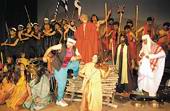 Directed by Goutam Halder,
the Nandikar play is an adaptation of Jasimuddin's verse
epic on strife, war, love and death tearing apart the
Hindu and Muslim communities. Folk music and rural
activities, including laathi khela, are an integral part
of the production. Catch it at Rabindra Sadan Directed by Goutam Halder,
the Nandikar play is an adaptation of Jasimuddin's verse
epic on strife, war, love and death tearing apart the
Hindu and Muslim communities. Folk music and rural
activities, including laathi khela, are an integral part
of the production. Catch it at Rabindra Sadan
9. Jasim Uddin preserve at The Libary of Congress, U S
A
The Library of Congress - Research Centers
The
American Folklife Center
South Asian Collections in the Archive of Folk Culture:
American Folklife Center of the Library of Congress
http://www.loc.gov/folklife/guides/SouthAsian.html
AFS 11,339-11,468: Sidney Robertson Cowell Duplication
Project Eleven 10-inch tapes of interviews and music
recorded in California; Iran; Ireland; Massachusetts; New
York (State); North Carolina; Nova Scotia, Canada;
Bangladesh; Wisconsin; and Wyoming by Sidney Robertson
Cowell, 1952-56. The collection includes two and one-half
linear inches of correspondence, journals, logs, notes,
postcards, and transcriptions, and an article.
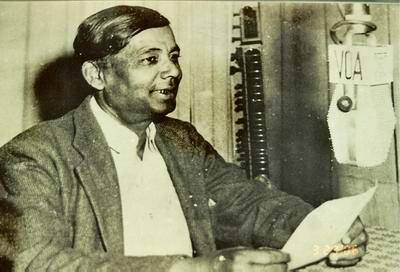 AFS 11,339B: AFS 11,339B:
One 7-inch
reel containing Bengali folksongs sung unaccompanied by
Jasim Uddin, a native of Dacca, East Pakistan (now
Bangladesh).
The selections include birth songs,
nursery rhymes and dances, rain incantations, work chants,
war cries, and mourning songs. Recorded in Bangladesh,
by Sidney Robertson Cowell, 1957.
AFS 11,933: State Department / Folk Music and Poetry
from Pakistan
One 7-inch reel of tape from the U.S.
State Department of broadcasts from radio Pakistan in
Dacca, East Pakistan (now Bangladesh) and Karachi.
Accessioned June 1962.
Selections include 32
minutes of Urdu poetry and recitation from the repertoires
of Jasim Uddin and Iqbal; live marsiya ("threnody,"
eulogistic elegies for martyrs) recitation; Pashto folk
poetry from the Northwest Frontier Province recited by
Samandar Khan; two songs by Hafez Jullundari; and a
variety of Bengali folksongs, including marriage,
devotional, boatman and cartman songs.
Compiled by: Frank J. Korom Series Editor: Joseph C.
Hickerson Publication Date: August 1987; Web revision
August 2008 Series Number: LCFAFA No. 5 [revised] ISSN
0736-4903
Jasimuddin was one of the pioneers of the progressive
and non-communal cultural movement.He was an ardent
supporter of socialism and of Bengali nationalism. In the
1950s when the government of Pakistan attempted to stop
broadcasting tagore songs, he protested boldly.
In
1969 Jasimuddin was awarded the DLitt by Rabindra Bharati
University. He also won several awards, including the
President's Award for Pride of Performance (1958), Ekushey
Padak (1976) and Swadhinata Dibas Puruskar (posthumous,
1978). In 1974 he was also selected for the Bangla Academy
Award but refused it. Jasimuddin died in Dhaka on 13 March
1976 and was buried in his own village. [Bimal
Guha]
106 Birth anniversary of Jasim Uddin observed in
Faridpur
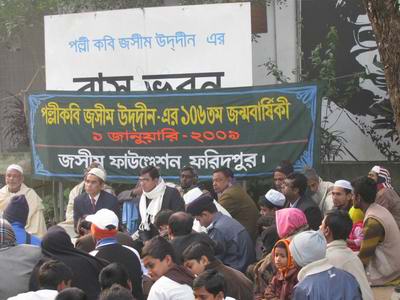 The 106th birth anniversary
of Palli Kabi Jasim Uddin was observed here on Thursday in
a befitting manner In this connection, Jasim Foundation,
district administration and various cultural organisations
placed floral wreaths at the 'Mazar' of late poet, located
at the ancestral home in Ambikapur in the suburb of the
town. Milad mahfil and a discussion in memory of the poet
were also held at the ' Mazar' site. Speakers at the
meeting paid rich tributes to the works of Jasimuddin who
in his writings projected the indigenous picture of
Bangladesh. The 106th birth anniversary
of Palli Kabi Jasim Uddin was observed here on Thursday in
a befitting manner In this connection, Jasim Foundation,
district administration and various cultural organisations
placed floral wreaths at the 'Mazar' of late poet, located
at the ancestral home in Ambikapur in the suburb of the
town. Milad mahfil and a discussion in memory of the poet
were also held at the ' Mazar' site. Speakers at the
meeting paid rich tributes to the works of Jasimuddin who
in his writings projected the indigenous picture of
Bangladesh.
Among others, the discussion was
addressed by Prof M Shahjahan, ADC M Nasir Mia, ADC Abu
Masud, ASP of Police Rafiul Alam, Prof MA Samad and Munshi
Haroon. In his speech, Deputy Commissioner and president
of Jasim Foundation disclosed that a museum and an
auditorium would be set up here soon by the government's
concern Ministry.
Poet's son Dr. Jamal
Anwar presented a CD containing poet's songs sung in
his own voice. Later, a photo exhibition with some rare
photos of the poet was also inaugurated in a temporary
gallery in poet's home. Besides, a daylong cultural
function, Gazirgaon and a film entitled "Banger Kabi
Jasimuddin" directed by Khan Ataur Rahman displayed at
Jasim Uddan in front of poet's ancestral home. (Internet
Edition. January 5, 2009, Updated: Bangladesh Time 12:00
AM )
Jasimuddin's death anniversary observed, March 14,
2009
The 33rd anniversary of death of Palli Kabi Jasimuddin
was observed here in a befitting manner on March 14.
Different socio-cultural organisations and educational
institutions chalked out separate programmes to observe
the day. The organisations and the institutions included
district administration, Jasim Foundation, police
department, Faridpur Foundation, Shahitya-o-Songskriti
Unnayan Songstha, Sahitya Parisahd, Faridpur Nazrul
Parishad, Govt. Saroda Sundari Mohila College and
Ansaruddin High School.
In the morning of the day
Faridpur district administration arranged a discussion
meeting near the poet's grave at Ambikapur on the
outskirts of the town. Among others, Prof. Md Shahjahan,
Prof. Md. Altaf Hossain, Abu Sufian and Mafiz Imam Milon
took part in the discussion meeting chaired by Deputy
Commissioner, Akhtaruzzaman Mohammad Mostafa Kamal.
At noon Govt. Saroda Sundari Mohila College
organised a discussion meeting at its auditorium. Dr. Moni
Gopal Saha, Prof. Altaf Hossain and Prof. Khaleduzzaman
Mithu took part in the discussion on the life and works of
the late poet Jasimuddin. Principal of the college,
Professor Abdul Khaleque Mia, was in the chair. Prizes
were also distributed among the winners of music
competition (The Independent, March 21, 2009).
Jasim Polli Mela opens in Faridpur- 2009January
27, 2009: To commemorate the 106th birth anniversary of
'Polli-kobi' Jasimuddin a fortnight-long fair -- 'Jasim
Polli Mela' -- began yesterday at Govindapur village in
Faridpur amidst much enthusiasm. A lively cultural
programme was part of the inaugural session. Around two
hundred stalls have been set up at the premises of the
poet's home by the river Kumar.
Handicrafts,
everyday items used by the rural folk, tools and other
items used in agricultural, literary works of Jasimuddin
and more are on display at the fair. Other attractions
include puppet show; circus; live performance of 'jari',
'shari', 'bhawaiya' and 'murshidi' songs; dance and
recitation.
On January 24, Toufiq-e-Elahi
Chowdhury 'Birbikram', adviser to the Prime Minister,
inaugurated the fair. Advocate Shamsul Haque, newly
elected Sadar Upazila chairman; Aktaruzzaman Mohammad
Mostafa Kamal, deputy commissioner of Faridpur; Police
Superintend Kusum Dewan; Afsana Yasmin, chief executive of
Faridpur Zila Parishad and the poet's son Dr. Jamal Anwar
attended the inauguration of the fair on Saturday.
Enthusiastic visitors from different parts of the country
are converging at the fair; some enthused by the pastoral
beauty epitomised by Jasimuddin in his poetry:
"Tumi jabe bhai, jabe more shathey amder chhoto
gaye?"
Or "Amar bari jaiyo bhramar boshte dibo
pirey."
Pagla Kanai - discovered by Jasim Uddin in early
1920s
Pagla Kanai was unknown until Jasim uddin discovered
his work in early 20s at Madhabpur village, describes
Prof. Monsuruddin.
Pagla Kanai was born in Labutala Madhabpur village
under Jhenidah district on March 18, 1809 (Falgun 25, 1226
in the Bengali calendar). Kanai was born to Messer Ali and
Momena Khatun. This year, Kanai's birth anniversary was
celebrated later as the date coincided with Muharram, said
Ibrahim Hossian, joint secretary of Pagla Kanai Smriti
Shangrakkhan Shangshad. Kanai became renowned for his folk
songs. He composed a good number of devotional songs but
many of these have not been preserved. An auditorium and
library named after him now stands near the Mazaar.
He was a natural poet and could compose songs
spontaneously. His itinerant group of singers included
Kala Chand Bayati, Hakim Shah, Karim Biswas, Indu Biswas
and Karamaddi. They would tour the areas of Jessore,
Kushtia, Pabna, Rajshahi and Bogra singing in chorus,
occasionally competitively.
Pagla Kanai used to
compose basically mystical and spiritual songs. The
main themes of his songs included the human body, the
impermanence of the world, the mystery of life, etc. He
composed songs about the Prophet muhammad (Sm) as well as
hymns to krishna(The oldest reference to Krishna is in
Vedic literature. The Rg Veda, which mentions Krishna more
than once, depicts him as a non-Aryan warrior opposed to
Indra. At places he is also shown as a sage or a demon.
Krishna has been described as the son of Devaki in
Chhandogyopanisad and Kausitakibrahmana In the gita,
Krishna tells Arjun that he is Vishnu and that he appears
on earth at different times to crush the forces of
anti-religion and evil and protect religion and those who
are virtuous. He is sometimes reincarnated as a human
being and sometimes as an animal. .
In one song he
observed: ek baper dui beta, taza mara keha nay/
sakaleri ek rakta ekghare ashray
(Both are
sons of the same father whether alive or dead/ Both have
the same blood and the same place of rest). Dr Mazharul
Islam included 240 of these songs in his book, Kavi Pagla
Kanai (1959). [Ramdulal Roy]
Pagla Kanai's passion
and intense spirituality was evident at an early age,
hence the locals started calling him "pagla" (crazy).
Kanai left his village to evade the oppression of the
British rulers who forced the farmers to cultivate indigo.
Dirt-poor Kanai became a drifter after his father's death.
He became a cowherd. Many were taken aback by his eclectic
spiritual songs and "dhua jaari." His spiritual
inclination put him in touch with the bauls and fakirs of
the area.
People from all walks of life used to
throng his 'ashor' (performance) and listened to
his songs for hours. And gradually his fame extended
throughout the country. Pagla Kanai's songs can be
classified into 'jari,' 'dhua,' 'pala gaan,' 'kobi
gaan,' 'murshidi,' 'marfati,' Islamic and more.
Legendary Pagla Kanai and his 'Jarigaan'
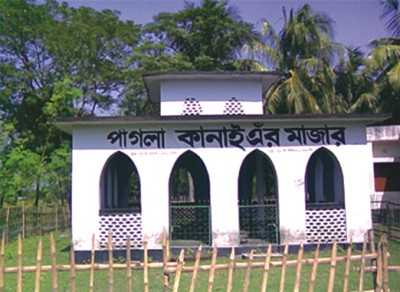 Pagla Kanai
(1810-1890), a mystic folk poet and musician,
was born to a family of peasants in Nebutola village
in Jhenidah. Though he is popular as Pagla Kanai,
his original name was Kanai Sheikh. He was a poet
with the ability to compose songs spontaneously. He
composed what were basically mystical and spiritual
songs. The themes of his songs featured topics such
as dehotattta(analysis of human form), the transient
world, and the mystery of life. He composed songs
about Prophet Muhammad (SM) as well as hymns to
Krishna. But, Pagla Kanai is popular for developing
a Jari form titled Dhuajari, in which an incident is
narrated in a rhythmic tone. Pagla Kanai
(1810-1890), a mystic folk poet and musician,
was born to a family of peasants in Nebutola village
in Jhenidah. Though he is popular as Pagla Kanai,
his original name was Kanai Sheikh. He was a poet
with the ability to compose songs spontaneously. He
composed what were basically mystical and spiritual
songs. The themes of his songs featured topics such
as dehotattta(analysis of human form), the transient
world, and the mystery of life. He composed songs
about Prophet Muhammad (SM) as well as hymns to
Krishna. But, Pagla Kanai is popular for developing
a Jari form titled Dhuajari, in which an incident is
narrated in a rhythmic tone.
The origins of
Jarigaan may be traced back to the early 17th
century in Bangladesh when poetry was written on the
tragic stories of Karbala. However, Pagla Kanai
successfully used other myths such as Radha-Krishna,
Monosha-mongala as well as contemporary social
issues of his time and traditional Baul music in his
compositions of Dhuajari. Through these, Kanai has
analysed Sufism, meaning of life and other themes in
his songs. In fact, he gave aesthetic presentation
of Jarigaan, and subsequently earned a name in
history. His songs were once very popular in many
areas including Rajshahi, Mymensingh, Tangail,
Faridpur, Pabna, Jessore, Kushtia, Khulna, Barisal
and others.
A Dhuajari session may also take
place between two Jarigaan teams. The teams render
songs in a question-answer format. Towards the end,
the team members put forward extempore arguments in
an effort to prove their opponent wrong. Pagla Kanai
was the lead singer of a troupe. His itinerant group
of singers included Kala Chand Bayati, Hakim Shah,
Karim Biswas, Indu Biswas and Karamaddi.
But, not much initiative is taken to uphold
the tradition. Dr Mazharul Islam included 240 of
these songs in his book, Kabi Pagla Kanai. Professor
Abul Ahsan Choudhury, M Monsuruddin have also
written books on the same subject. Moreover,
ministry of Cultural Affairs has built an auditorium
adjacent to the shrine of Pagla Kanai, at the remote
village of Nebutala, Madhabpur. Unfortunately this
rich tradition is on the verge of extinction. To
celebrate his birth anniversary, a few of his
followers, mostly above fifty, gather at his shrine
and render songs. But, nowadays very few people are
interested in Dhuajari. As a result the experts
believe that the tradition of Pagla Kanai is fading
away (E. Komol, Sept. 12, 2006).
|
Scholars such as
Mohammad Mansur Uddin, Dr. Mazharul Islam, Abu Talib, Amin
Uddin Shah, Durga Das Lahiri and Upendranath Bhattacharya
collected Pagla Kanai's songs and conducted researches on
the bard. The legendary baul passed away in July 1889.
Aulad Hossain, a descendant of Pagla Kanai said, "We are
elated that his birth anniversary gets a major celebration
but we also expect the government to take further steps to
preserve his memories."
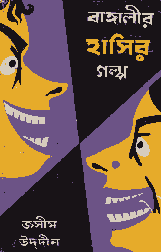 Here are some Funny Stories
Written by Polli Kobi Joshim Uddin. Here are some Funny Stories
Written by Polli Kobi Joshim Uddin.
Aat
Kola
Boka
Shathi
Nobab
Shaheber Durga Puja Dorshon
Onusshor
- Bishorgo
Tip
Tipani
Ad Run
for Channel I Sojon Badiar Ghat. ..
10. Chyanot paid homage to Poet Jasim
Uddin
On January 30, 2009 Chaynot celebrated birthday
of Poet Jasim Uddin and paid rich tribute to the poet for
his deep involvement in non-communal socio-political
movements championing the cause of Bengali language and
literature gives his lyric and folksy poetry a keen edge
of commitment and protest. The ceremony was presided by
Prof. Sanjita Khatun and poets family was also present. A
colourful folk tune with songs, recitation and dance
spellbound the audience.
To pay homage to Jasimuddin, Chhayanat organised a
musical soiree featuring the songs and poetry of the
"Polli Kabi."The memorable event was held at Chhayanat
Shangskriti Bhaban auditorium on January 30. The event
began with a short discussion. Among the speakers were Dr.
Sanjida Khatun, president, Chhayanat; Khairul Anam Shakil,
general secretary Chhayanat and Jamal Anwar Basu.
The musical programme opened with a group
performance of the song "Ki mojar ghar bedhechhey",
and "Babu selam barey barey", by members of
Chhayanat. The evenings programme featured solo and group
performances, dances and recitation by teachers and
students of Chhayanat.
Bengali
Folksongs sung by Poet Jasim Uddin , July 24, 1958,
Interview Henry Cowell. Courtesy Libary of Congress,
Washington, D. C. USA
11. Father Rigon: A Life in Bangladesh
In 1953, this noble man came to Bangladesh as a part of
a Christian mission as an educationalist. Almost
immediately, he fell in love with the natural beauty of
Bangladesh. To his eyes, our beloved country was simply
breathtaking, and he loved the village environment. And
ever since, Father Marino Rigon has remained in
Bangladesh. He fell in love with not only with the
country, but also with our beloved language. Father Rigon
was born on 5th February, 1925. He became so fond of
Bangladesh and our rich literature that he started to
translate many famous literary works. He is very fond of
Rabindranath Tagore, Lalon, Sarat Chandra, Bonkimchandra,
Jasimuddin and many other contemporary Bangladeshi
writers. He has translated over 40 works of Rabindranath
Tagore. He has also translated some works of Lalon, Sarat
Chandra and Jasim Uddin
In Jalil Par village in Baniyar Char of Gopalganj
district, Father Rigon has made numerous contributions in
order to improve its social and economic conditions. The
many efforts include: Irri Block (through Cooperative
Society), Fisherman Cooperative Society, Farmer
Cooperative Society, Power Tiller Society. The village is
now a model village which has prospered and become
self-sufficient. Father Rigon is a freedom fighter.
FR (Father Rigon): "Initially, I found the Baul world
kind of strange. I realised that they say and discuss a
lot about lust. I thought as a Father, it might seem
inappropriate for me to translate their works. After all,
what would people say! But eventually I saw that they used
lust as a way to express their highly philosophical ideas.
Afterwards, I have translated about 350 Baul songs and
have written about their philosophy. Alongside many Lalon
songs, I have also translated 'Hason Raja' and 'Jhenidaher
Pagla Kanay'."
Lalon and Rabindranath are great
poets, philosophers and lyricists. Their thoughts are
extraordinary. Both are bright and profound. The same
talent runs through their blood. They are both
philosophically sound, but to me, Lalon's words are
sweeter. On one side, we have Rabindranath's Jibondebo and
on the other, we have Lalon's Moner Manush. They have both
inspired me greatly, but I can't really say that one
inspires me more than the other.
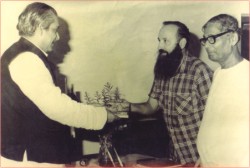 RH (Rafi Hossain): Jasim
Uddin was your friend, right? RH (Rafi Hossain): Jasim
Uddin was your friend, right?
FR: Yes, he was a
very close friend of mine. He used be a whimsical yet
simple person. I roamed around many places with him. When
Bangobondhu Sheikh Mujibur Rahman used to be Prime
Minister, Jasim Uddin and I went to see him. That visit
was so surprising the Prime Minister had no police around
him at all! Bangobondhu, me and Jasimuddin discussed many
issues back then. I recited a poem from 'Gitanjoli' to
Sheikh Mujib.
FR: Because I love Bangladesh too
much. Even if I did not get the citizenship, I would still
be a Bangladeshi at heart. That's why I wish to be buried
here. In 2001, I had a heart surgery in Venice at Saint
Anthony Hospital. Before the operation, I requested my
body to be sent back to Bangladesh in case of my death.
"Dhono dhanne pushpe bhora, amader ei
boshundhora…
oma tomar choron duti bokkhe amar dhori,
amar ei deshete jonmo, jyano ei deshetei
mori."
Father Rigon has realised these words by
Atul Prashad with his own experiences in Bangladesh. He
has fallen in love with Bangladesh, her soil and her
people. He has lived here almost all his life, and wishes
to remain here even after his death. There are many things
we take for granted, such as being a citizen of
Bangladesh. Seldom do we feel proud about being a
Bangladeshi. Father Rigon is a true Bangladeshi; he is a
beacon of dedication an inspiration to all of us (Daily
Star, January 3, 2009).
12. THE POET AND HIS DAUGHTER - by Khushwant
Singh
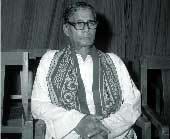 Last week, Hasna Maudud, the
only Bangladeshi friend I have, dropped in to spend the
evening with me. She used to come every year on her way to
Ajmer on pilgrimage to the shrine of Khwaja Mueenuddin
Chishti, Ghareeb Nawaz. For the last three years, she did
not come nor wrote to me. She told me why. Last week, Hasna Maudud, the
only Bangladeshi friend I have, dropped in to spend the
evening with me. She used to come every year on her way to
Ajmer on pilgrimage to the shrine of Khwaja Mueenuddin
Chishti, Ghareeb Nawaz. For the last three years, she did
not come nor wrote to me. She told me why.
When
the army staged a coup, it put her husband, who had been
the prime minister of Bangladesh, behind bars. He was
tortured, and freed to sign documents. He was a barrister
with a handsome practice at the high court, and member of
parliament for six consecutive terms. Hasna herself had
also won elections to the nation's parliament. She was
also a professor with academic distinctions from foreign
universities. After he was released, Maudud stood for
election again for the 7th term from his constituency. His
being imprisoned without trial for two years made him a
hero, and he expected to win back his seat without
difficulty. The army command saw that he was defeated.
Hasna was bitter about her experiences. I asked
her what had brought her to Delhi. "To see you and tell
you about my new book,"she replied coyly. Her book, to be
published soon, is Where Women Rule: South Asia. I looked
over her list of women rulers: Indira Gandhi, Benazir
Bhutto, Khaleda Zia, Sheikh Hasina Wajed, Sonia Gandhi,
Sirimavo Bandaranaike, Chandrika Kumaratunga, Mayavati
and, oddly enough, Phoolan Devi, the dacoit queen. She
also does not include women rulers of the Philippines. I
did not question her choice. She admitted that most of the
women rulers inherited their crowns from their fathers or
assassinated husbands.
My introduction to Hasna's
family had an interesting start. Long before Bangladesh
became independent, I ran into her father Jasimuddin, a
distinguished poet, at a writers' conference in Edinburgh.
We were lodged in the same boarding house along with other
writers and poets. We introduced ourselves to each other.
On the first day, he was a little cautious in his approach
towards me. Then he realized I was a harmless sardar. He
greeted me in his Bengali accent "Shordarji aap ko bara
baj gaya?"I acknowledged my personal clock had struck
twelve. "It is a big joke in my country,"he explained to
others. We became friends and sat next to each other at
all the sessions.
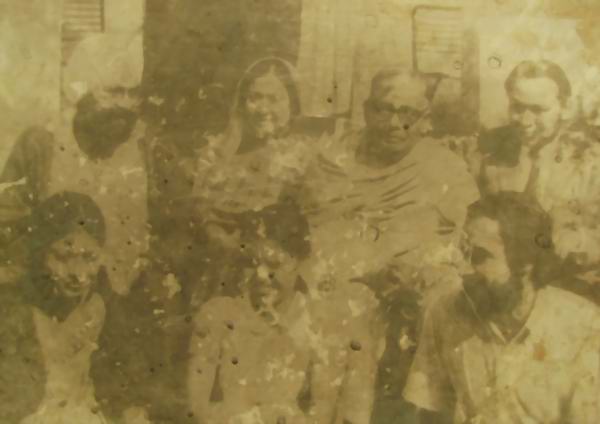 |
When Dhaka
was liberated in 1971, I followed the Indian Army to
report the event for The New York Times. The first thing I
did was to ask my escort to put me in touch with
Jasimuddin. He was a celebrity known to every Bangladeshi
as Kobi Jasimuddin and his house, Palash Bari. I was
invited for dinner and introduced to the rest of the
family, including Hasna and her husband, Barrister
Maudud. When Maudud was elected prime minister of
Bangladesh, my wife and I were invited to be state guests.
We spent a week going round Dhaka. Jasimuddin had died,
but we were royally entertained by Hasna's mother and the
rest of the family. That was good reason for me to have
warm feelings for all Bangladeshis (The Telegraph,
Calcutta, India Saturday , May 30 , 2009 ).
13.Arnob & Friends Live: Spirit of indie wrapped
in commercial sheen
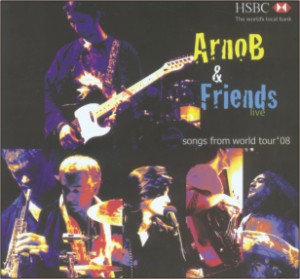 Last year, Drishtipat (a
non-profit expatriate Bangladeshi organisation that works
on human rights) partnered with Arnob for a worldwide
concert to raise funds for its humanitarian projects. 'The
Unheard Voices World Tour' featured Arnob and his
compadres -- Andrew Morris (saxophonist), Nazia Ahmed
(vocalist), Resalat Rasheed ‘Dhrubo' (bassist), Tarek bin
Taher Akhanji ‘Jibon' (drummer) and Nazrul Islam (dhol
player) -- playing to full houses in the UK, US and
Canada. Bengal Music Company Ltd. recently released a live
album (recorded during stage performances) featuring songs
played by the band during the ‘Unheard Voices' tour.
Titled "Arnob & Friends Live,"the album presented by
HSBC, is part of the bank's latest brand campaign. Last year, Drishtipat (a
non-profit expatriate Bangladeshi organisation that works
on human rights) partnered with Arnob for a worldwide
concert to raise funds for its humanitarian projects. 'The
Unheard Voices World Tour' featured Arnob and his
compadres -- Andrew Morris (saxophonist), Nazia Ahmed
(vocalist), Resalat Rasheed ‘Dhrubo' (bassist), Tarek bin
Taher Akhanji ‘Jibon' (drummer) and Nazrul Islam (dhol
player) -- playing to full houses in the UK, US and
Canada. Bengal Music Company Ltd. recently released a live
album (recorded during stage performances) featuring songs
played by the band during the ‘Unheard Voices' tour.
Titled "Arnob & Friends Live,"the album presented by
HSBC, is part of the bank's latest brand campaign.
Music enthusiasts familiar with Arnob are well
aware that the artiste's sound is essentially indie. With
this album, however, Arnob has seemingly decided to
combine the raw energy and warmth that define indie music
with the cutting edge studio produced gloss that makes
mainstream sound lucrative. And there's absolutely nothing
wrong with that. It takes a genius with the Midas touch to
be able to combine Lakshmi and Saraswati. Famed composers
and musicians have laboured throughout their lives to
achieve this. The genre-bending album features 12 tracks
-- some new, some old and some borrowed. The opening song,
"Amaye dhore rakho"(written and composed by Arnob), stays
true to the musician's roots. Andrew Morris deserves
special mention. The Welsh saxophonist is like salt in
Arnob's curry. Morris' sax not only introduces jazz
elements, it changes the whole mood and familiarity of
particular songs.
"Lalpahari"(a folk song from
West Bengal) is a foot-tapping composition based on jhumur
beats. With Nazia as the backup vocalist, Arnob
effortlessly takes the listener to the land of red hills,
far from the hustle and bustle of city life. The song
could just as well be a yearning to break free of
monotony.
"Amay bhashaili re"(written and
composed by Jasim Uddin) is a slow, melancholy take on
the ever-familiar folk classic. Featuring impressive drum
beats by Jibon, Nazia's vocals sound easy to the ear, but
the song somehow lacks that X-factor. Arnob returns with
"Hok kolorob"(written by Rajib Ashraf and composed by
Arnob). This is a renewed cover of a song from one of
Arnob's previous solo albums (with the same title).
Nazia breaks the mould with her cover of "Orey nil
doriya."This classic Bangla film song (written by Mukul
Chowdhuri and composed by Alam Khan) from "Sareng Bou"
gets a complete makeover without losing any of its
essence. It takes a seasoned artiste to sell a song
intended to be sung by the opposite sex, and this emerging
vocalist succeeds with flying colours. Armed with Nazrul's
dhol and Morris' sax, Nazia's rendition of "Amar mon-er
nongor poira roisey Sareng barir gharey..."goes beyond a
sailor's nostalgia and becomes a universal yearning to
reunite with the beloved. Arnob has also included his
interpretation of the Tagore song "Majhe majhe."Rendered
in a scale higher than usual, this devotional piece has a
rather whiny sound, but on the whole it's enjoyable.
The highlight of the album is perhaps the last
track "Nao chhariya de,"another widely known folk song
(written and composed by Jasim Uddin). Arnob and Nazia
gel like yin and yang and Morris' sax sounds surprisingly
inseparable in a folk ditty. This is how it's done. All
fusion and remix enthusiasts should take note. Indie,
folk, semi-classical (Nazia's rendition of a Raaga Yaman
based composition "Piya ki nazariya"), Rabindra Sangeet --
this album should have been called "Jhalmuri Redux."(Daily
Star, Friday, August 14, 2009). )
14.Theatre fest marks birth anniv of Jasim Uddin
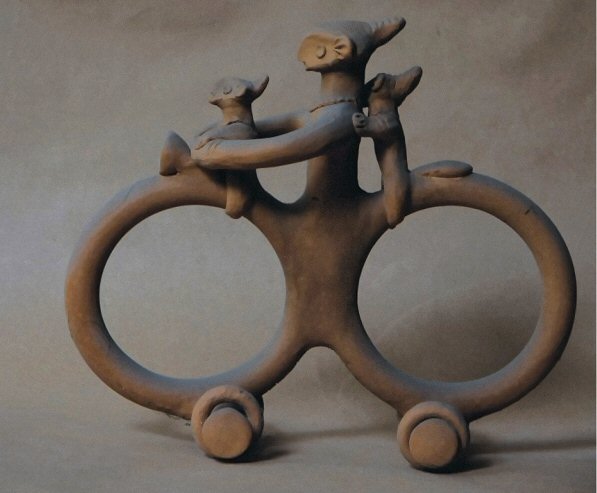 A three-day theatre festival
to mark the 107th birth anniversary of the rural poet
Jasim Uddin ends today at the National Theatre Hall of
Bangladesh Shilpakala Academy. Organised by theatre group
Padatik Natya Sangsad, the festival has featured three
plays based on the poets famous narrative poems Sojan
Badyar Ghat, Nakshi Kathar Math and Beder Meye. The still
living Asmani, the legendary character of the poets famous
poem Asmani, inaugurated the festival January 1. A three-day theatre festival
to mark the 107th birth anniversary of the rural poet
Jasim Uddin ends today at the National Theatre Hall of
Bangladesh Shilpakala Academy. Organised by theatre group
Padatik Natya Sangsad, the festival has featured three
plays based on the poets famous narrative poems Sojan
Badyar Ghat, Nakshi Kathar Math and Beder Meye. The still
living Asmani, the legendary character of the poets famous
poem Asmani, inaugurated the festival January 1.
The state minister for women and children affairs,
Shirin Sharmin Chowdhury was special guest at the
programme chaired by the convener of the festival
organising committee Kazi Rafique. Bangladesh Group
Theatre Federation president Liakat Ali Lucky, Padatiks
vice president Nihat Kabir, representative of V-Care
Wahida Parvin, Shilpakala Academys assistant director Irin
Parveen Lopa and Padatiks secretary Sheikh Moslehuddin
were, among others, present at the inaugural ceremony. The
state minister said, Dreams of Jasim Uddin will be
fulfilled when the rights of the poor children like Asmani
are ensured.
On the opening day, the organisers
staged Sojan Badyar Ghat directed by Kazi Rafique. The
play portrayed on the one hand the rural culture and
festivals in the most artistic manner and the Hindu caste
system and Muslim societies steeped in social inequality
on the other. It also focused on the fact that the two
religious communities had lived in harmony for centuries,
which was disrupted at times by religious fanatics of both
the communities.
Saida Shamchhi Ara Sayeka played
adult Duli and Mihir Talukdar played adult Sojon. Amrin
Alam Brishti, Safikatul Nibir, Maminul Haque Dipu, and
Abdur Rahman Rana played, among others, different roles in
the play. The play was presented in the tradition of the
Jari gaan where a narrator appears in different intervals
and introduces remarkable turns of the story
(Holiday,January 8, 2010)
15. Nakshikanther Math staged /A
The recitation theatre group Udbhasan staged its second production recitation drama Nakshikanther Math, based on rural poet Jasimuddin's popular narrative poem, at National Theatre Hall on January 18.
Directed by Mir Borkat, the drama highlights the love story of two youths of neighbouring villages.
'Unlike many other dramas based on Jasimuddin's poem, we have presented it differently. With the gradual increase in the audience of Jasimuddin's works, we have tried to bring diversification in the presentation', said the director.
Imam Hasan Imu played the role of the male head Rupai and Shraoshi Rahman Shrea the role of Saju. Rita Nahar played the roles of both Saju and Rupai's mother while Tamanna Tithi acted as Borai Buri and Chandra Taposh as ghatak. Shamim Ahsan played the role of Rupai's uncle.
Mir Borkat said as a new drama group, they faced many problems including pronunciation of the performers during the rehearsal. The director said that they chose the poem as it has a strong appeal.
He also said the costume of the drama is different from the typical costumes of dance drama and wears a modern look. Many experimental works including use of a distinct line in the lungi have been used to symbolise modernism.
The play also had a number of shortcomings including light designing and choreography.
The flute as background music delighted the audience and created the rural ambience (Holiday, January 22, 2010).
16. Folk Tales of Bangladesh translated into German language
Geschichten aus Bengalen(Gebundene Ausgabe) von
Jasimuddin (Autor),
Steven Uhly (Herausgeber,
Übersetzer), Ulrike Möltgen (Illustrator)
Produktbeschreibungen
Kurzbeschreibung
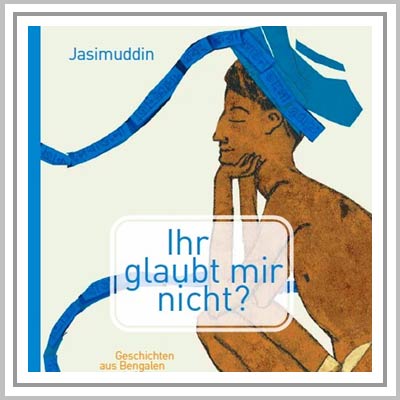 |
Jasimuddin ist der größte
Volksdichter Bangladeschs, der große Tagore sah in ihm den
Begründer einer neuen Dichterschule. Geboren wurde er 1903
in der Nähe von Dhaka und starb eben dort 1976. Seit den
40er Jahren sammelte er die z.T. phantastischen, skurrilen
und oft sehr humorvollen volkstümlichen Erzählungen seiner
Heimat und brachte sie erstmals 1961 heraus. Die letzte,
leicht erweiterte Ausgabe erschien 1974. Sie liegen nun
erstmals in deutscher Sprache vor, übersetzt von Steven
Uhly, versehen mit 15 künstlerisch hochkarätigen
Illustrationen von Ulrike Möltgen, Meisterschülerin von
Wolf Erlbruch und anerkannte Buchillustratorin. Ein
Nachwort von Steven Uhly gibt Aufschluss über den Autor
und sein Werk.
Die hilfreichsten Kundenrezensionen
Die Geschichten aus Bengalen werden wohl fast
jedem hierzulande unbekannt sein, denn niemand kennt
Bengalen oder seine Geschichten. Das Buch IHR GLAUBT MIR
NICHT? von Jasimuddin versammelt 15 Geschichten in eigener
Sprache und Philosophie des Autoren, ansprechend und
treffend illustriert mittels Collagen von Ulrike Möltgen.
Einzig und allein der Kleber und der Geruch der Seiten
irritierten mich etwas, wie ein normales Buch roch das
nicht - leider gab das Buch keinen Aufschluss darüber, ob
ein besonderer Kleber verwendet wurde.
Ob es die
Geschichte DIE JACKFRUCHT ist oder die Geschichte DER ZWEI
TONNEN RINGER immer schwingt die Atmosphäre und ein
Landschaftsbild der Region mit. Die Geschichten
transportieren, Bewusstsein, Historie, Gemeinschaft und
das Lebensgefühl der Bengalen mit sich und lasen uns in
eine exotische Welt eintauchen. Auch hier wird moralisiert
und bewertet, der Gute und der Böse sind ebenso bekannt
und Auseinandersetzungen werden ausgetragen - nur die
Umgebung ist anders, fremdartig und doch schön.
Ich glaube dem Autoren, seine fremde Welt ist
schön, eigenartig und eigentümlich, doch schön und
kraftvoll, die Bilder klar und von Weisheit durchdrungen.
Bengalen - ein Land mit Geschichten, über Geschichten und
durch Geschichten entstanden. Empfehlenswert! |
resonanzen-weltweit
Jasimuddin: Ihr glaubt mir nicht? .
Geschichten aus Bengalen. Mit Bildern von
Ulrike Möltgen.
Uebersetzt und hrsg. von Steven Uhly.
2009.
80 Seiten mit 15 Illustrationen.
Halbleinen
- Muenchner Frühling -
32.80 EUR
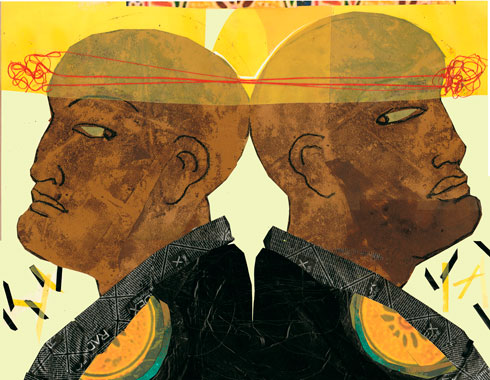 Wie kein anderer hat der bengalische Schriftsteller Jasimuddin die Seele der Menschen zwischen Ganges und Brahmaputra erfasst. Und wie kein anderer fing er das Leben der Fischer und Reisbauern ein: liebevoll und gleichzeitig ironisch; wortgewaltig und bilderreich. Illustriert wurden seine märchenhaft phantastischen Erzählungen von der Wolf Erlbruch Schülerin Ulrike Möltgen, deren Collagen von einer Berliner Ausstellung ins Heine Haus wandern. Der Übersetzer Steven Uhly liest den deutschen Text. Wie kein anderer hat der bengalische Schriftsteller Jasimuddin die Seele der Menschen zwischen Ganges und Brahmaputra erfasst. Und wie kein anderer fing er das Leben der Fischer und Reisbauern ein: liebevoll und gleichzeitig ironisch; wortgewaltig und bilderreich. Illustriert wurden seine märchenhaft phantastischen Erzählungen von der Wolf Erlbruch Schülerin Ulrike Möltgen, deren Collagen von einer Berliner Ausstellung ins Heine Haus wandern. Der Übersetzer Steven Uhly liest den deutschen Text.
Jasimuddins Poesie weist einen neuen Weg, ihr Stil und ihre Sprache sind neu in der Literatur Bengalens.
Rabindranath Tagore
Moderation: Ricarda Solms (Verlegerin)
Veranstalter: Verein zur Foerderung des Heinrich-Heine-Geburtshauses e.V., Mueller & Boehm Literaturhandlung
Ort: Heine Haus, Bolkerstr. 53, 40213 Duesseldorf. Eintritt: EUR 8,–/6,– (erm.)
17. Father Marino Rigon: Jasim Uddin deserved a Nobel Prize
 Father Marino Rigon expressed his love for Bangladesh in this letter to his brother, who lives in Italy. Marino shares, ‘I love Bangladesh and am proud to have received an honorary citizenship from this country.' The citizenship was bestowed upon him due to his contribution towards Bangla literature and for his passionate religious commitment to the society. Father Marino Rigon expressed his love for Bangladesh in this letter to his brother, who lives in Italy. Marino shares, ‘I love Bangladesh and am proud to have received an honorary citizenship from this country.' The citizenship was bestowed upon him due to his contribution towards Bangla literature and for his passionate religious commitment to the society.
Till date, he has translated 45 of Rabindranath Tagore's literary works into Italian. These include songs, poetry, articles.
He has also translated , Jasim Uddin's Nakshi Kather Math and Sujon badiar Ghat.
Jasim Uddin deserved a Nobel Prize
He talks about renowned known literates also. ‘Jasimuddin was a very good friend of mine. He used to lead a simple life. I roamed around Bangladesh with him. When Bangabandhu Sheikh Mujibur Rahman became prime minister, Jasimuddin and I went to see him. The visit was rather unusual as the prime minister had no police around him at all! The three of us discussed many issues back then. I even recited a poem from Gitanjali to Sheikh Mujib,' he shares.
About Jasimuddin, he continues, ‘Jasimuddin was a real poet who drew a picture of rural Bangladeshi life through his poetry. He deserved a Nobel Prize.' Rigon's love for Bengali literature drove him to translate poems of Rabindranath Tagore, Palli Kobi Jasimuddin, Sharatchandra and Lalon Shah, as he wanted others of the world to know about the works of these maestros.
(From Bengali Music)
18. Celebrating an eternal appeal, NEW DELHI,The Hindu, Oktober 21, 2010
Celebrating an eternal appeal, NEW DELHI,The Hindu, Oktober 21, 2010
A Bangladesh poet Polli-kobi Jasimuddin's tragic love poem Nakshi Kanthar Math, throbbing narration/singing by Sasha A. Ghoshal, female voice of Karuna Devi, Manipuri folk instruments like the Pena tugging at one's heart strings, and the high aesthetic sensitivity of Manipuri dancer Priti Patel in "The field of the Embroidered Quilt"moved every viewer with the majesty, and stillness of minimal art, highlighting rural life , Rupa's hopes, dreams and anguish embroidered on the quilt for covering her grave .
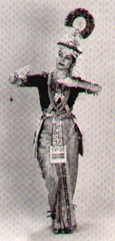 Priti Patel is a leading Manipuri dancer of the new generation. A premier disciple of Guru Bipin singh, She has also studied under Guru Babu Singh and received guidance in different aspects of Manipuri dance, music and martial-art traditions from such experts as Khetritombi Devi, Khelchandra Singh, Kumar Maibi and Surchand Sharma. She has also taken training in stage lighting from Tapas Sen and in movement therapy at Kesley College, boston.
With comprehensive training and a performing experience of almost two decades, Priti Patel has established herself as a dancer of accomplishment and commitment. Through her organization, Anjika in Calcutta, she has been engaged in training and promotion of the art. She has performed in major festivals including the Khajuraho Dance Festival, Bhagyachandra Dance Festival, and the Festival of India in France and the USSR.
Priti Patel is a leading Manipuri dancer of the new generation. A premier disciple of Guru Bipin singh, She has also studied under Guru Babu Singh and received guidance in different aspects of Manipuri dance, music and martial-art traditions from such experts as Khetritombi Devi, Khelchandra Singh, Kumar Maibi and Surchand Sharma. She has also taken training in stage lighting from Tapas Sen and in movement therapy at Kesley College, boston.
With comprehensive training and a performing experience of almost two decades, Priti Patel has established herself as a dancer of accomplishment and commitment. Through her organization, Anjika in Calcutta, she has been engaged in training and promotion of the art. She has performed in major festivals including the Khajuraho Dance Festival, Bhagyachandra Dance Festival, and the Festival of India in France and the USSR.
Back to Content
19. The Reading Circle (TRC) and Indira Gandhi Cultural Centre of the High Commission of India jointly organised a reading of "The Field of the Embroidered Quilt", the English version of 'Polli Kobi' Jasim Uddin's "Nakshi Kanthar Math", February 23, 2011
As part of the observance of the International Mother Language Day [February 21], The Reading Circle (TRC) and Indira Gandhi Cultural Centre of the High Commission of India jointly organised a reading of "The Field of the Embroidered Quilt", the English version of 'Polli Kobi' Jasim Uddin's "Nakshi Kanthar Math", at the IGCC premises on February 18.
In her opening remarks, Professor Niaz Zaman narrated the background of the session and also informed the audience that TRC had stepped into its sixth year. In his address, Ankan Banerjee, director, IGCC, appreciated the programme and emphasised the continuing cooperation between Bangladesh and India in the cultural field. He praised the strides TRC had made in the last five years and noted the efforts made to that end by Professor Niaz Zaman and Asfa Hussain, among others.
Those who took part in the reading of "The Field of the Embroidered Quilt" were Professor Niaz Zaman, Salma Karim, Shahruk Rahman, Farida Shaikh, Jackie Kabir and Syed Badrul Ahsan.
Jasimuddin Bengali Folk Life Epitomised
"Jasimuddin knows every fact of village life in Bengal and is partial to rural people. The heroes of his poems and stories are farmers, fishermen, boatmen, weavers, cowherds, even roadside barbers, wandering gypsies, palmists and astrologers…"
-- Verrier Elwin [anthropologist, ethnologist and tribal activist]
In a foreword to the translation of Jasimuddin's "Nakshi Kanthar Math", Elwin wrote, "I do not know whether 'The Field of the Embroidered Quilt' [Nakshi Kanthar Math] can be classed as flk-poetry, but it is obviously poetry about the folk. After nearly ten years of village life [in undivided India] I find every detail of the picture, every turn of the story, waking a response in my mind." What Elwin said of "The Field" can also be said of "Gipsy Wharf" [Shojon Badiyar Ghat]. The two poems were written within four years of each other, while Jasimuddin was still at Calcutta University, doing research under the famed Bengali scholar, Dr. Dinesh Chandra Sen.
March 13 marked the 35th death anniversary of Jasimuddin.
Jasimuddin was born on January 1, 1903 at Tambulkhana in Faridpur. He completed IA from Rajendra College in 1924, and BA and MA in Bangla from the University of Calcutta in 1929 and 1931 respectively.
In 1938 he joined the University of Dhaka as lecturer. He left the university in 1944 to join the Department of Information and Broadcasting. He continued working there, until his retirement as Deputy Director in 1962.
Jasimuddin's poetic prowess developed early. As a college student, he wrote the poem "Kobor" (Grave). The poem, a dramatic monologue of an old man talking to his grandson in front of his wife's grave, was included in school textbooks while Jasimuddin was still a student at university.
His first book of verse, "Rakhali" (Shepherd), was published in 1927. Other notable books include "Nakshi Kanthar Math" (1929); "Shojan Badiyar Ghat" (1933); "Rangila Nayer Majhi" (1935); "Matir Kanna" (1951); "Suchayani" (1961); "Padma Nadir Deshe" (1969) and "Beder Meye" (1951). He edited two books on folk music: "Jari Gaan" (1968) and "Murshida Gaan" (1977).
Known to Bengalis as 'Polli Kobi' (folk poet), Jasimuddin poetry is a testament to the unpretentious, effortless appeal of rural Bengal and folk life. His poetic rhythms are drawn from folk elements, easy on the ear and quick to imbed themselves in the memory. He was also a writer of fine prose -- fluent, witty, and expressive.
Jasimuddin was one of the pioneers of the progressive and non-communal cultural movement in Bengal. He was an ardent supporter of socialism and of Bengali nationalism. In the 1950s when the government of Pakistan attempted to stop broadcasting Tagore songs, he protested boldly.
Jasimuddin also composed numerous songs in the tradition of rural Bengal. His collaboration with folk singer extraordinaire Abbasuddin produced some of the gems of Bangla folk music, especially of the Bhatiali sub-genre. Jasimuddin also wrote some modern songs for the radio. "Nisheethey Jaiyyo Phoolbon-e Re Bhromora", written by Jasimuddin and recorded by the legendary music composer-singer Shachin Dev Barman remains hugely popular to this day.
In 1969 Jasimuddin was awarded the DLitt by Rabindra Bharati University. He also won several awards, including Ekushey Padak (1976) and Swadhinata Dibas Puroshkar (posthumous, 1978). Jasimuddin died in Dhaka in 1976 and was buried in his own village.
(Daily Star, March 16, 2011)
Back to Content
Jasim Uddin's Homage to Ramesh Shil
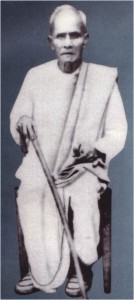 In the world of Kabigaan, Romesh Shil is a legendary figure. In his time, he was the undisputed master of the art. He would take on three kabiyals at a time, on the same stage, and would inevitably prevail. From the backwaters of Chittagong to center-stage of Calcutta's famed Mohammad Ali Park, all has experienced his poetic feats. In this issue's cover story, we look at Romesh Shil the man, the kabiyal, and the icon. In the world of Kabigaan, Romesh Shil is a legendary figure. In his time, he was the undisputed master of the art. He would take on three kabiyals at a time, on the same stage, and would inevitably prevail. From the backwaters of Chittagong to center-stage of Calcutta's famed Mohammad Ali Park, all has experienced his poetic feats. In this issue's cover story, we look at Romesh Shil the man, the kabiyal, and the icon.
Introduction
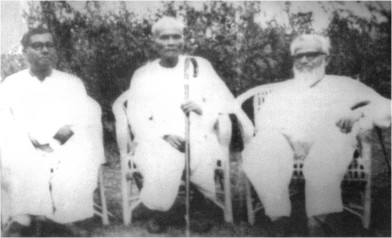 Constantly lost in his own world of rhymes and melodies. When his father - on whom the family was completely dependent for its upkeep - died, the 11-year-old Romesh was thrust into the role of the provider. At 12, he set off for Akiyeb, Myanmar, and worked at a barbershop for seven long years. At 19, the music drew him back to Bangladesh. He would take off on a moment's notice to the jolshas of the neighboring villages, an unfettered youth, the man of the house. Constantly lost in his own world of rhymes and melodies. When his father - on whom the family was completely dependent for its upkeep - died, the 11-year-old Romesh was thrust into the role of the provider. At 12, he set off for Akiyeb, Myanmar, and worked at a barbershop for seven long years. At 19, the music drew him back to Bangladesh. He would take off on a moment's notice to the jolshas of the neighboring villages, an unfettered youth, the man of the house.
At the time, the the Sadarghat area of the city would host the annual "Jagadattri Puja"with much fanfare. The central attraction of the event was Kabigaan. It would draw a big crowd, a crowd that would inevitably include the young Romesh Shil. Around the year1898, two heavyweight kabiyals, Chittaharan and Mohon Bashi, have taken the stage, ready to start the battle of the verses. But before things could get started, the venerable Chittaharan lost his voice. The crowd was not happy, and they began to show it. The announcement was made - if there is there is another kabiyal in the crowd, please get on the stage. Romesh was still more a kid than a kobiyal, but his friends force him forward, and a scared and shaking Romesh Shil found himself on the stage. And the rest, as they like to say, is history.
The topic of debate for the day was Shurponokha versus Modhu Doitta, two characters from the Ramayana. Before the debate would start in earnest, the opponents would take turns introducing each other. Here the veteran kobiyal took some well-aimed shots at the young pretender, branding him "the little brat", barber, among other things. In response, this was Romesh Shil's first verse :
Uttshaha ar bhoy (Enthusiasm and fear)
Lojjao kom noy (And a bit bashful)
Keba thamaybe kare (But who can stop whom?)
Puchke chora shotti mani (I may be a little brat)
Shishu Dhrubo chilo gaani (But the child Dhrubo was ever wise)
Chena jana hokna a ashore (Let us get to know each other on this stage)
The power of young Romesh's logic and presentation grew in precision and strength from one verse to the next. The night came to an end, as did the following morning, and the afternoon, and then the evening. But there was no end in sight. The organizers were forced to arrange a truce between the two, and Romesh Shil was given a prize of cash money. Word of the "new kabiyal"spread hard and fast. From then on, Romesh Shil became a regular fixture at any gathering of note in the region.
Slowly but surely, his fame began spread out across the entire nation. Beyond Chittagong, he first performed at the 8th conference of provincial farmer's union North Bengal's Hatgabindapur. This was the first time he revealed himself in front of all the leftist elements of Bengal. That same year, he found an even bigger leftist stage for himself, when he performed at the 3rd annual conference of "Anti-fascist Writers and Artistes Union", in Calcutta. In 1948, he performed at the "All India Farmers Conference". Kobiyal Romesh Shil sung his songs for over six decades, and ushered in a new era for his much-loved art.
Kabigaan and Romesh Shil
The last half of the nineteenth century and the first half of the twentieth century is generally regarded as the golden age of Kabigaan. In an age without the mass media, the kabiyals were the trusted information-merchants of society. Kabigaan traditionally got its subjects from the Hindu classics and other folk myths. Popular topics included: Ram - Rabon, Radha - Krishna, Shurponokha - Modhu Doitta, Naradh - Mohadeb, and Hanifa - Shonabanu. What set Romesh Shil apart was that he broke out of this mould and chose his own subjects: Man- Women, Truth - Lies, Sadhu - Grehasta, Master -Disciple, Gold - Iron, Rich - Poor, Wealth - Knowledge.
As time went by, his songs became even more socially-aware. When he came in contact with the Indian Communist Party, the songs took on an entirely new dimension. He started to address more complex ideas: Wealth - Science, War - Peace, Farmer - Labourers, Farmers - Landlords, Autocracy - Democracy, Capitalism - Socialism. The changes he introduced to kabigaan were nothing short of revolutionary. By making kabgaan socially-aware, he made it more relevant to society than it had been ever before. In the 200 year old history of kabigaan, this was a fundamental change
Another of his major contributions was the refinement of the kabigaan language. In the eighteenth century, the use of expletives in kabigaan was standard practice. Spiced-up descriptions were the main attraction of most of the songs. By choosing to abandon this trend, Romesh Shil made kabigaan much more intimate to the lives of its audience. Instead of juicy songs about mythic subjects, his songs dealt with the vicissitudes of life, and there was simply no place left for the spice. In place of racy songs, sung in the haze of late-nights, accompanied by the din of drums, Romesh Shil would sing:
Ak jagate darai jodi chasi mojurgon (If we farmers and laborers stand together)
Akasher chan matite ante lage kotokkhon (How long can it take to bring down the moon from the sky)
Na karile dukha born shukher asha dekhi na (If we do not accept the pain, we cannot hope for happiness)
His third significant contribution to kabigaan was the innovations he introduced to its structure and formats. In the 18th century, the formats and constituent parts of kabigaan generally included the following;
Bhabani Bishoi: Hymns honouring goddesses or gurus
Shokhi Shongbad: Songs about Radha-Kirshna
Biraha: Songs about the estrangement of Radha-Krishne
Kheyur: Hindu classics and myth based interplay
* Lohor: Personal attacks and counter-attacks of the opposing kabiyals
Jotok: Songs sung in closure, in case the kabigaan session yields no victor
Romesh Shil replaced Bhabani Bishoi with hymns for the motherland. Instead of Shokhi Shongbad, his songs would greet the audience, or describe various passages from history. In the Biraha segment, he would sing folk songs, spiritual songs, and rhymes. More often than not, he would choose the role that is apparently more difficult; the goal being not victory, but the refinement of his art.
The refinements Romesh Shil introduced to kabigaan was not confined to just himself and his disciples. His unique blend of creative prowess and organizational zeal spread across the expanses on the undivided Bengal. We would not be too far away from the truth in claiming that kabigaan, as we know it today, is in fact mostly Romesh Shil's kabigaan.
The kobiyal and his time
Romesh Shil spent over six decades traversing from one end of Bengal to the other with his musical troupe. Both physically and ideologically, his music never found itself in the same place for too long: sometimes extremely nationalistic, sometimes deeply communist, while at other times intimate to the spiritual philosophy of Sufi Maijbhandari. When Khudiram was hung at the gallows, he sang:
Dhonno chele mayer kole
Aka geli chole.
Thakte tetrish koti bhatra, shongi fele
Aka holo Khudiramer fashi.
In his later years, involved with the Six Point movement of Bangladesh, he would sing:
Sharbajonin bhot bhai, protokho nirbachan chai,
Aro chai ancholic shaitto shashan.
The body of work he has left behind talks of all major socio-political events over the six decades of his kabiyal career. He was always a keen observer of humanity, and from the vantage point of demonstrations, political gatherings and prisons, he would observe the ebb and flow of society, and record them through his songs and poems. He had lived through the First World War, the Non-Cooperation Movement, Chittagong's Youth Revolution, the Second World War, the subcontinent's Race Riots, Bangladesh's Language Movement, election of the United Front, Ayub Khan's military rule and the Six Point movement.
Little wonder than, with the weight of all these intense experiences behind him, that without any form of formal training or education, the kobiyal was able to construct his masterpieces, such as his epic poem "Jatiya Andalan".
In the 1940's, he joined the Indian Communist Party. The communist party mouthpiece the "Janajuddha" periodical had a influential part to play in his induction. On this, he said:
"Suddenly I ran into a boy I had known for a while. He was carrying a publication. It had 'Janajuddha' written on top of it. The boy said, take it, have a read. Took it home, read it front to back. I never had the chance to get to know my country like this. Really felt encouraged to start writing again. I had the urge for a while, I finally found the means."
The following decades saw the influence of the communist ideals and agenda increase steadily on his work. He would sing to the workers:
Amar khune motor gari, tetala choutala bari
Tomar khune radio ar bijli bati jole
The kabiyal life was never easy. Scarcity and suffering was chronic throughout. But he never deviated from his ideals. In 1958, he was arrested for his opposition of military rule, putting to an end the "literary stipend"he used to receive from the government. Even then he refused to give up. Sitting in his prison cell, at the age of 77, he wrote
Banglar jonno jibon gele hobo shorgobashi
Amar thik thakibe Banglar dabi jodio hoy jel fashi
Each year, on the last week of the Bengali month of Chaitra, the kobiyal's old home takes on a new guise. A decorated stage is constructed for the groups of harmonium and dhol wielding poets. They battle it out with each other, just like they used to in the old times. But they don't do it for the thrill of victory, nor the ideals of refining their art, but to honour the memories of the master kabiyal, Romesh Shil, on his death anniversary. In the spirit of these battles, the spirit of Romesh Shil lives on, and it continues to sing the jotok:
Ak jagate dara-e jodi chasi mojurgon,
Akasher chan matite ante lage kotokkhon.
Romesh Shil through the years
Kabiyal Romesh Shil in 1877, in the village of Gomdondi, under Boyalkhali thana of Chittagong district.
Realizing his passion for music, his father buys him a book called "Brihat Tarjar Lorai". This was a book on improvised verses, in a competitive context. This was perhaps the moment that sealed the kabiyal's fate for life.
In 1887, his father dies, leaving a 11 year old Romesh Shil to fend for his family.
In the face of extreme poverty, he leaves for Akiyab, Myenmar, and works at a barbershop for seven years.
Romesh Shil returns to Bangladesh in 1895.
In 1898, performs kabigaan for the first time on a stage in Chittagong's Sadarghat Jelepara, and achieves widespread fame overnight.
In 1923, arrives at the famous "Maijbhandar Urash"in Najihat. There he meets the Maijbhandar Peer Golam Rahman, and writes the song "Iskool khuilase re moula, iskool khuilase", a song that is popular to this day.
In the 1940's, he comes in contact with the Communist Party of India, and becomes a member in 1944.
In 1952, he writes songs for the Language Movement, and actively participates in it.
In 1954, actively participates in the election, on the side of the United Front.
In 1958, he is incarcerated for opposing the military rule of Ayub Khan, and "Bhot Rahassha"(The Vote Mystery), a pamphlet he wrote, is banned.
In 1969, Romesh Shil passes away.
In 1993, Bangla Publishes a collection of his entire body of work, "Romesh Shil Rachanaboli".
(Saba El Kabir,April 23, 2010).
Back to Content
22. A three-day festival by Padatic Natya Sangsad
The new year began on a high note for theatre lovers, as many theatre troupes staged plays at different venues of Bangladesh Shilpakala Academy (BSA) on January 1.
A three-day festival by Padatic Natya Sangsad to mark the 107th birth anniversary of Polli Kobi Jasimuddin ends today at the National Theatre Hall. Nagarik Natyangan's two-day 15th anniversary celebration programme ended yesterday at the Experimental Theatre Hall. Both the festivals began on January 1.
Among the numerous characters created by Jasimuddin, perhaps 'Asmani' is the most popular. To everyone's surprise, Asmani, now an aged woman, was invited to inaugurate the festival by lighting candles. State Minister for Women and Children Affairs Dr. Shirin Sharmin Chowdhury was the special guest at the inauguration.
Liakat Ali Lucky, chairman, Bangladesh Group Theatre Federation was among the speakers at the programme.
On the first day, dance drama "Shojon Badiar Ghat" was staged. Based on Jasimuddin's eponymous ballad , the drama was directed by Kazi Rafique.
Two other plays, based on Jasimuddin's works, "Nakshi Kanthar Math" and "Beder Meye" were staged at the festival.
Nagarik Natyangan's 15th anniversary celebration began with dance and a mini procession by the members of the troupe. The procession circled around the BSA premises. Members of the troupe also sang several songs including Rabindra Sangeet at the lobby of Experimental Theatre Hall.
Former advisor to the caretaker government, Rasheda K Chowdhury was the chief guest at the inaugural programme. Among the speakers at the programme were poet Asad Chowdhury, theatre personalities Lucky Enam and Dr.Enamul Huq, president of the troupe.
The troupe awarded crests to 11 of its talented and dedicated members. Rasheda K Chowdhury handed over the crests to the young theatre activists.
Lucky Enam, who is also the general secretary of Nagarik thanked everyone on the occasion and expressed the hope that the troupe will continue to create awareness among the masses through theatre.
Two plays were staged throughout the two days of Nagarik festival. On the first day (January 1), Liberation War based play "Sheishob Dinguli" was presented. Written by Dr. Enamul Huq, the play has been directed by Lucky Enam.
On the second day, Nagarik's acclaimed production "Pragoitihashik" was staged. "Pragoitihashik" is an adaptation by Mahmudul Islam Selim of a short story by Manik Bandyopadhyay. The play is directed by Lucky Enam.
Apart from the two festivals, theatre troupe Battala staged its production "Dhamail" at the Studio Theatre Hall on January 1.
Back to Content
23. A 'Protirodh (resistance) Committee' was formed at poet Jasimuddin's home, 1967
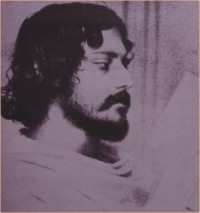 "Cultural activism in the pre-Liberation era began with the Language Movement. Pakistan was created based on religious identity. However, Bengali Muslims soon realised that they have a unique linguistic and cultural identity," says Dr. Ali.
"In the '60s that self-rediscovery resulted in cultural activism. Cultural uprising went parallel to the political protests. A landmark was the birth of Chhayanaut, one of the leading cultural organisations of the country, during the Tagore birth centenary celebrations. The celebrations provided an initial impetus for rallying around the poet as a symbol of secular Bengali cultural identity.
"Cultural activism in the pre-Liberation era began with the Language Movement. Pakistan was created based on religious identity. However, Bengali Muslims soon realised that they have a unique linguistic and cultural identity," says Dr. Ali.
"In the '60s that self-rediscovery resulted in cultural activism. Cultural uprising went parallel to the political protests. A landmark was the birth of Chhayanaut, one of the leading cultural organisations of the country, during the Tagore birth centenary celebrations. The celebrations provided an initial impetus for rallying around the poet as a symbol of secular Bengali cultural identity.
"In 1967 Pahela Baishakh (Bangla New Year) was celebrated on a mass scale at Ramna Park. Chhayanaut arranged the event. I've been with Chhayanaut ever since.
"As the nationalist movements gained momentum, each year the turnout at the Pahela Baishakh celebration grew.
"University students formed a cultural group called 'Shangskriti Shangshad. Many of the noted cultural and media personalities of the country have been members of that group," he says.
"On Ekushey (February 21), discussions and processions were held in the morning. The evening session of the programme at Shaheed Minar featured performances by renowned and young artistes including Ajit Roy, Fahmida Khatun, Zahedur Rahim and Shaheen Samad. Altaf Mahmud conducted two of the programmes. Not only in Dhaka, artistes performed in other districts as well to generate awareness in the ongoing cultural movement.
"The movement brought everyone together when in 1967 the Pakistani information minister banned the performance of Rabindra Sangeet from state-run radio. On Tagore's death anniversary leading artistes held a programme disregarding the ban. A 'Protirodh (resistance) Committee' was formed at poet Jasimuddin's home," The Daily Star,Dr. Ali June 26, 2011.
Back to Content
24. Theatre fest marks 107th birth anniv of Jasim Uddin
A three-day theatre festival to mark the 107th birth anniversary of the rural poet Jasim Uddin ends today at the National Theatre Hall of Bangladesh Shilpakala Academy.
Organised by theatre group Padatik Natya Sangsad, the festival has featured three plays based on the poets famous narrative poems Sojan Badyar Ghat, Nakshi Kathar Math and Beder Meye. The still living Asmani, the legendary character of the poet's famous poem Asmani, inaugurated the festival January 1.
The state minister for women and children affairs, Shirin Sharmin Chowdhury was special guest at the programme chaired by the convener of the festival organising committee Kazi Rafique. Bangladesh Group Theatre Federation president Liakat Ali Lucky, Padatiks vice president Nihat Kabir, representative of V-Care Wahida Parvin, Shilpakala Academy's assistant director Irin Parveen Lopa and Padatik's secretary Sheikh Moslehuddin were, among others, present at the inaugural ceremony.
The state minister said, Dreams of Jasim Uddin will be fulfilled when the rights of the poor children like Asmani are ensured.
On the opening day, the organisers staged Sojan Badyar Ghat directed by Kazi Rafique. The play portrayed on the one hand the rural culture and festivals in the most artistic manner and the Hindu caste system and Muslim societies steeped in social inequality on the other. It also focused on the fact that the two religious communities had lived in harmony for centuries, which was disrupted at times by religious fanatics of both the communities.
Saida Shamchhi Ara Sayeka played adult Duli and Mihir Talukdar played adult Sojon. Amrin Alam Brishti, Safikatul Nibir, Maminul Haque Dipu, and Abdur Rahman Rana played, among others, different roles in the play.
The play was presented in the tradition of the Jari gaan where a narrator appears in different intervals and introduces remarkable turns of the story (Holiday, January 8, 2010).
Back to Content
25. Singer Azam Khan
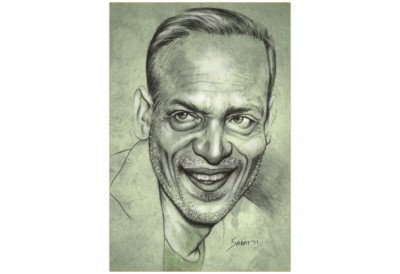 Singer Azam Khan was born in Azimpur Colony, in Dhaka, on February 28, 1950. When he was six, his family moved from Azimpur to Komolapur. Singer Azam Khan was born in Azimpur Colony, in Dhaka, on February 28, 1950. When he was six, his family moved from Azimpur to Komolapur.
"There were only a few buildings in Komolapur back in the day. The area was almost like a village. Sometimes, after sunset, wild animals such as jackals would be visible on the streets. I had a reputation of being adventurous; nevertheless, I was afraid of jackals and never went out at night.
"There were several orchards in our area, namely Kobi Jasimuddin'er Bagan, Bepari'r Bagan, Daroga'r Bagan and many more. Except for apples and grapes, almost every fruit was available in the orchards. We used to pick fruits often,"says Khan.
This habit of picking fruits without asking the owners caused an interesting incident one day. Khan recalls that it was at poet Jasimuddin's orchard, where one day he was caught red-handed by the poet himself. "I and some of my friends went into the orchard to pick a jackfruit. When we were about to eat the fruit, the poet caught us. We started running away. I heard the poet shout, 'go after finishing the fruit.' Later we came to know that the poet himself found the incident hilarious,"Khan recalls
( Daily Star, 07. 01. 10).
Back to Content
26. Bangla language getting distorted
Bangla language is gradually losing its standard and getting distorted for lack of proper practice and research.
daily sun Editor Prof Dr Syed Anwar Husain said this while addressing a ceremony in the city to honour four litterateurs
Prof Dr Syed Anwar Husain said, "The practice of distorted language is misguiding people, particularly the young generation."
People, particularly the educated persons, are distorting Bangla language despite our achieving it at the cost of blood.
Dwelling on Adhunik Palli Kabi Jasim Uddin, a book written by Anu Mahmud, he said poet Jasim Uddin was a unique poet and his writing style and language was different from Rabindranath Tagore.
Poet Jasim Uddin was both religious and secular at the same time, he added (Daily Sun, April 21, 2011).
27 Sujon Badiar Ghat

28. Jasim Uddin: AFC's First
Collection of Bengali Folksong, Libary of Congress, USA
Jasim Uddin, Bengali poet and folklorist
JENNIFER CUTTING, Folklife Specialist,and
STEPHEN WINICK, Writer-Editor,
(INDIAN FOLKLIFE SERIAL NO.37 APRIL 2011)
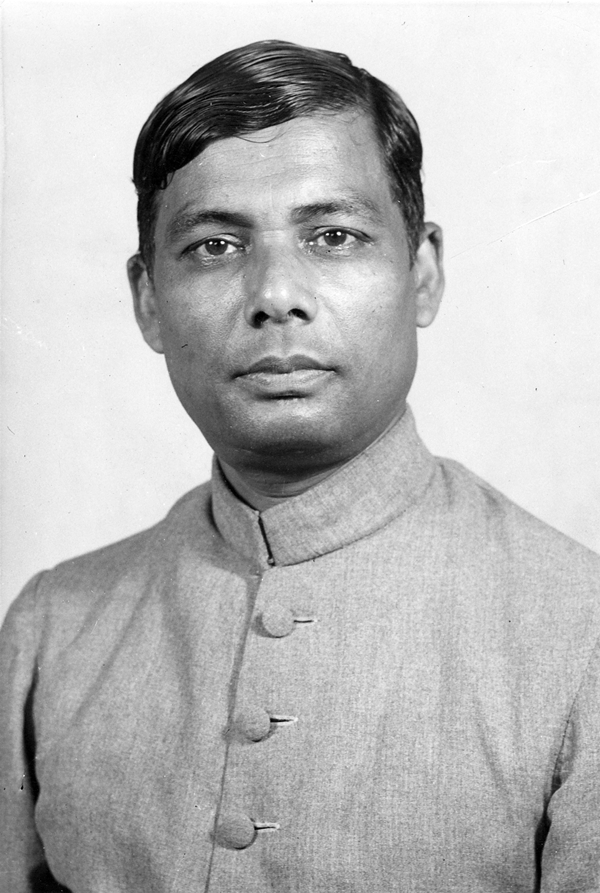 In 1958, the American Folklife Center (AFC)
Archive acquired its first recording of Bengali
folksong. Fifty years later, AFC repatriated this
material to Bangladesh, sending a copy to the Folk
Culture Museum at Jasim Uddin House in Faridpur.
There patriation reflected the American Folklife
Center's ongoing and evolving commitment to the
preservation and stewardship of intangible cultural
heritage, and to providing communities of origin with
access to their materials. In 1958, the American Folklife Center (AFC)
Archive acquired its first recording of Bengali
folksong. Fifty years later, AFC repatriated this
material to Bangladesh, sending a copy to the Folk
Culture Museum at Jasim Uddin House in Faridpur.
There patriation reflected the American Folklife
Center's ongoing and evolving commitment to the
preservation and stewardship of intangible cultural
heritage, and to providing communities of origin with
access to their materials.
The field recording in question features Bengali
folklorist and poet Jasim Uddin (1904-1976), known
in Bengali as "Pallikabi,"or "The People's Poet."
It contains ten performances of Uddin singing
traditional Bengali folksongs, and providing
commentary and English translations for the collectors.
The Jasim Uddin Recording: a Summary
Uddin organized his recording session according the
life-cycle customs of Bangladesh. Hence, his first
selection is what he terms a "birth song,"and this is
followed by a children's song. The latter demonstrates
that Uddin was a traditional singer in his every day life;
upon hearing the recording, Uddin's son, Dr. Jamal
Anwar, commented: "My father used to sing [this] to
me. I still remember the son."
The third piece is among the most interesting selections.
It is a rain song, which, Uddin says, unmarried girls
would sing while marching in a procession from house
to house in times of drought.
Interestingly, Uddin
described this custom more fully in his poetry:
Into this village came a band of girls
At such a season of dearth;
Singing the song of the marriage of rain,
Th at rain might fall on the earth.
Five girls in a chain, fi ve painted fl owers,
But she is without compare,
Who stands in the centre in colour of gold,
Thefairest of the fair. 1
Uddin then sings a rhythmic work song, which he states
is for tasks "like pulling a boat for a long distance";
two war songs for "when the head man of the village is
exciting his comrades to fi ght"; and a narrative song,
"in which the King's daughter is dressing herself."
Following the narrative piece, Uddin sings a love song,
and gives a full translation into English, including the
following lines:
"Oh, my beloved friend, had I known
that there would be so much pain
I wouldn't have
come under the branch of the cottonwood tree, and I
wouldn't have seen your beautiful face.
If you come
to my house, people will
scold thee.
But if you do
not like to, don't come
to my house,
but come
to my neighbor's house
and talk loudly so that
I can hear.
And, my
friend, wherever I go,
whatever place I see
whoever sees me says:
This is the girl who has
left house and hearth,
and fallen in love with a
foreigner."
Uddin's last performance
is a mourning song. He
explains that in all of
the previous songs, the words are more prominent
than the tunes. In the mourning songs, he says, the
opposite is true, and the tune may be wordless: "The
village woman in East Bengal, when her daughter
is dead, she cries loudly; she doesn't care whatever
language may come to her mind; she shouts; only she
is expressing her feelings with some tune."Uddin
sings the mourning song, and follows it with another
that uses the same tune, prefacing the latter with the
introduction: "There is a little variation in this tune
where the witch doctors are invoking the spirits from
outside to punish them."
The duration of the recording is fourteen minutes
and two seconds. In this brief span, Jasim Uddin
provides us with Bengali songs on the most important
themes of human life: birth and death, childhood
and parenthood, love and conflict, nature and magic,
the fertility of the earth and the ferocity of war.
He organizes the songs to illustrate the life cycle as
lived in a Bengali village, revealing himself to be a
knowledgeable tradition-bearer, as well as a thoughtful
professor and scholar. Th ough the recording technique
is crude by today's standards (e.g. the tape recorder is
turned off after almost every song, which interrupts
the continuity and causes the listener to miss parts
of Uddin's explanations), the sound quality on the
recording is very clear, allowing Uddin's musical and
poetic mastery to shine.
Jasim Uddin Folklorist and Poet
Jasim Uddin was born on January 1, 1903, in
Tambulkhana, a village in the Faridpur district of East
Bengal. As he related in his 1964 autobiography Jibon
Katha, Uddin began reciting and writing poems at
a very early age. "After writing three or four of my
couplets in the notebook I was astonished. There were
fourteen syllables in every line and the last syllable of
every line rhymed with the second line's last syllable….
Now that I had discovered how to find a rhythm for
my verse, who could hold me back?"
By the time
Uddin was a student at Faridpur Rajendra College, he
had already won acclaim as a Bengali poet.
Uddin's poetry was rooted in the rural Bengali village
life he knew as a child; his language was the language
of the farmers, the fishermen, the boatmen, and
the weavers of Bengali country villages. Though he
never achieved the international renown of his fellow
Bengali poet Rabindranath Tagore, Uddin's work
is well known throughout India and Bangladesh,
and has been translated for school curricula in both
countries. It has also been translated into European
languages, including English. Tagore himself admired
Uddin, and wrote that "Jasim Uddin has opened a
new school, a new language which is immortal."
At the time of Uddin's birth, eastern Bengal was part
of British colonial India. During his childhood, it
was severed from western Bengal and made a separate
province (Eastern Bengal and Assam), which angered
Bengali nationalists. Although the region rejoined the
rest of Bengal in 1912, in 1947 it was again ceded
to become East Pakistan. In 1971, with help from
neighboring India, this contested land became a
sovereign nation, the People's Republic of Bangladesh.
All of these tumultuous events occurred during
Uddin's lifetime, and involved the religious division between Muslims and Hindus, as well as the lesser
prestige and political power of Bengali language and
culture relative to the majority cultures of India and
Pakistan.
As a Bengali nationalist in this critical period, Uddin
was aff ected by the political and religious divisions of
the era. However, he remained personally opposed to
division within Bengali culture. Although he was a
Muslim, he grew to love and respect the Hindu culture
of his neighbors. In his memoirs, Uddin stressed his
strongly held belief that Bengali culture, especially
literature, belongs to both Hindus and Muslims.
"Those who would separate the two [cultures] and
write literature will not last many days, I am sure," he
wrote.
Uddin was himself affected by this issue. In the 1920s
one of his poems was included in the matriculation
exam at the University of Calcutta, which caused some
controversy among the Hindu majority; his inclusion
was defended by his mentor and friend, Professor
Dinesh Chandra Sen. Uddin also treated the theme
of religious division in his own writings, especially the
long narrative poem "Gipsy Wharf ", which depicts a
romance between a Muslim boy and a Hindu girl. In
attempting to depict both communities fairly, Uddin
created a work that spoke to most Bengali people, and
that has survived the test of time.
Uddin was also an important folklorist. From 1931 to
1937, as a Ramtanu Lahiri Scholar at the University of
Calcutta, he collected several thousand rural Bengali
folksongs under the guidance of Professor Sen. In
1938 he left Calcutta to teach at the University of
Dhaka. In 1944 he joined the government of East
Pakistan in the Department of Information and
Broadcasting. He retired as the deputy director of that
agency in 1962.
During the course of Uddin's career,
he collected over ten thousand folksongs, making him
one of the most successful folklore collectors of his
time. In addition, he wrote important articles and
books on the interpretation of Bengali folksongs,
folktales and other genres. Th is scholarly activity
gives the AFC recording even greater interest for
international scholars in ethnographic disciplines such
as folklore, ethnology, and ethnomusicology.
The Jasim Uddin Recording: An Archival
History
Staff at the American Folklife Center did not become
aware of the importance of the Jasim Uddin recording
until September, 2008, when Dr. Jamal Anwar Uddin's son, contacted AFC to request a copy for
the Folk Culture Museum at Jasim Uddin House
in Faridpur, Bangladesh. AFC staff made the copy,
thus repatriating this small sample of Bengali cultural
heritage.
The original recording was made on July 24, 1957, by
Sidney Robertson Cowell and her husband, composer
Henry Cowell, who were conducting fi eld research in
Asia. Therecording came to the AFC Archive as part
of the Sidney Robertson Cowell Duplication Project,
and its history is recounted in a memo written on
May 14, 1958, by Rae Korson, then the Head of the
Library's Archive of Folk Song, to Harold Spivacke,
then Chief of the Library's Music Division:
"Mrs. Cowell recorded twelve double-track tapes of
various sizes and has now very generously off ered to
permit the Library of Congress to duplicate them
for the collections in the Archive of Folk Song.
TheCowells have expressly avoided depositing the
recordings elsewhere in the hope that, by being in
the Library of Congress, these important sound
documents would be available to the greatest number
of scholars. Thecountries represented in this widely
varied collection are Iran, India, Pakistan, Burma,
Th ailand, and Malaysia."
During the 1950s, southern and southeastern Asia
were represented in the Archive only by thirty-nine
short commercial discs from India, a single reel
of Pakistani music for the sitar, and two reels of
songs and instrumental music made in the Library's
recording studio by a visiting Th ai musician. For
that reason, Korson explained, "we feel that for this
area in particular, we must take advantage of every
opportunity which presents itself."Fortunately,
Spivacke agreed, and the duplication project went
forward; as a result, the recording has not only been
preserved at the Library, but repatriated to Bangladesh,
where it can be heard in the museum at Faridpur.
Since the 1950s, AFC has greatly expanded its
holdings of South Asian materials. Th e full list of
AFC's South Asia collections can be consulted in our
online fi nding aid, South Asia Collections in the Archive
of Folk Culture, at http://www.loc.gov/folklife/guides/
SouthAsian.html
Endnotes
1 Uddin, Jasim (Jasimuddin). 1939. The Field of the
Embroidered Quilt: A Tale of Two Indian Villages (translated
from Bengali to English by E.M. Milford). Calcutta:
Oxford University Press, Indian Branch.
Back to Content
29. Jasim Uddin's Memory (Sritikatha Samograh Published by Deys Publisher, Kolkatta, india obtain wide Reputation
On Jasimuddin Smritikatha Samagra in 'Kolkatar Karcha' . Ananda Bazar Patrika, 28.05.2012.
Daily Ajkal, April 7, 2012, Kolkatta
Back to Content
30. Alan Lomax was one of the great American field collectors of folk music. Cultural Equity has made available online the recordings that Alan Lomax made of Poet Jasim Uddin in London in 1951:
Todd Harvey recently discovered two photographs of Poet Jasim Uddin among the materials in Alan Lomax collection
"Neighborhood investigation shows him to be a very peculiar individual in that he is only interested in folk lore music, being very temperamental and ornery. He has no sense of money values, handling his own and Government property in a neglectful manner, and paying practically no attention to his personal appearance.... He has a tendency to neglect his work over a period of time and then just before a deadline he produces excellent results." (from the FBI file on Alan Lomax, 1940-1980)
In the 1950s, Alan Lomax collected throughout Great Britain, Ireland, Italy, and Spain - dogged there by Franco's political police. He enriched national folklore archives, created interest in indigenous folk music, and compiled for Columbia Records the first world music anthology.
To the delight of British audiences, Lomax and Peter Kennedy shook up the normally staid BBC, putting fresh talent from the "field" live on the air each week with wildly unpredictable results. And just before the Queen's radio address on Christmas Day 1957, native and immigrant folk musicians sang in the holiday on live hookup from the Hebrides, Glasgow, Cork, Manchester, Wales, Cornwall, Sussex, and London's East End in an unrehearsed extravaganza.
In essence, the many facets of Lomax's career were an expression of his belief in what he called "cultural equity" - the idea that the expressive traditions of all local and ethnic cultures should be equally valued as representative of the multiple forms of human adaptation on earth.
 Alan Lomax (January 31, 1915 - July 19, 2002) was one of the great American field collectors of folk music of the 20th century. He was also a folklorist, ethnomusicologist, archivist, writer, scholar, political activist, oral historian, and film-maker. Lomax also produced recordings, concerts, and radio shows in the U.S and in England, which played an important role in both the American and British folk revivals of the 1940s, '50s and early '60s. During the New Deal, with his father, famed folklorist and collector John A. Lomax and later alone and with others, Lomax recorded thousands of songs and interviews for the Archive of American Folk Song at the Library of Congress on aluminum and acetate discs. Alan Lomax (January 31, 1915 - July 19, 2002) was one of the great American field collectors of folk music of the 20th century. He was also a folklorist, ethnomusicologist, archivist, writer, scholar, political activist, oral historian, and film-maker. Lomax also produced recordings, concerts, and radio shows in the U.S and in England, which played an important role in both the American and British folk revivals of the 1940s, '50s and early '60s. During the New Deal, with his father, famed folklorist and collector John A. Lomax and later alone and with others, Lomax recorded thousands of songs and interviews for the Archive of American Folk Song at the Library of Congress on aluminum and acetate discs.
After 1942, when Congress cut off the Library of Congress's funding for folk song collecting, Lomax continued to collect independently in Britain, Ireland, the Caribbean, Italy, and Spain, as well as the United States, using the latest recording technology, assembling a treasure trove of American and international culture. With the start of the Cold War, Lomax continued to speak out for a public role for folklore,[3] even as academic folklorists turned inward. He devoted much of the latter part of his life to advocating what he called Cultural Equity, which he sought to put on a solid theoretical foundation through to his Cantometrics research (which included a prototype Cantometrics-based educational program, The Global Jukebox). In the 1970s and 80s Lomax advised the Smithsonian Institution's Folklife Festival and produced a series of films about folk music, American Patchwork, which aired on PBS in 1991. In his late seventies, Lomax completed a long-deferred memoir, The Land Where the Blues Began (1995), linking the birth of the blues to debt peonage, segregation, and forced labor in the American South.
|
"We have an overarching goal - the world of manifold civilizations animated by the vision of cultural equity."
Alan Lomax received the National Medal of Arts from President Reagan in 1986;
a Library of Congress Living Legend Award in 2000;
and was awarded an Honorary Doctorate in Philosophy from Tulane University in 2001.
He won the National Book Critics Circle Award and the Ralph J. Gleason Music Book Award in 1993 for his book
The Land Where the Blues Began, connecting the story of the origins of blues music with the prevalence of forced labor in the pre-World War II South (especially on the Mississippi levees).
Lomax also received a posthumous Grammy Trustees Award for his lifetime achievements in 2003.
Jelly Roll Morton: The Complete Library of Congress Recordings by Alan Lomax (Rounder Records, 8 CDs boxed set) won in two categories at the 48th annual Grammy Awards ceremony held
On Feb 8, 2006 Alan Lomax In Haiti: Recordings For The Library Of Congress, 1936-1937, issued by Harte Records and made with the support and major funding from Kimberley Green and the Green foundation, and featuring 10 CDs of recorded music and film footage (shot by Elizabeth Lomax, then nineteen), a bound book of Lomax's selected letters and field journals, and notes by musicologist Gage Averill, was nominated for two Grammy Awards in 2011.
|
Brian Eno wrote of Lomax's later recording career in his notes to accompany an anthology of Lomax's world recordings:
On August 24, 1997 at a concert at Wolf Trap, Vienna, Virginia, Bob Dylan had this to say about Lomax, who who had helped introduce him to folk music and whom he had known as a young man in Greenwich Village :
There is a distinguished gentlemen here who came I want to introduce him – named Alan Lomax. I don't know if many of you have heard of him ( Audience applause.) Yes, he's here, he's made a trip out to see me. I used to know him years ago.
I learned a lot there and Alan. Alan was one of those who unlocked the secrets of this kind of music. So if we've got anybody to thank, it's Alan. Thanks, Alan."
[He later] turned his intelligent attentions to music from many other parts of the world, securing for them a dignity and status they had not previously been accorded. The "World Music" phenomenon arose partly from those efforts, as did his great book, Folk Song Style and Culture. I believe this is one of the most important books ever written about music, in my all time top ten. It is one of the very rare attempts to put cultural criticism onto a serious, comprehensible, and rational footing by someone who had the experience and breadth of vision to be able to do it.
he Alan Lomax Collection (AFC 2004/004) contains approximately 650 linear feet of manuscripts, 6400 sound recordings, 5500 graphic images, and 6000 moving images of ethnographic material created and collected by Alan Lomax and others in their work documenting song, music, dance, and body movement from many cultures. The collection includes field recordings and photographs Lomax made in the Bahamas, the Caribbean, England, France, Georgia, Haiti, Ireland, Italy, Morocco, Romania, Russia, Scotland, Spain, the United States, and Wales, 1930s-2004.
All of the material in the collection has been indexed and is available for research at the American Folklife Center. For more information contact the Folklife Reading Room. Many of the sound recordings, photographs, and videos may be accessed online through the Association for Cultural Equity, founded by Alan Lomax in 1983.
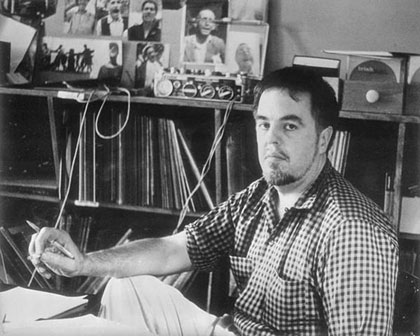 In March 2004, the American Folklife Center in the Library of Congress acquired the Alan Lomax Collection, which comprises the unparalleled ethnographic documentation collected by the legendary folklorist over a period of sixty years. The acquisition was made possible through a cooperative agreement between the American Folklife Center (AFC) and the Association for Cultural Equity, and the generosity of an anonymous donor. The Alan Lomax Collection joins the material Alan Lomax collected during the 1930s and early 1940s for the Library's Archive of American Folk Song, and its acquisition brings the entire seventy years of Alan Lomax's work together under one roof at the Library of Congress, where it has found a permanent home.
In March 2004, the American Folklife Center in the Library of Congress acquired the Alan Lomax Collection, which comprises the unparalleled ethnographic documentation collected by the legendary folklorist over a period of sixty years. The acquisition was made possible through a cooperative agreement between the American Folklife Center (AFC) and the Association for Cultural Equity, and the generosity of an anonymous donor. The Alan Lomax Collection joins the material Alan Lomax collected during the 1930s and early 1940s for the Library's Archive of American Folk Song, and its acquisition brings the entire seventy years of Alan Lomax's work together under one roof at the Library of Congress, where it has found a permanent home.
"The Alan Lomax Collection contains pioneering documentation of traditional music, dance, tales, and other forms of grassroots creativity in the United States and abroad," said James H. Billington, the Librarian of Congress. "We are extremely pleased that this collection has come to our American national library, where its creator did such important work in the 1930s."
He was loved for his warm enthusiasms, generosity, loyalty, and intense interest in people, hated for his high-handedness, his outbursts of Calvinistic fury, and admired and envied for the breadth of his ideas and accomplishments.
The Association for Cultural Equity has made available online the recordings that Alan Lomax made of Poet Jasim Uddin in London in 1951:
Todd Harvey recently discovered two photographs of Poet Jasim Uddin among the materials in our Alan Lomax collection. Courtesy Jennifer A. Cutting, Folklife Specialist (Reference),American Folklife Center,Library of Congress, 101 Independence Ave., SE
Washington, D.C. 20540 - 4610
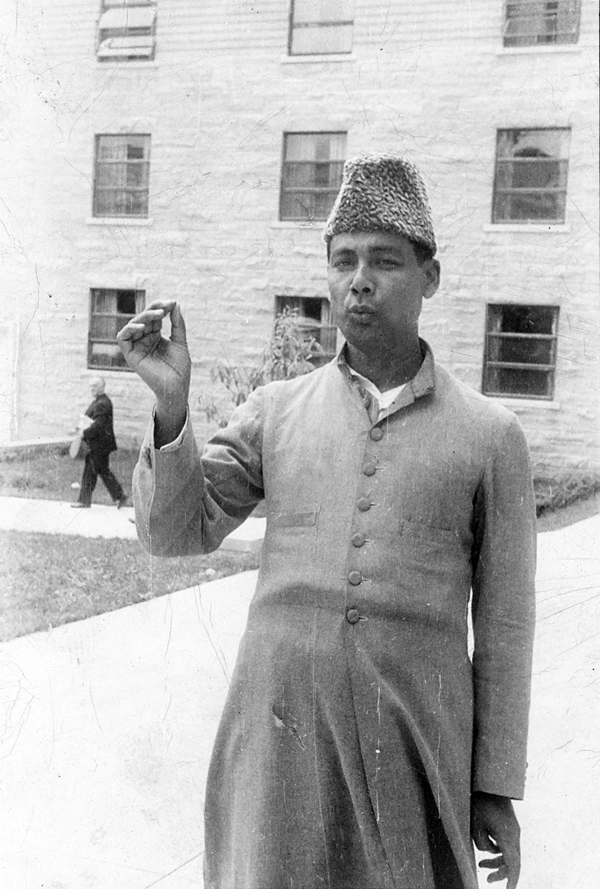 |
 |
Sonny Terry (obscured), Woody Guthrie, Lilly Mae Ledford, Alan Lomax, New York, 1944. Photographer unknown.
From the time he left his position as head of the Archive of American Folk Song at the Library of Congress in 1942 through the end of his long and productive career as an internationally known folklorist, author, radio broadcaster, filmmaker, concert and record producer, and television host,
Alan Lomax amassed one of the most important collections of ethnographic material in the world.
|
Back to Content
31.Jasim Uddin's Rachna Samograh
Published by Dey's Publisher Kolkatta, India 2012
Review by Desh Patriaka, Kolkata, September 2, 2012
Back to Content
Review by Ajkal,Kolkata, 7 April 2012
Back to Content
Ekdin,Bengali Daily,16 February, 2013.
Here is another imprtant piece of review of Smritikathasamagra published in the 2nd May 2013 issue of the fortnightly journal Arek Rakam edited by Ashok Mitra.
Back to Content
32. Jasim Polli Mela resonates with pastoral life in Faridpur - Jasim Uddin's 110 Birthday
A fortnight long 'Jasim Polli Mela', by the Kumar river at Govindapur village under Ambikapur union in Faridpur, resonates with the pastoral life.
The two-week long fair has been jointly organised by the Faridpur district administration and Jasim Foundation with support of BSIC on the occasion of the 110th birth anniversary of poet Jasimuddin.
Expatriates' Welfare and Overseas Employment Minister Engineer Khandoker Mosharraf Hossain inaugurated the fair on January 12.
Inaugurating the fair, Mosharraf Hossain said that Jasimuddin's writings depicted the life, culture, joys and sorrows of the simple rural folk vividly that was unmatched. To preserve the creations of Jasimuddin, the work of 'Jasim Complex' is nearing completion on the premises of the ancestral house of the late poet. A mausoleum and a research centre will be set up at the complex, the minister added.
At 'Jasim Mancha', a discussion was held following the recitation of Jasimuddin's well-known poem "Nimontron", where the poet beckoned in his verse:
Tumi jabey bhai jabey mor shathey amader chhoto gaye?
Faridpur Deputy Commissioner Mainuddin Ahmed chaired the function.
The fair offers visitors a variety of entertainment, including folk songs such as Jari Gaan, Kobi Gaan, Lalon Geeti, recitation, dance, puppet shows and circus.
At Jasim Macha, on the eastern part of the Jasim Udyan (park), well-known artistes and cultural groups from different districts are performing every afternoon drawing a sizeable audience.
Literary works, photos and items used by the poet are being displayed at 'Moni Mala, the poet's house.
Two hundred and seven stalls display handicrafts, everyday items used by rural folk, agricultural tools, delectable sweets, cakes, scented betel leaf and nuts.
Enthusiastic visitors from different districts of the country along with the locals flock to the fair everyday to acquaint themselves with the pastoral beauty of the villages (Daily Star,January 17, 2013).
Back to Content
33.Book launch marking Polli-kobi Jasimuddin's 37th death anniversary
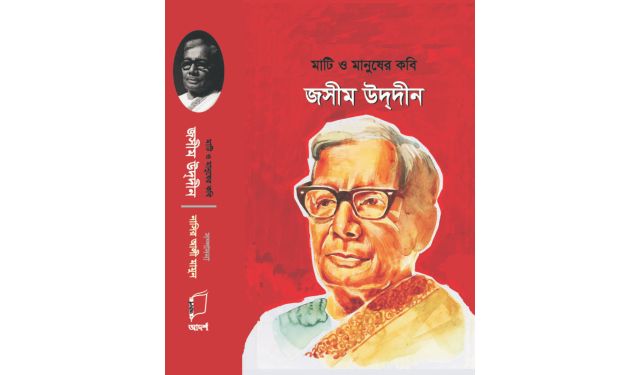
Book launch marking Polli-kobi Jasimuddin's 37th death anniversary death anniversary of "Polli-kobi" Jasim uddin, a book titled "Mati O Manush-er Kobi Jasimuddin" will be launched today at Faridpur Press Club.
The book has been edited by noted portrait photographer Nasir Ali Mamun. Adarsha Publication House has published the book. The 900-page book has over hundred articles on the poet.
Contributing writers are: author Alauddin Al Azad; music exponent Dr. Sanjida Khatun; poet Shamsur Rahman; poet-author Syed Shamsul Haq; poet Abu Hena Mustafa Kamal; poet Al Mahmud; educationist Professor Anisuzzaman; educationist Dr. Serajul Islam Chowdhury; Shamsuzzaman Khan, director general of Bangla Academy; poet Abdul Mannan Syed; folklorist Dr. Ashraf Siddiqui; Tagore expert Shibnarayan Roy (India); writer Achintya Kumar Sengupta and others.
Nasir Ali Mamun said, "I have been working on the book for the last six years. I went to Kolkata and many parts of Bangladesh to collect the articles and documents. Eminent writers of Bangladesh and India have contributed to the book."
From childhood to literary life, memorable moments from the poet's life have been documented in the book — presenting a lively and intimate insight. Readers will get a detailed impression of the poet's contribution to Bangla literature from the book.
The book launch, in Faridpur, will also include a discussion. Professor Mahbubur Rahman, Principal of Faridpur Rajendra College, will be present as chief guest at the programme. Professor Hasina Banu, Principal of Sarada Sundari Mohila College, will be present as special guest. Senior journalist Jagadish Chandra Ghosh; Dr. Jamal Anwar (son of Jasimuddin); cultural activist Altaf Hossain; Tagore expert Dr. Biplob Bala; and publisher Mahbubur Rahman will be present as discussants.
Known to Bengalis as "Polli Kobi" (folk poet), Jasimuddin's poetry is a testament to the simple, timeless appeal of rural Bengal and folk life. His poetic rhythms are drawn from folk elements - easy on the ear and quick to embed themselves in the memory. He was also a writer of fine prose — fluent, witty, and expressive.
Jasimuddin was born on January 1, 1903 at Tambulkhana in Faridpur. He completed BA and MA in Bangla from the University of Calcutta in 1929 and 1931 respectively. In 1938 he joined the University of Dhaka as lecturer. He left the university in 1944 to join the Department of Information and Broadcasting. He continued working there, until his retirement as Deputy Director in 1962.
His first book of verse, "Rakhali", was published in 1927. Other notable books by him include "Nakshi Kanthar Math" (1929); "Shojan Badiyar Ghat" (1933); "Rangila Nayer Majhi" (1935); "Matir Kanna" (1951); "Suchayani" (1961); "Padma Nadir Deshe" (1969) and "Beder Meye" (1951). He edited two books on folk music: "Jari Gaan" (1968) and "Murshidi Gaan" (1977).
Jasimuddin died in Dhaka in 1976 and was buried in his own village (Daily Star, Thursday, March 24, 2013.
Back to Content
34.Slum Girl: a melancholy of Poet Jasim uddin
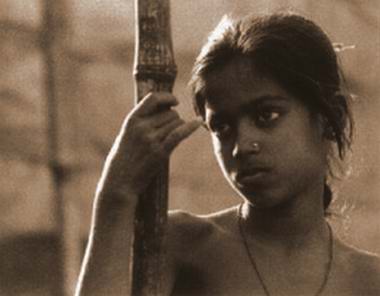 Jasimuddin (1903-1976) is distinctively recognised as Polli Kobi (The Rural Poet), for his faithful rendition of Bengali folklore in his works. He illustrates the culture, tradition, natural beauty and scenario through his multihued pen. His writings make our insipid urban life blissful and amusing as well as turn us to visual rural imagination by poetic sensuousness. Jasimuddin (1903-1976) is distinctively recognised as Polli Kobi (The Rural Poet), for his faithful rendition of Bengali folklore in his works. He illustrates the culture, tradition, natural beauty and scenario through his multihued pen. His writings make our insipid urban life blissful and amusing as well as turn us to visual rural imagination by poetic sensuousness.
The world of Jasimuddin is often considered cherubic and angelic village where hamlet, tree shade, boat, river, soft grass and meadow constantly whisper.
Besides all of these, Jasimuddin has another different identity. He holds a revolutionary and conscious view wherever he finds any social injustice or deprivation and depicts it through his pen. Slum Girl (Bostir Maya) is one of them that are compiled in Matir Kanna (The weep of mud) in 1951. In Slum Girl, the poet draws the common problems of village life, poverty and dilemma. He addresses the girl as his sister,
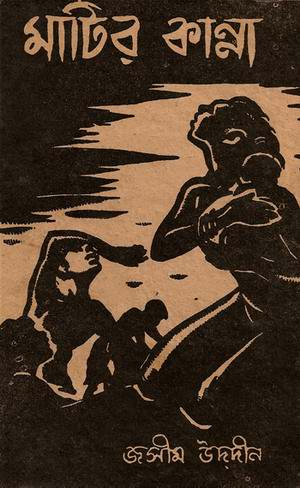
"Slum sister, I have to go leaving you today
As long I go you will be kept in mind foreverRemembering, that within steamy fetid blind alley
My little sister passes day with pale attire"
Jasimuddin exposes how the slum girl passes her life with starvation and wretched attire. Want is the everlasting companion of her. He avers that if she gets any opportunity to carry on education, she ought to cut a tremendous figure knowing different unknown, reading various world works of art. The poet becomes flabbergasted at her keen desire for schooling. The poet hopes that education or getting opportunity to go to school can save her from this agony and social torment.
Jasimuddin draws a heartbreaking picture,
If anyone admits her in a school
How many books she would read, know how many
She would read herself and teach other, through her cuddle
Children of the earth could be laughing being educated.
Oh alas, no one makes the chance to do,
She will live in darkness of ignorance.
Then she will be a wife of an ignorant husband
And pass her life carrying the burden of unbearable indigence.'
It is unquestionably a protest against social injustice and deprivation. He affirms it is the societal and individual liability to depict that sort of people.
In another poem, he assets,
I see my God
In the thatch of indigent people
The tears of pauper impoverished people
Where fall in drops.
In that judgment of the poet, God exists in the thatch of underprivileged community and claims to see how we treat them. In other, he draws an icon of pauper village girl, ‘Asmani'. Jasimuddin expresses a deep pensive mood as well as a rebellious tone to illustrate their sad livelihood.
Through folk and lucid dictions, he depicts a sophisticated proposition about how to get rid of these social torments and injustices.
As a poem, "Slum Girl" bears out its poetic tone and expression asserting various literary terms and makes splendid work of genius.
The poet draws the girl's life as a child who sucks the breast of earth with her crimson tongue.
He represents social injustices and prejudice as a serpent and acclaims someone who can tear down this hideous poverty and deprivation.
The poet states that this slum girl does not cause any impairment to anyone, so why these afflictions to her?
Where is the social justice? Where is the penalty of nature? Where is the sagacity of the entire human being?
Afterward the poet resonances,
It is injustice. Who stands against it today?
By whose fiery voice, thunder descends from the firmament
Who will burn this full of inequality, fake social bondage?
To him, I am writing my melancholy today
Abdul Awal and Jahanara Begum, Daily Sun, February 11, 2013
35.Critic on "Jasim Rachna Samogro" by Subir Chakroborti, Kolkata, India 2013
35.Critic on "Jasim Rachna Samogro" by Subir Chakroborti, Kolkata, India 2013
Published in Natun Kabisammelan, Saredio 2013, Kolkatta, India by famous literature critic Sri Subir Chakroborti
Jasim Uddin's mother and eldest son Hashu
Back to Content
36.Review of Smritikathasamagra in Sangbad Protidin(23.11.13) by Alok Roy, Kolkata, India
Back to Content
37.Champabati after Jasim Uddins Bedermeya (Gypsy Girl)
Chompaboti: Rising from the East
The main lyric/ song of Bedermeya - Gipsy girl
Snake Charmer / Babu Selam Lyric and Music Jasim Uddin dance by Shibli & Nipa
|
O babu, many salams to you
My name is Goya the Snakecharmer,
My home is the Padma river.
We catch birds
we live on birds
There is no end to our happiness,
For we trade,
With the jewel on the Cobra's head.
"We cook on one bank,
We eat at another
We have no homes,
The whole world is our home,
All men are our brothers
We look for them
In every door….."
(Jasim Uddin)
|
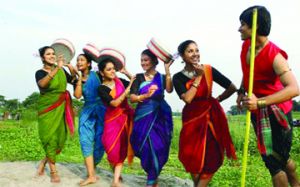 After a number of successful productions, Shadhona Cultural Circle, a familiar name in the subcontinent's cultural arena,
has a new production in the pipeline: "Champabati" - a dance drama, incorporating folk art forms. After a number of successful productions, Shadhona Cultural Circle, a familiar name in the subcontinent's cultural arena,
has a new production in the pipeline: "Champabati" - a dance drama, incorporating folk art forms.
"Champabati an adaptation of poet Jasimuddin's much acclaimed drama "Beder Meye",
is all about women; their inner strength and the courage with which they deal with the adversities of life. Adapted by Syed Shamsul Haq, it articulates the stories of Champa , the beautiful and vociferous snake-charmer, Maleka, the feisty wife of the village head, and young Asmani, the wife of Champa's ex-paramour, Goya.
"Champabati" is also a narrative on the interactions between the wandering "Bede" (gypsy) community and the orthodox villagers of Bengal.
It's about different ways of life, interspersed with the tales of these three women. The author, Syed Shamsul Haq in this drama rightly said, "As the bird soars high in the sky, it leaves behind its plume. A woman's life inscribed with water merges too into the water."
Shadhona has been working with diverse folk art forms of the region like Lathi Khela and Raibeshe - a martial dance form of Bengal that goes back almost 2,000 years to the time of Raja Pratapaditya.
The production also extensively uses other traditional dance forms - Jhumur, Bihu, Pata, Chhau of Purulia and Mayurbhanj and Kalaripayettu of Kerala. Incorporation of these different dance forms lends diversity to "Champabati".
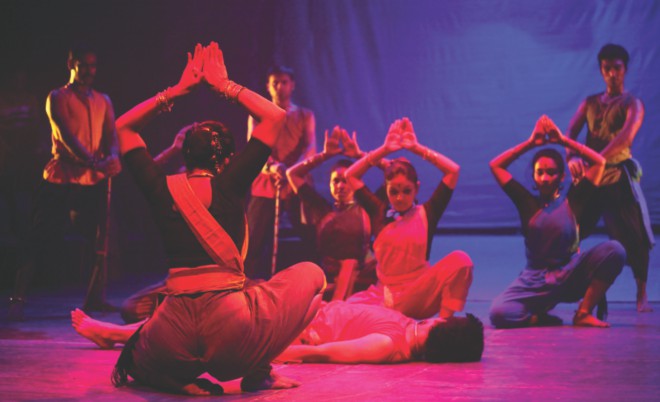 We, children of the '80s, grew up on a steady diet of unimaginative, dull, and to some extent, insufferable, "snake dance", "fishermen's dance" and "farmers' dance" (aired on good old BTV). We were told by elders that these were our heritage. These are the performances that define rural, agrarian East Bengal. We, children of the '80s, grew up on a steady diet of unimaginative, dull, and to some extent, insufferable, "snake dance", "fishermen's dance" and "farmers' dance" (aired on good old BTV). We were told by elders that these were our heritage. These are the performances that define rural, agrarian East Bengal.
At this point I feel the need to explain what a Champaboti:Rising from the East stereotype is: "A conventional, formulaic, and oversimplified conception, opinion, or image."
Stereotypes and clichés don't have to be bad things. IF you can own it, hone it, take pride in it and can astound the world with it.
That's how I'd articulate Shadhona's latest production “Chompaboti”. It is essentially all about wandering snake charmers; simple, hard working rural folk; the sinister yet buffoonish village headman; objectification and abuse of women ... the usual. "Chompaboti" is an adaptation of poet Jasim Uddin's "Beder Meye" by poet-playwright extraordinaire Syed Shamsul Haq.
The premiere show was held at the Experimental Theatre Hall, Bangladesh Shilpakala Academy on October 25.
I won't give out a detailed synopsis: for one, I don't think it's necessary, and I'd like everyone to have a magical experience (as I did) when they see it for the first time.
In a nutshell, Chompa is an embodiment of Behula, Savitri, Sita and all the heroines traditional Bengali literature upholds and celebrates - beautiful belles whom every male wants and objectifies, who must guard their "dignity" as defined by a patriarchal society, whose beloveds betray them and move on while they wallow in agony and are always ready to embrace martyrdom for the sake of the beloved.
So far, so clichéd, right? Then why did this production work? And not just work, but excel with flying colours? For starters, artists of Shadhona worked their tails off researching on and training in folk art forms such as "Lathi-khela", "Raibeshe”, "Jhumur" and "Chhau". They incorporated contemporary elements like “glow in the dark/neon” dance which hasn't been used in dance productions here.
Note to the Government high-ups who decide which artists/troupes would represent Bangladesh as delegates at international cultural events: I do realise I'm in no position to make recommendations, but I strongly believe this production deserves to represent Bangladesh, and can make us proud.
This is not a review; it's a heartfelt appreciation. I'd like to argue that Shadhona has been doing what no one else has in the contemporary cultural scene. Awestruck. Indebted.
What gives the age-old narrative a new life is its unusual music. "Champabati" boasts a number of musical tracks by Anusheh Anadil, Nirjher Chowdhury, Rokon Emon, Shofi Mandal, Duniya, and Nadia Dora.
Shabbir Ahmed Khan has directed the production, while Shamim Hasan has done the dramatic direction. Zahidul Kabir Liton is the music director of the production. Nirjher Chowdhury and Rokon Emon have redone the musical arrangement, which was initially designed six years ago by Durbadol Chattopadhyay of Kolkata.
(DAILY STAR; Karim Waheed, November 23, 2013)
| /images/mozina.jpg" alt="" width="620" height="385" border="0" align="left"> |
Polli Kobi Jasimuddin's poem Kabar (The Grave) brought tears to the US ambassador's eyes when he read it at the poet's graveyard.
"I'll never forget being at the home of the poet Jasimuddin," Dan Mozena said as he recalled the memories of his cross-country tours on Wednesday.
He said he read the poem beside his tomb. "I was in tears , I was in tears when I read that".
The celebrated poem "Kabar", which found a place in the Bengali textbook when the poet was still a student of Calcutta University, tells the story of a family bondage and tragedy in a simple tone.
During his visit, he stopped at all historical places including Mujibnagar where the first government of independent Bangladesh was formed in March 1971, Bangabandhu's graveyard at Tungiparha, Rabindranath Tagore and Jasimuddin's homes.
Jasimuddin's grave is situated on the bank of river Kumar on the outskirts of Faridpur district.
Mozena said during his tours, he found people were very much appreciative of them.
"Bangladeshi people are the warmest and most hospitable people in any place I have ever been to in my life," he said.
(Senior Correspondent, bdnews24.com, Published: 2014-10-02 00:47:19.0 BdST Updated: 2014-10-02 01:17:53.0 BdST)
Back to Content
39. A tribute to Jasimuddin, Daily Star, May 30, 2015
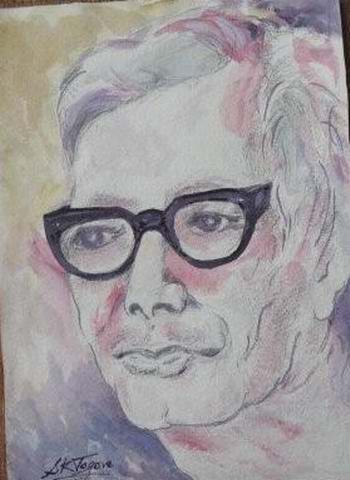 Polli Kobi Jasimuddin is widely acclaimed as one of the best representatives of Bangladesh's folkloric tradition. Famous litterateur Dr. Dineshchandra Sen once wrote that 'His [Jasimuddin] poetry appears like the breeze from the countryside that cools the sighs and sweat of urban living. He is congratulated for creating a new school of poetry.' March 14 marks the 39th death anniversary of this great poet. We dedicate this page to celebrate his life and work. Polli Kobi Jasimuddin is widely acclaimed as one of the best representatives of Bangladesh's folkloric tradition. Famous litterateur Dr. Dineshchandra Sen once wrote that 'His [Jasimuddin] poetry appears like the breeze from the countryside that cools the sighs and sweat of urban living. He is congratulated for creating a new school of poetry.' March 14 marks the 39th death anniversary of this great poet. We dedicate this page to celebrate his life and work.
As old Greece had its Iliad and Odyssey and old India its Mahabharata and Ramayana, so modern Bengal does its Nakshi Kathar Math and Sojan Badiar Ghat. Good old great poems of the Ionian and Indian peninsulas, as everyone knows, are epics. And our two modern poems, however, belong to the genre of things known as ballads or sagas if you will. They are significantly named for a peasant society: Math and Ghat, i.e. field and wharf, in that order. But they are two, one almost says twin, ballads of modern Bengal, a country of two (or more) rivers, of two (or more) communities, a country that is no more, or almost no more. And Jasimuddin (occasionally 'Jasim Uddin' in a manner of rendering in English) is their author. Let us say a few words about the poet before turning to the poems themselves.
Jasimuddin was born on a very convenient date, namely January 1, 1903. It may be perhaps more of a legend than real. His place on earth is however less prone to legendary treatment. Tambulkhana, in Faridpur, is a lesser village where the poet was born. It is some eight miles off Govindpur, the village on his father's side where he grew up. 'I had been born and brought up,' to put it in Jasimuddin's own words, 'in a village populated entirely by cultivators, and the folk songs were in my blood.' Jasimuddin then did not have to look further up than his own folks for his motifs, fields and wharfs. Jasimuddin's work is about the folk, as Verrier Elwin said it many years ago. 'I do not know whether The Field of the Embroidered Quilt can be classed as folk-poetry, but it is obviously poetry about the folk.' It is in fact a little more than that as we will presently see.
Dineshchandra Sen, Jasimuddin's early mentor, too wrote: 'I consider Maulvi Jasimuddin's Nakshi Kathar Math as one of the best lyrical poems in our language.' Writing three quarters of a century later the present writer would likewise concur. 'Its pastoral descriptions and a unique array of picturesque scenery introduced off and on in this love tale,' reasoned Sen, that grand old chronicler, 'will acquaint one with the purity, strength, devotion and poetry of Bengali domestic life.' 'The author's penetrating insight into the very character of our masses, his talented grasp of the characteristics of feminine feelings,' Sen remarked, 'have invested the poem with life-like presentation of the moral and cultural traits of Bengalis.'
'In fact,' Sen went on saying, 'I do not know of any modern poets who have such an intimate knowledge of this beautiful land of ours.' Why on earth, one wonders. Western civilization or the new education, its grand trope, spreading out from Calcutta, 'reaching the remotest country town where any middle class inhabitant aspired to be educated,' belonged to the town and its denizens, the middle classes. It brought many challenges along with the well churned out responses.
'It created its own culture and its own literature,' Jasimuddin wrote in the 1950s, 'with themes and rhymes which were partly European in spirit, and partly linked up with the upper levels of culture in other parts of India. Almost every literate man's eyes looked westward. The songs of the middle classes were sung to the accompaniment of modern European instruments such as the violin and the abominable portable harmonium, and the traditional instruments of Bengal fell out of fashion.' 'In the dazzling light of the western sun,' as Jasimuddin's own metaphor has it, 'the little earthen lamps with which people used to see into the corners of their own rooms had lost their power of illumination. They look out at the whole world, but the beautiful things which lay at hand were hidden from sight.'
By the turn of the twentieth century, Jasimuddin laments, there was hardly anyone around to dare turning the tides about. Even Rabindranath Tagore, for all his fame, was writing for the middle-classes. 'He hesitated to present the old tunes in their original form to people who would have despised them.' 'What he did,' Jasimuddin noted, 'was to create 'a kind of sophisticated version of them.'
It is at this conjuncture that Jasimuddin finds himself in the middle of a small group of middle class ballad-collectors under Dineshchandra Sen. Jasimudddin was already there before he would be looking out with Sen to find out his own passage to modernity. Let's get it from the horse's own organ: 'To me, unlike [Dineshchandra] Sen, the tunes meant even more than the words: they embodied the meaning of the traditional life I loved. They made me mad with their beauty and power, and I was set on making the reading public understand what was in them. It was not only for the sake of the reading public; it was a question of preserving the life of the tradition itself.'
Thus speaks our modern poet out loud: one awaited the poet who will have loved the new learning but will give no short shrift to old treasures either. 'The old songs and ballads were too long-drawn-out for the new time-conscious man to spend hours listening to them: they repeated themselves interminably and were full of ideas and incidents unpleasing to the modern mind. Yet there was so much in them that might have been preserved. Had there been any great mind with a touch of poetry, someone who loved the new learning and loved his country's past, it might have been possible to save both. The old songs and tunes, still alive among the people could have been collected and revised, purged of their corrupt and outworn elements and recreated. They might have become a link, making the people's mind intelligible to the educated man and bringing the new outlook down to the consciousness of the illiterate.'
In the ballad Sojan Badiar Ghat [rendered Gipsy Wharf in English] modernity already arrived in the guise of communal riots. Sojan, the lover, is a Muslim man and Dulali, his beloved, is a Namasudra woman or a Hindu of the 'scheduled' caste in the colonial register. As Barbara Painter, translator into English, notes, 'Sojan and Dulali were destined from the beginning to be ill-starred lovers. It is not acceptable for them to marry outside their fellow religions and elopement into the forest seems the only solution. For some time they live happily in their forest cottage, but eventually Sojan is caught and imprisoned. Dulali is remarried by her orthodox parents to a farmer in a distant village. When Sojan is released from jail he finds his family gone, his village disrupted and his beloved remarried. In despair he joins a band of wandering water gypsies.'
Further: 'In his wanderings with the gipsies, Sojan has been living in the hope of finding Dulali. When he finds her in the water-side village happily remarried, she at first rebuffs him for seeking her out. Then her love for him proves too strong. She steals away in the night, and rejoins Sojan, only to find that his grief at her cold reception has led him to take poison. She takes poison too and the lovers die like Romeo and Juliet.' 'The two communities, however, do not embrace each other because of this tragedy,' thus concludes Barbara Painter her melancholy introduction to the UNESCO edition of the poem in 1969.
Relations between the Muslim and the Namasudra communities in certain districts of lower Bengal, including Faridpur, have been tense since the beginning of the twentieth century. In 1933, when Sojan Badiar Ghat saw the light of day, things could not have been worse. The question of communal award was taking its toll. Times could not be more unpropitious in Bengal to depict Hindu-Muslim affairs in such terms. It is a pity to learn that Jasimuddin was accused of nurturing a communal (i.e. pro-Muslim) bias, in writing this ballad. Many, including the eminent Suniti Kumar Chatterjee and the learned Narendra Dev, reportedly joined the fray. Such misunderstanding was in fact symptomatic and was part of the times. Jasimuddin's ballad of the gipsy, in retrospect, seems to have been a prophetic saga. The partition of Bengal was anyway not far away, a decade and a half at most.
Jasimuddin's political outlook is not naïve. On the contrary, it was a remarkably 'communitarian' worldview that he embraced. His was emphatically not a 'communal' outlook at all. He will be the last man to disregard ruling contradictions among the people. He in fact grasps it well how trouble might arise out of nowhere when the milieu is always already brittle, as was the case of a quarrel at the Muharram festival in the village of Shimultali. Jasimuddin however misses no opportunity to identify the role of the privileged classes, personified aptly in the Naib, or rent collector for the bhadralok Zamindar in stirring up the riots.
Although historians of modern Bengal give it habitually a short shrift, one ignores the communal tension at a great cost to their professional integrity. Since the end of the 19th century relations between the two communities in southern and south central Bengal had been very tense. 'There was always a strong under-current of ill-feeling and whenever petty incidents occurred between individuals, large numbers on both sides would be ready to vindicate the honour of their respective communities,' writes Sekhar Bandyopadhyay.
Communal collisions were legion between circa 1911 -1947.
But their configurations changed midway quite palpably for those who have an aptitude for analysis. The Muslim-Namsudra relations were 'seriously agitated during the convulsions of 1911 in Jessore-Khulna'. As Sekhar Bandyopadhyay enumerates, two years later in 1913, a dispute culminated in violence at Silna, a marketplace near Gopalganj. Likewise, in the same year 'there was also a disturbance at Tarail in Kasiani police station. And then during the Non-cooperation [also the Khilafat] movement a political dimension was added to the already embittered relationship.' It continued till 1921-22. In the high tide of Non-cooperation movement, the Muslims and the Namasudras found themselves on the opposite sides of the fence.
Things overturned themselves, however, by 1925-26. By then, when the Khilafat movement had died down, 'the two peasant communities were again coming closer, if not in Faridpur, then definitely in other surrounding districts, against the Hindu bhadralok and their nationalist agitation.' 'In Narail subdivision of Jessore the Muslim and Namasudra sharecroppers has already combined again under the leadership of Nausher Ali to demand two-thirds share of the produce from their caste Hindu jotedars,' notes Sekhar Bandyopadhyay. And this was to prove their undoing. 'The movement which continued for greater part of 1924-25 was dubbed by the Congress as communal and was repressed ultimately by the police.'
Jasimuddin had these convulsions in mind when he undertook his task. No individual, not even a poet of such integrity, would prove equal to these trends of the times. Until partition in 1947, the tides were not to subside. After 1947, on both sides of the fence, as they say, it's a different story.
(Salimullah Khan, The writer is Professor at General Education Department, ULAB).
Back to Content
40. Review in Kaali O Kalam, August 2015,ed. by Malaychandan Mukhopadhay
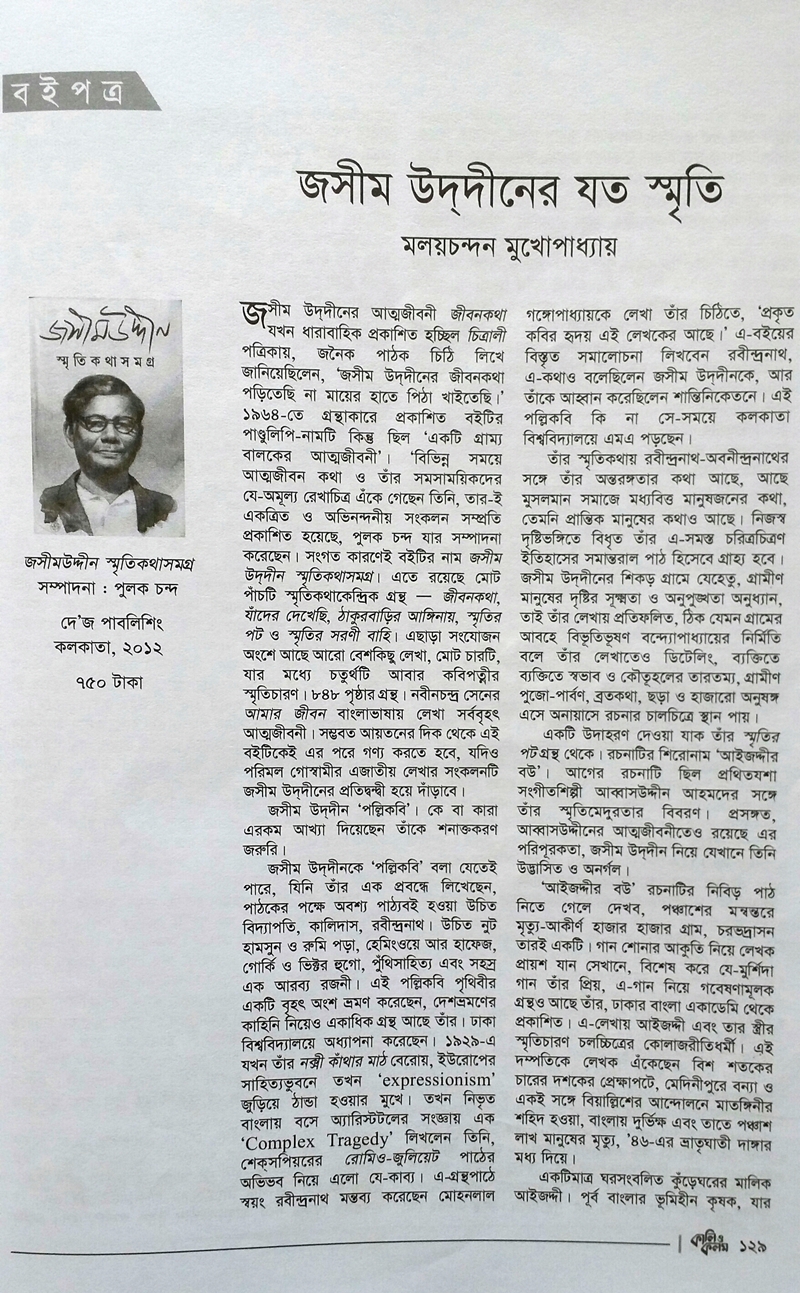
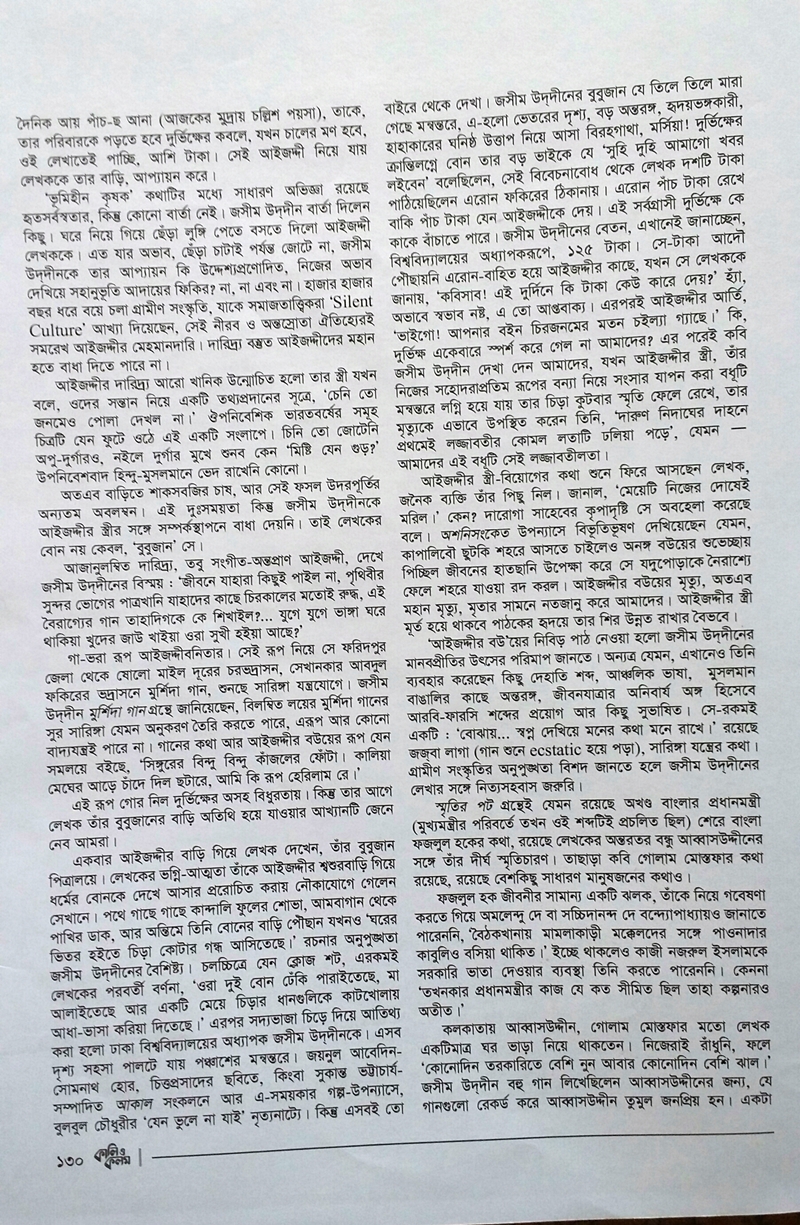
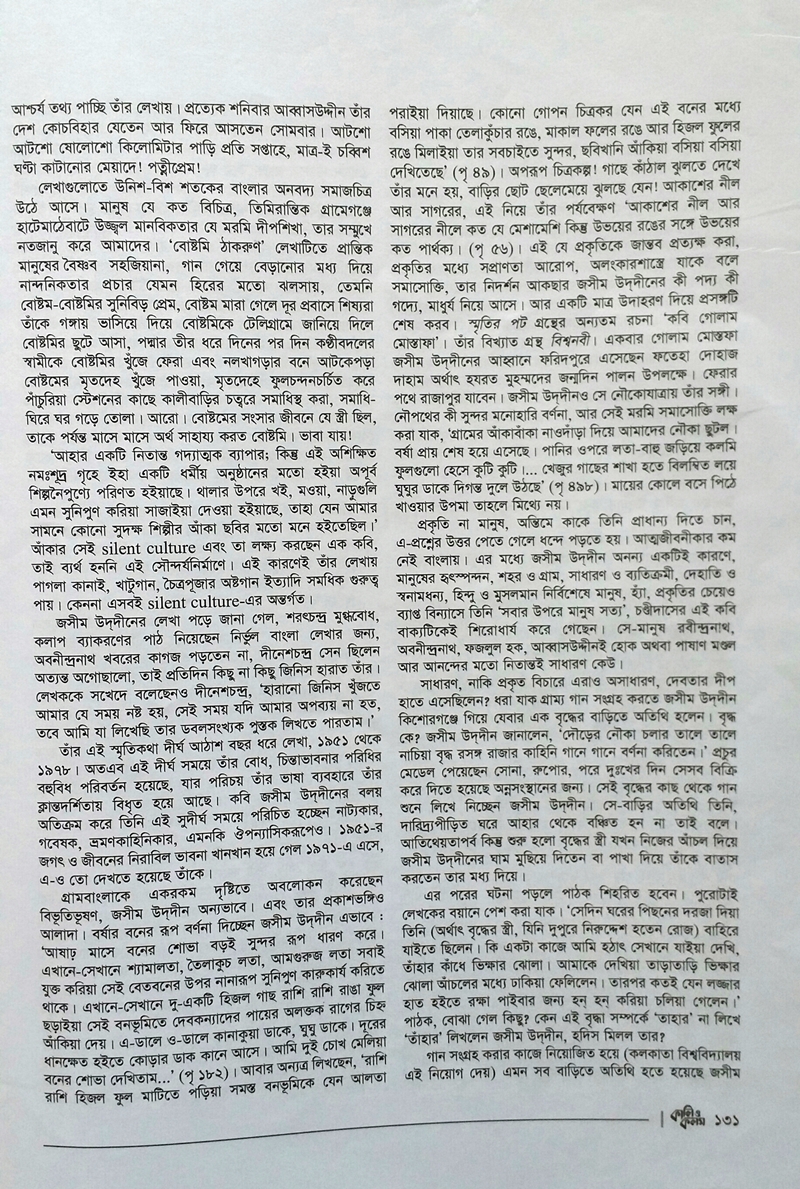
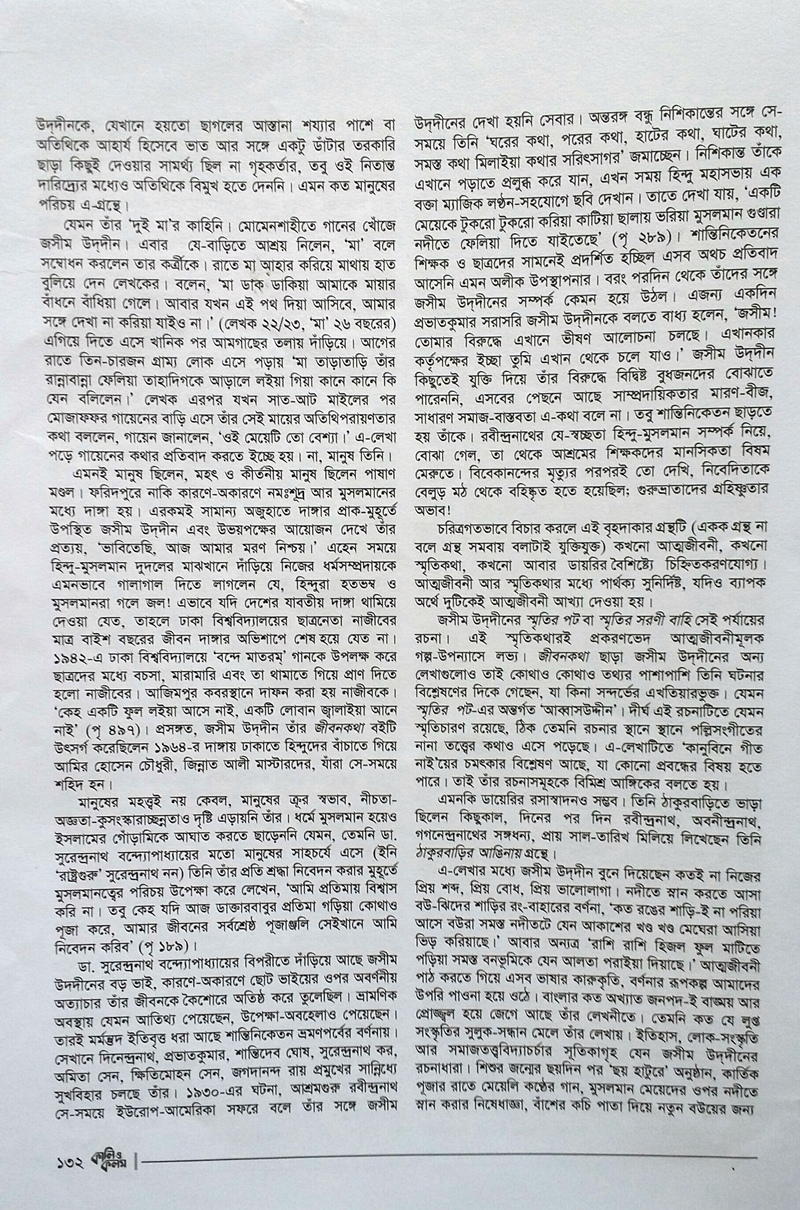
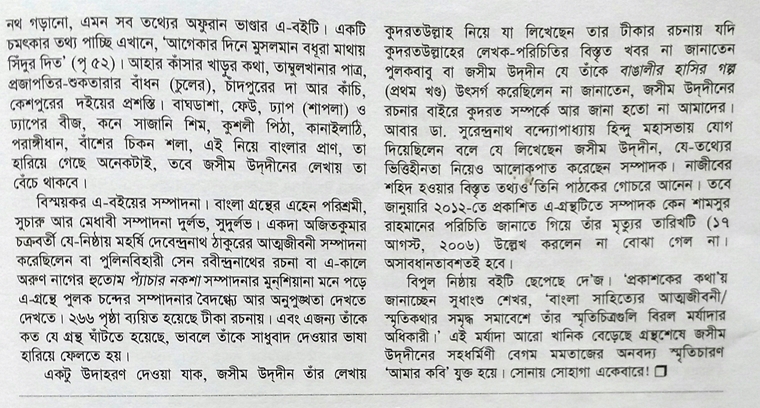
Back to Content
41. Review in SRISTIR Ekush SATAK January 2015 by Bishodip Dutta
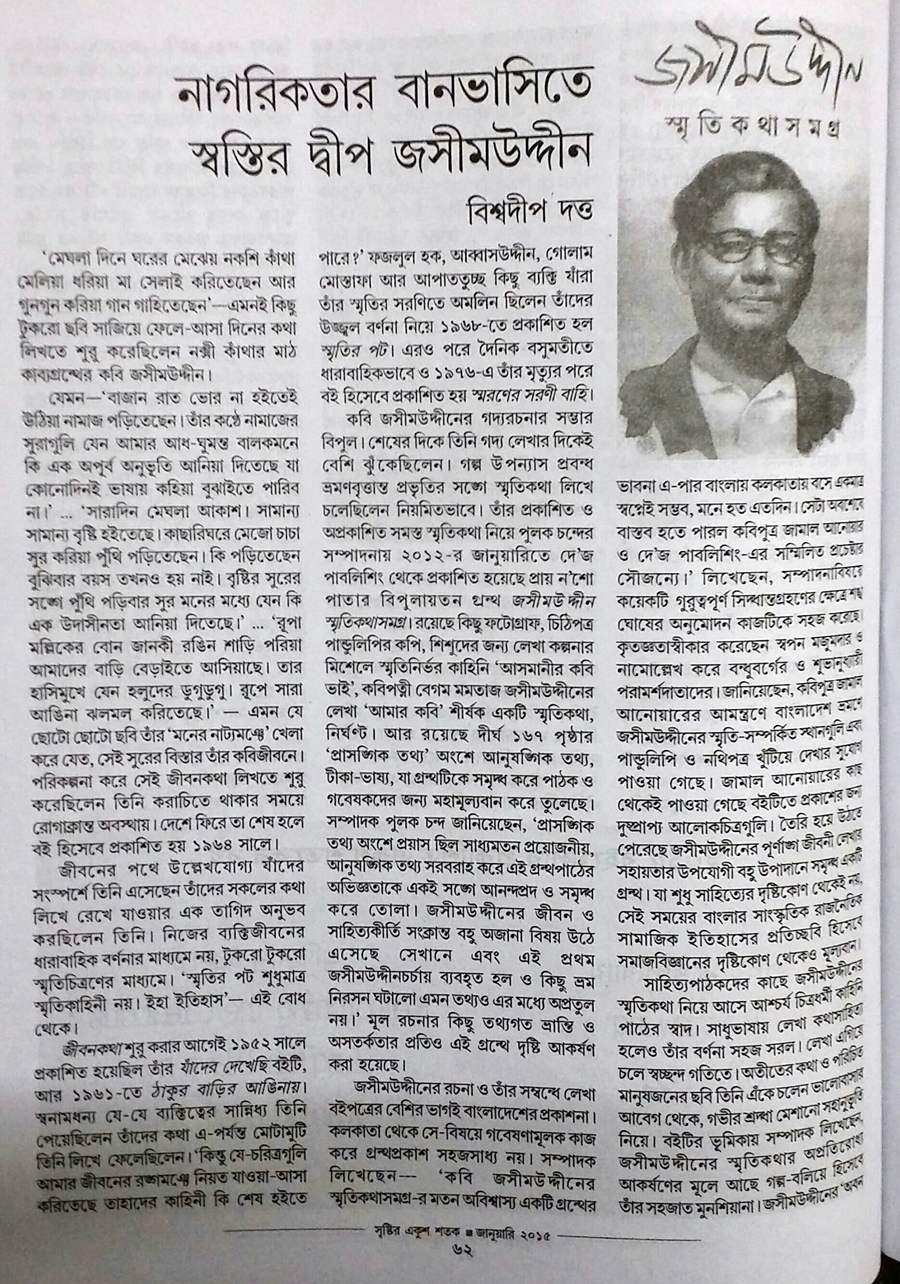
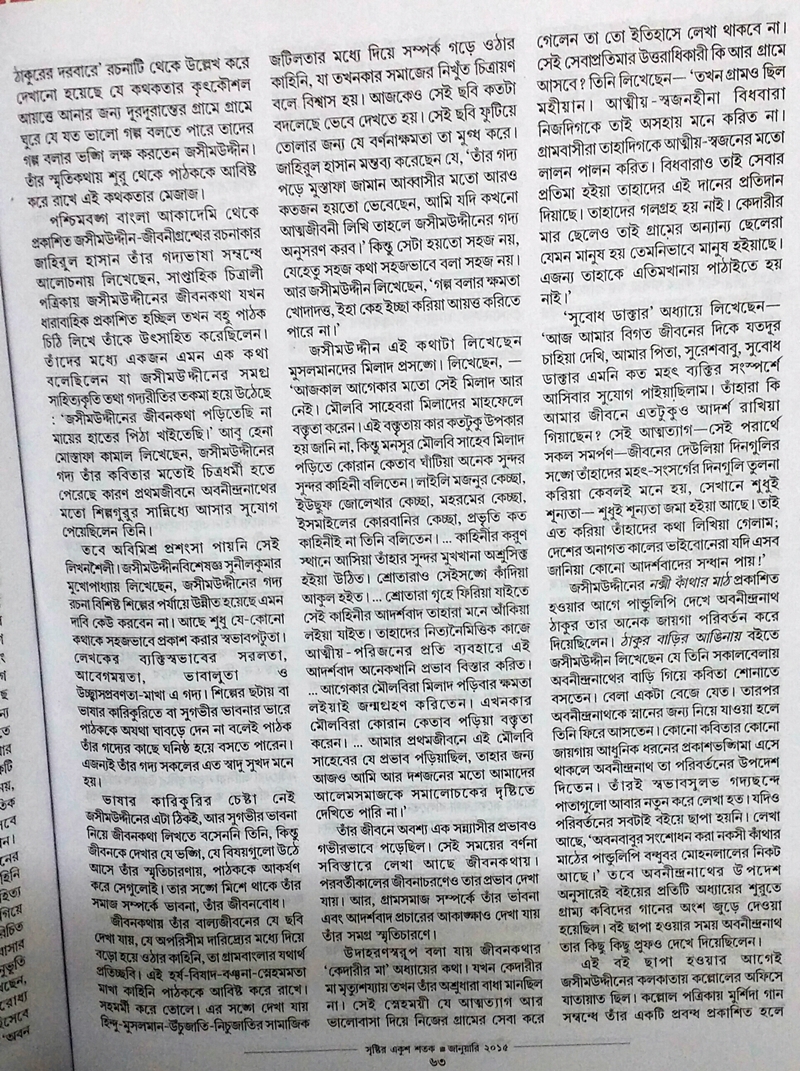
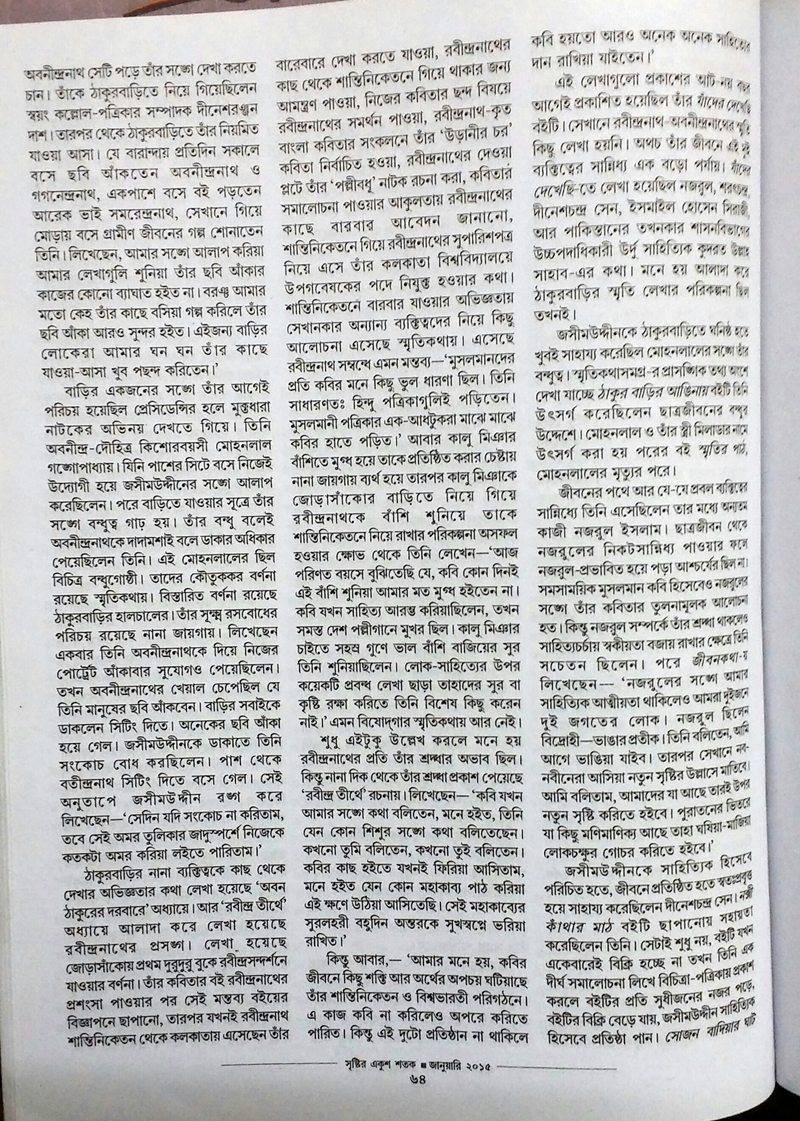
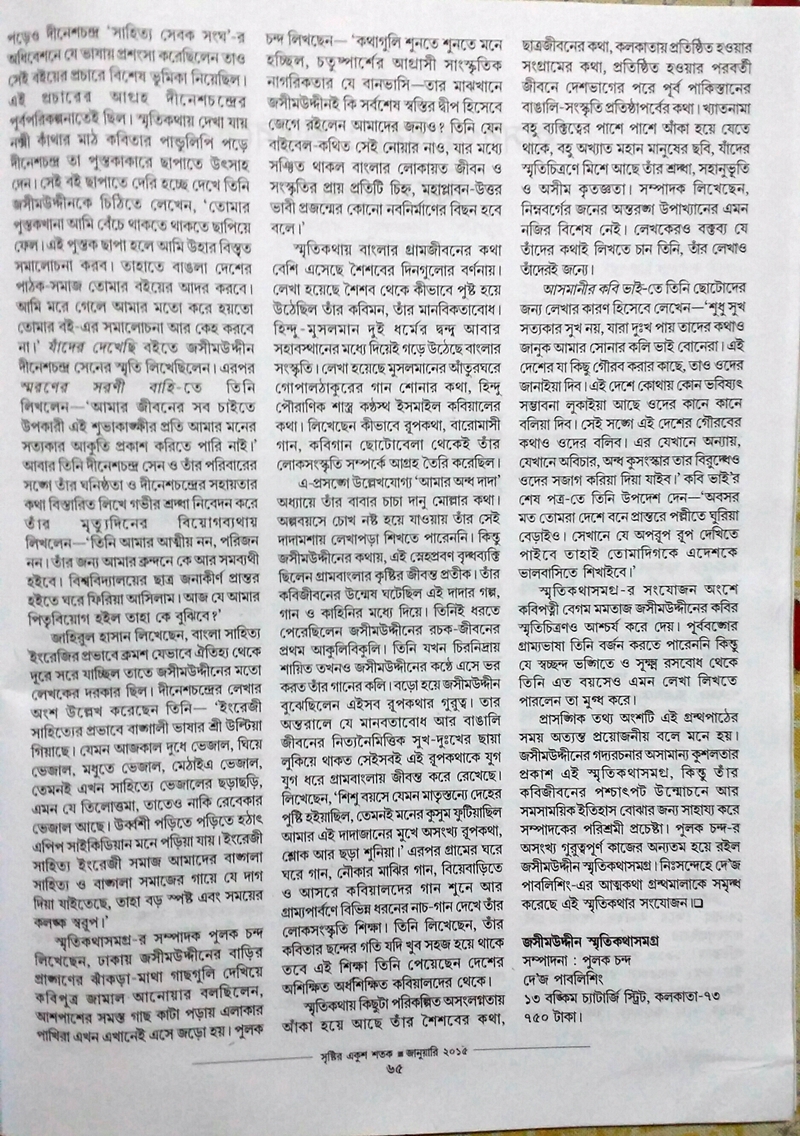
Nakshi Katha by Suraya- youtube
Home
Back to Content
Last Modified August 29, 2015 |
|